शूर बाहुषु लॊकॊ ऽयं लम्बते पुत्र वत सदा
तस्मात सर्वास्व अवस्थासु शूरः संमानम अर्हति || 17
न हि शौर्यात परं किं चित तरिषु लॊकेषु विद्यते
शूरः सर्वं पालयति सर्वं शूरे परतिष्ठितम || 18
तस्मात सर्वास्व अवस्थासु शूरः संमानम अर्हति || 17
न हि शौर्यात परं किं चित तरिषु लॊकेषु विद्यते
शूरः सर्वं पालयति सर्वं शूरे परतिष्ठितम || 18
Arms of the brave (kshatriya) always support and sustain the people like (a father his) son.
A brave (kshatriya) is, for this reason, honoured by all, in all situations.
There is nothing in all the three worlds, which is beyond (the reach of) bravery.
Brave (kshatriya) sustains all, and all depend upon the brave.
A brave (kshatriya) is, for this reason, honoured by all, in all situations.
There is nothing in all the three worlds, which is beyond (the reach of) bravery.
Brave (kshatriya) sustains all, and all depend upon the brave.
(Mahabharata, Shanti Parva, 99. 17-18)
Rajput, (Sanskrit: raja-putra: "son of a king") is a hindu kshatriya caste. The Rajputs trace their origins to the ancient Kshatriya dynasties of India. It is estimated that currently there are 12 million Rajputs.
Attn: For Low Bandwidth Version of this page please click here Rajput. Also if Hindi fonts are not rendering correctly on your computer please click here Enabling complex text support for Indic scripts
Attn: For Low Bandwidth Version of this page please click here Rajput. Also if Hindi fonts are not rendering correctly on your computer please click here Enabling complex text support for Indic scripts
Contents
- 1 Definition
- 2 Origins and Geographical Presence
- 3 The Rajput Rule of India
- 4 Character
- 5 Rajput Armies
- 6 Rajputs and Invasions of India
- 6.1 Organization of Indian kingdoms during invasions
- 6.2 Partial list of Rajputs who fought the invaders
- 6.2.1 Bappa Rawal
- 6.2.2 Vidyadhar Chandela
- 6.2.3 Prithviraj Chauhan
- 6.2.4 Hammir Dev Chauhan
- 6.2.5 Rawal Ratan Singh,Gora,Badal
- 6.2.6 Maharana Hammir
- 6.2.7 Maharana Kumbha
- 6.2.8 Rana Sanga
- 6.2.9 Rao Maldeo Rathore
- 6.2.10 Maharani Durgavati
- 6.2.11 Maharana Pratap
- 6.2.12 Maharajah Jaswant Singh
- 6.2.13 Durga Das Rathore
- 6.2.14 Banda Bhadur
- 7 Protection of Hinduism
- 8 Prominent Rajput clans & their main centers
- 9 List of Famous Modern Day Rajputs
- 10 References
Definition
Rajputs (Rajaputra) are a sub-group of hindu Kshatriya varna. They have a hindu Jati (an endogamous group within the Hindu social system). Rajputs are literally sons-of-kings. They are divided into 36 major clans, names of which are recorded in several texts including the Kumarpala Charita of Jayasimha, and Prithviraj Raso of Chandbardai.
The Rig Veda is the first and most important of the four Vedas and rajput rishis (rajrishi) are mentioned in it. To each of its hymns the name of the seer or Rishi to whom it was revealed is prefixed. It thus becomes evident on the authority of these very names (such as Vasishta, Viswamitra, Agastya, etc.), all of which belong to men born in various manvantaras, that centuries, and perhaps millenniums, must have elapsed between the dates of their composition. The Gayatri, the most sacred hymn of the Rig Veda, is taken from the third of the ten cycles of hymns, the cycle of the Rajaputra Sage Viswamitra.
राजपुत्रौ कुशलिनौ भरातरौ रामलक्ष्मणौ
सर्वशाखा मृगेन्द्रेण सुग्रीवेणाभिपालितौ
The two brothers, rajaputra Rama and Lakshmana, fare well protected by Sugriva, the lord of all monkeys.(Mahabharata, Ramopakhayana, 3.266.61)
Bhagwan Ram and Lakshmana are referred to as Rajaputra in Mahabharata. Bhagwan Buddha was also referred to as Rajaputra in Buddhist texts. Dr. Rhys Davids in his "Buddhism, Its History and Literature: Page 27" says about Lord Buddha:
The family name was certainly Gautama.......It is a curious fact that Gautama is still the family name of the Rajput chiefs of Nagara, the village which has been identified with Kapilavastu.
Abhimanyu's son Parikshit is called Rajaputra in Bhagvat Purana. Rajaputras have also been referred to in Kautilya's (350-283 B.C) Arthashashtra, Kalidasa's (1st century B.C) Malvikagnimitra, Asvaghosha's (80-150 A.D.) Saundarananda, Banbhatta's (7th century A.D.) Harshacharita and Kadambari and Kalhana's (12th century A.D.) Rajatarangini.स राजपुत्रो ववृधे आशु शुक्ल इवोडुपः
आपूर्यमाणः पितृभिः काष्ठाभिरिव सोऽन्वहम्As the moon, in its waxing fortnight, develops day after day, so the rajaputra [Parikshit] very soon developed luxuriantly under the care and full facilities of his guardian grandfathers.
(Srimad Bhagavatam, 1.12.311)
Damodarpur copper-plate inscription of Kumaragupta III (533 A.D) records that the Governor of Bhukti of Pundravardhana, Rajaputra-Dev-Bhattaraka, was a son of the emperor, bearing the title Uparika Maharaja and 'rendering his homage to the king'. Rajputra are also mentioned in Sumandala Copper Plate inscription of Prithvigraha, Gupta era (570 A.D). There are Rajputra references in many Licchavi inscriptions (Recorded in D.R. Regimi's, Inscriptions of Ancient Nepal, Abhinav Publications, ISBN 0391025597). Rajputra Vajraratha, Babharuvarma, and Deshavarma are mentioned in the inscriptions of Sikubahi (Shankhamul) which describe the reigns of Licchavi kings Gangadeva (567-573 A.D) and Amshuvarma (605-621 A.D) respectively. The inscriptions of Sanga mentions the name of Rajputra Vikramasena, Gnoli inscription mentions Rajaputra Jayadeva, inscription of Deopatan mentions Rajputra Shurasena, and the inscriptions of Adeshwar mentions the Rajaputras Nandavarma, Jishnuvarma and Bhimavarma.
In 606 A.D. King Harshavardhana of Kannauj was crowned as Rajaputra Siladitya. Following excerpt from Page 146, of Advanced History of India written by R.C. Majumdar, H.C. Raychaudhuri, and Kaukinkar Datta, ISBN 0333 90298 X:
In 606 A.D. King Harshavardhana of Kannauj was crowned as Rajaputra Siladitya. Following excerpt from Page 146, of Advanced History of India written by R.C. Majumdar, H.C. Raychaudhuri, and Kaukinkar Datta, ISBN 0333 90298 X:
It is however, certain that Harsha found himself at the head of the kingdom of his brother as well as that of his brother-in-law. But he contended himself at first with the modest title of Rajaputra Siladitya.Apshad inscription of Adityasena (8th century A.D) mentions Madhavagupta who is identical with Madhavgupta, the Malawa Rajaputra of Bana's Harshacharita. Nadol Plates of 1161 A.D. mention Rajaputra Kirtipal, the progenitor of Songara (Svarnagiri) Chauhan dynasty of Jalore. Delhi Shivalik Pillar inscription, dating to A.D. 1163 of Chauhan King Virgharaj IV (Bisaldev) refers to his Mahamantri (Chief Minister) as Rajaputra Sallakshanpal.
 |
Maharana Pratap riding Chetak
|
Origins and Geographical Presence
Rajputs are indigenous to India. Historians have wrongly tried to identify rajputs as descendants of Aryan Invaders, Scythians, Huns etc. Genetic research shows, there was never any aryan invasion of India. In addition Indian castes have no genetic influx from "foreigners". Geneticists, Sanghamitra Sahoo and Toomas Kivisild, in a 2006 paper (click the paper to read it), have concluded:
. . . chromosomal data consistently suggest a largely South Asian origin for Indian caste communities and therefore argue against any major influx, from regions north and west of India (from so called cradle of civilization), of people associated either with the development of agriculture or the spread of the Indo-Aryan language family.Anthropologist, Sir Herbert Risley, writes on Page 60 of his book, People of India:
. . . we have good historical reason for believing that the scythian invaders of India came from a region occupied exclusively by broad headed races and must themselves have belonged to that type. They were by all accounts, nations or, hordes of horsemen with broad faces and high cheek bones, and short and sturdy of stature, . . . . In their original homes in central Asia steppes their manner of life was that of pastoral nomads, and their instincts were of the predatory order. It seems therefore prima facie unlikely that there descendants are to be looked for among tribes who are essentially of the long headed type (Rajputs), settled agriculturists with no tradition of nomadic or marauding past.
Suryavanshi
Suryavanshi rajputs trace their lineage to the Vedic Sun - Surya. Lord Rama was also born in this lineage. Suryavanshi rajputs ruled over Mewar, Marwar, Amber, etc.
Chandravanshi
Somvanshi/Chandravanshi rajputs descended from Som (the vedic deity Soma or Moon). Chandravanshi and Yaduvanshi are from the same line which bifurcated at King Yadu when his father banished him from becoming the king. Gujarat, Jaisalmer was ruled by Chandravanshi rajputs. The Yaduvanshi trace there lineage to Lord Krishn.
Agnivanshi
Agnivanshi rajputs have a mythological belief that they originated from fire. Bundi, Kotah, Jalore, Sirohi, Delhi were ruled by Agnivanshi rajputs. In reality Agnivanshi rajputs are also a sub-division of Suryavanshi and Chandravanshi rajputs.
Each vansha is divided into many cula and each cula is further divided into many shakha. For a pictorial description please see the figure:
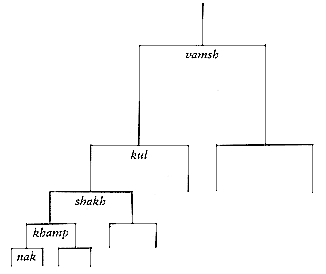
Rajput Shakha(Clan Tree)
Each shakha has its Gotra Acharya, a genealogical creed, describing the essential peculiarities, religious tenets and pristine locale of the clan. It is a touchstone of affinities and guardian of the laws of intermarriage.
Rathore Gotra Acharya -- Gautam gotra, Mardwunduni Shakha, Shukra-Acharya Guru, Garroopata Agni, Pankhini Devi.
- Gehlote, Parmara, Chauhan, Solanki, Rathore, Tanwar/ Tomar/ Tuar, BirGoojur, Parihaar, Jhala, Yadu, Katchwaha, Gor.
- Sengar, Balla, Khurwur, Chawura, Dahima, Dahiya, Byce, Gherwal, Nikumpa, Dewut, Johya, Sikerwal, Dabia, Doda, Mori, Mokarra, Abhirra, Kalchoruk, Agnipala, Aswariya, Hool, Manutwal, Mallia and Chhahil.
Myths
One version of the story of Agni kula origins is that four warriors, Agnikul, Yadaukul, Suryakul and Odak, whose names are given to the Rajput clans, sprang from the sacred fire (Agni-kunda) in a ceremony performed by Sage Vashishtha near Mount Abu. Sage Vashishta undertook this Yagya to develop warriors who could help the ordinary mortals against the demons.
There is another myth which states Rajputs were descendants of Rishabh, the founding Jain Tirthankara.
There is another myth which states Rajputs were descendants of Rishabh, the founding Jain Tirthankara.
Rajputs reside mainly in northern, western, eastern and central states of India. Rajasthan, which has a very high concentration of Rajputs, is located in northwestern India, near the Khyber Pass route used by most foreign invasions of India, including the Arabs, Afghans, Turks, Mughals, and other Islamic invaders of the Middle Ages. In his New History of India, Stanley Wolpert wrote "The Rajputs were the vanguard of Hindu India in the face of the Islamic onslaught." Rajputs live in Rajasthan, Gujarat, Himachal Pradesh, Madhya Pradesh, Uttar Pradesh, Bihar, Haryana, Punjab, Jammu and Kashmir and Maharashtra.
The Rajput Rule of India
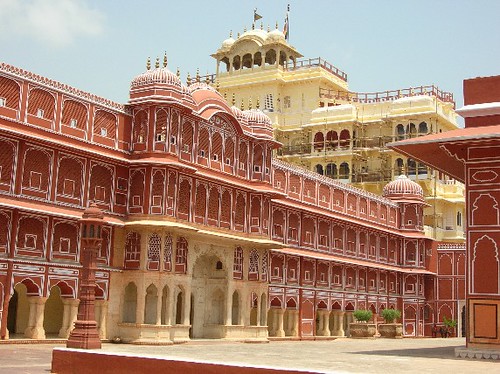 |
Chandramahal, Jaipur was built by Kachwaha Rajputs
|
It was also a period of spread of literacy. Numerous inscriptions from this period have been found. A significant fraction of them are by people who were unaffiliated with the nobles, suggesting that education was spreading among the common people. The literature composed in this period is in Sanskrit and in Apabhramshas which constitutes a large segment of the classical Indian literature. The Paramara king Bhoj of Dhara was not only a patron of scholars, but was himself a distinguished and prolific scholar. His Samarangana-sutradhara deals with architecture and Raja-Martanda is a famous commentary on Yoga-sutra.
The intermarriage among the Rajput clans interlinked different regions of India, making it easier for the trade and scholarship to flow from one part of the country to another. Rajput kings were very secular in character and permitted all faiths to flourish in their domains. Rajputs practice Vedic, Shaiva, Vaishnava, Shakti and occasionally Jain traditions; they supported Buddhists, Zoroastrians and Sufi traditions as well. The vast majority of Rajputs practice Hinduism. There are some Rajputs who follow the Sikh panth, and they often intermarry with Hindu Rajputs even today.
Social hierarchy
Rajputs supported Brahmins as scholars and priests. However, Rajputs had their own family priests, known as the Purohits. Some scions of noble Rajput families would officiate themselves as priests in their Hindu temples. For example, the Sisodia kings of Mewar considered themselves as the regents of the Eklingji, a manifestation of Shiva, and serve as the high priest of the deity as well as ruler of the state.
The Rajput ethos is martial in spirit, fiercely proud, loyal and independent, and emphasizes lineage and tradition. Rajput patriotism is legendary, an ideal they embodied by choosing death before dishonour. Rajput warriors were often known to fight until the last man. The practice of jauhar and saka was followed only in rajput communities.
Jauhar
When the outcome of a battle was against the Rajputs, jauhar would be committed by Rajput women and children in the night and next morning men would commit saka. Brahmin priests would chant Vedic mantras and Rajput women wearing their marriage dresses, along with their young children, embrace sandalwood flames.
Saka
The next morning after taking a bath, the men would wear kesariya and apply the ash from the maha samadhi of their wives and children on their foreheads and put a tulsi leaf in their mouth. Then the palace gates would be opened and men would ride out for complete annhiliation of the enemy or themselves. Rajput men and women could not be captured alive.
When Hindus fought against other Hindus there were never any johars or saka because the defeated were treated with dignity. However, history records very few instances wherein a Rajput king sued for peace after a battle reversal and the Muslims initially agreed to the peace terms, only for the Rajputs, and their women and children, to be slaughtered upon surrender and once the pols or gates of their mighty fortresses were opened.
One example of this is war between Puran Mal of Raisina and Sher Shah Suri. The opposite is true for wars between Marathas and Rajputs, where even after battle reversals, no jauhars took place in Rajasthan.
One example of this is war between Puran Mal of Raisina and Sher Shah Suri. The opposite is true for wars between Marathas and Rajputs, where even after battle reversals, no jauhars took place in Rajasthan.
Rajput Chivalry
The chivalry of the Rajput and the influence of the fair in the formation of rajput character is depicted here. It is taken from the annals of Jaisalmer, the most remote of the States of Rajasthan, and situated in the heart of the desert, of which it is an oasis.
Rao Raningdeo Bhati was lord of Pugal, a fief of Jaisalmer. His heir, named Shardul Bhati, was the terror of the desert, carrying his raids even to the valley of the Indus, and on the east to Nagore. Returning from a foray, with a train of captured camels and horses he passed by Aurint where dwelt Manik Rao, the chief of the Mohils, whose rule extended over 1140 villages.
Rao Raningdeo Bhati was lord of Pugal, a fief of Jaisalmer. His heir, named Shardul Bhati, was the terror of the desert, carrying his raids even to the valley of the Indus, and on the east to Nagore. Returning from a foray, with a train of captured camels and horses he passed by Aurint where dwelt Manik Rao, the chief of the Mohils, whose rule extended over 1140 villages.
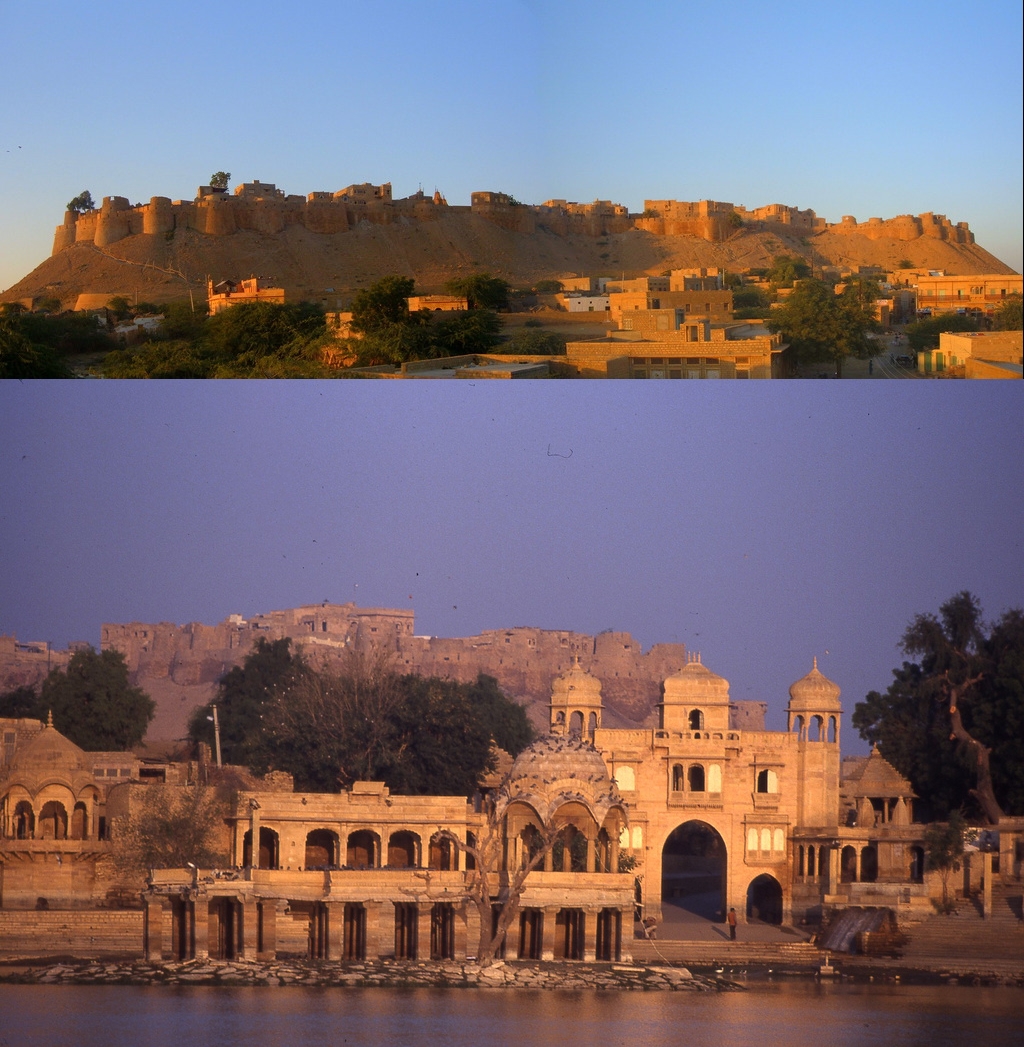 |
The historical city of Jaisalmer was founded by the Bhati clan of Rajputs.
|
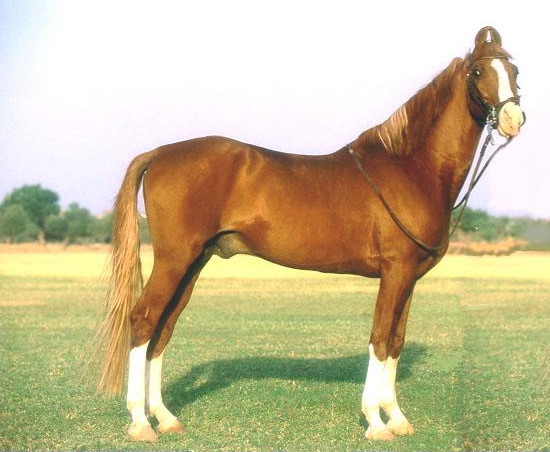 |
| Panchkalyan Marwari Horse. |
The rivals encountered at Chondan, where Shardul halted to repose; but the brave Rathore scorned the advantage of numbers, and a series of single combats ensued, with all the forms of chivalry. The first who entered the lists was Jeytanga, of the Pahoo clan, a kin of Shardul. The Rathores came upon him by surprise while he was reposing on the ground, his saddle-cloth for his couch, and the bridle of his steed twisted round his arm. He was soon recognized by the Sankhla, who had often encountered his prowess, on which he expatiated to Arankanwal, who sent an attendant to awake him; but the gallant Panchkalyan (for such was the name of his steed. Panchkalyan is a chestnut with four white legs and a white nose) had already performed this service, and they found him upbraiding white legs for treading upon him.
Like a true Rajput, Jeytanga received the hostile message, and sent the envoy back with his compliments, and a request for some amal or Opium, as he had lost his own supply. With all courtesy this was sent, and prepared by the domestics of his antagonist; after taking which he lay down to enjoy the customary siesta. As soon as he awoke, he prepared for the combat, girt on his armour, and having reminded Panch Kalyan of the fields he had won, and telling him to bear him well that day, he mounted and advanced.
The son of Chonda, Arankanwal, admiring his sangfroid, and the address with which he guided his steed, commanded Jodha Chauhan, the leader of his party, to encounter the Pahu Bhati. "Their two-edged swords soon clashed in combat"; but the gigantic Chauhan fell beneath the Bhati, who, warmed with the fight, plunged amidst his foes, encountering all he deemed worthy of his assault.
The fray thus begun, single combats and actions of equal parties followed, the rivals looking on. At length Shardul mounted: twice he charged the Rathore ranks, carrying death on his lance; each time he returned for the applause of his bride, who beheld the battle from her palki (palanquin). Six hundred of his foes had fallen, and nearly half his own warriors. He bade her a last adieu, while she exhorted him to the fight, saying, "she would witness his deeds, and if he fell, would follow him even in death." Now he singled out his rival Arankanwal who was alike eager to end the strife and blot out his disgrace in his blood. They met: some seconds were lost in a courteous contention, each yielding to his rival the first blow, at length dealt out by Shardul on the neck of the disappointed Rathore. It was returned with the rapidity of lightning, and the daughter of the Mohil saw the steel descend on the head of her lover. Both fell prostrate to the earth: but Shardul's soul had sped; the Rathore had only swooned.
With the fall of the leaders the battle ceased; and the fair cause of strife, Karamdevi, at once a virgin, a wife, and a widow, prepared to follow her affianced. The pile was prepared on the field of battle; and taking her lord in her embrace, she gave herself up to the devouring flames. The old Bhati, Rao of Pugal, had a tank excavated on this spot for her putravadhu (daughter-in-law), which is still called after the heroine, "the lake of Karamdevi."
Like a true Rajput, Jeytanga received the hostile message, and sent the envoy back with his compliments, and a request for some amal or Opium, as he had lost his own supply. With all courtesy this was sent, and prepared by the domestics of his antagonist; after taking which he lay down to enjoy the customary siesta. As soon as he awoke, he prepared for the combat, girt on his armour, and having reminded Panch Kalyan of the fields he had won, and telling him to bear him well that day, he mounted and advanced.
The son of Chonda, Arankanwal, admiring his sangfroid, and the address with which he guided his steed, commanded Jodha Chauhan, the leader of his party, to encounter the Pahu Bhati. "Their two-edged swords soon clashed in combat"; but the gigantic Chauhan fell beneath the Bhati, who, warmed with the fight, plunged amidst his foes, encountering all he deemed worthy of his assault.
The fray thus begun, single combats and actions of equal parties followed, the rivals looking on. At length Shardul mounted: twice he charged the Rathore ranks, carrying death on his lance; each time he returned for the applause of his bride, who beheld the battle from her palki (palanquin). Six hundred of his foes had fallen, and nearly half his own warriors. He bade her a last adieu, while she exhorted him to the fight, saying, "she would witness his deeds, and if he fell, would follow him even in death." Now he singled out his rival Arankanwal who was alike eager to end the strife and blot out his disgrace in his blood. They met: some seconds were lost in a courteous contention, each yielding to his rival the first blow, at length dealt out by Shardul on the neck of the disappointed Rathore. It was returned with the rapidity of lightning, and the daughter of the Mohil saw the steel descend on the head of her lover. Both fell prostrate to the earth: but Shardul's soul had sped; the Rathore had only swooned.
With the fall of the leaders the battle ceased; and the fair cause of strife, Karamdevi, at once a virgin, a wife, and a widow, prepared to follow her affianced. The pile was prepared on the field of battle; and taking her lord in her embrace, she gave herself up to the devouring flames. The old Bhati, Rao of Pugal, had a tank excavated on this spot for her putravadhu (daughter-in-law), which is still called after the heroine, "the lake of Karamdevi."
This encounter took place in Samvat 1402, A.D. 1406. The brunt of the battle fell on the Sankhlas, and only twenty-five out of three hundred and fifty left the field with their leader, Mehraj, himself severely wounded. The rejected Lover had four brothers dangerously hurt; and in six months the wounds of Arankanwal opened afresh and he died, and the rites to the manes of these rivals in love, the chaumasa of Shardul, and the duadasa of Arankanwal were celebrated on the same day.
Rajput Armies
Predominantly consisted of cavalry. They bred high quality horses, such as Marwari and Kathiawari. Rajputs fought with cocked wrist and rarely used the tip of the sword to inflict a wound. Sirohi sword was very well liked by rajput. Padmanabh, in his Kanhadade-Prabandh, describes Rajput warriors:
They bathed the horses in the sacred water of Ganga. Then they offered them Kamal Puja. On their backs they put with sandal the impressions of their hands... They put over them five types of armour, namely, war armour, saddles acting as armour, armour in the form of plates, steel armour, and armour woven out of cotton. Now what was the type of Kshatriyas who rode these horses? Those, who were above twenty-five and less than fifty in age,... shot arrows with speed and were the most heroic. (Their) moustaches went up to their ears, and beards reached the navel. They were liberal and warlike. Their thoughts were good ... They regarded wives of others as their sisters. They stood firm in battle, and struck after first challenging the enemy. They died after having killed first. They donned and used (all the) sixty-six weapons. If any one (of the enemy ranks) fell down they regarded the fallen person as a corpse and saluted it.
Rajputs and Invasions of India
The Rajputs suffered the brunt of the aggression from various Mongol-Turkic-Afghan warlords who repeatedly invaded the Indian subcontinent, then known as Hindustan. Hindustan was one of the most economically prosperous regions in the world till 18-th century and had grabbed the attention of several neighbouring Islamic kingdoms.
Organization of Indian kingdoms during invasions
 |
|
William Wilson Hunter describes in Chapter X of his book, The Indian Empire, Its People, History And Products, the organization of Indian kings and how they fought these invaders.
- Within a hundred years after his (Muhammad's) death, his followers had invaded the countries of Asia as far as the Hindu Kush. Here there progress was stayed and Islam had to consolidate itself during three more centuries before it grew strong enough to grasp the rich prize of India. But almost from first the Arabs had fixed eager eyes upon that wealthy country. Fifteen years after the death of prophet, Usman sent a sea expedition to Thana and Broach on the Bombay coast (647 ? AD). Other raids towards Sindh took place in 662 and 664 with no results.
- The armies of Islam had carried the crescent from the Hindu Kush westwards, through Asia, Africa and Southern Europe, to distant Spain and Gaul, before they obtained a foothold in Punjab. This long delay was due, not only to the daring of individual tribes, such as Sindh Rajputs, just mentioned but to the military organization of the Hindu Kingdoms.
- Each of these groups of kingdoms, alike in the north and in the south, had a certain power of coherence to oppose to a foreign invader; while the large number of groups and units rendered conquest a very tedious process. For even when the overlord or central authority was vanquished, the separate units had to be defeated in detail, and each state supplied a nucleus for subsequent revolt. We have seen how the brilliant attempt in 711, to found a lasting Muhammedan dynasty in Sindh, failed. Three centuries later, the utmost efforts of two great Musalman invaders (Mahmud of Ghazni and Mohammed Ghori) from the north-west only succeeded in annexing a small portion of the frontier Punjab Province between 977 and 1176 A.D. The Hindu power in Southern India was not completely broken till the battle of Talikot in 1565; and within a hundred years, in 1650, the great Hindu revival had commenced which under the form of Maratha confederacy, was destined to break up the Mughal Empire in India. That Empire, even in the north of India, had only been consolidated by Akbar's policy of incorporating Hindu chiefs into his government(1556-1605). Up to Akbar's time, and even during the earlier years of his reign a series of Rajput wars had challenged the Muhammadan supremacy. In less than two centuries after his death, the successor of Akbar was a puppet in the hand of the Hindu marathas at Delhi.
- The popular notion that India fell an easy prey to the Musalmans is opposed to the historical facts. Muhammadan rule in India consists of a series of invasions and partial conquests, during eleven centuries, from Usman's raid, circ.647, to Ahmad Shah's tempest of invasion in 1761 A.D.
- At no time was Islam triumphant throughout the whole of India. Hindu dynasties always ruled over large areas. At the height of the Muhammadan power, the hindu princes paid tribute, and sent agents to the Imperial court. But even this modified supremacy of Delhi lasted for little over a century (1578-1707). Before the end of that brief period the Hindus had begun the work of reconquest. The native chivalry of Rajputana was closing in upon Delhi from the south; the religious confederation of the Sikhs was growing into a military power on the north-west. The Marathas had combined the fighting powers of the low-castes with the statesmen ship of the Brahmans, and were subjecting the Muhammadan kingdoms throughout all India to tribute. So far as can now be estimated, the advance of the English power at the beginning of the present century alone saved the Mughal Empire from passing to the Hindus.
Corroborating Hunter, Jahangir, son of Akbar, bemoans in his memoirs (Memoirs of the Emperor Jahangueir written by himself, trans. David Price, Oriental Translation Committee, London 1829: republished Calcutta 1904.):
Professor Herman Kulke in his book "A History of India, ISBN: 0415154820, Publisher: Routledge; 3rd edition (March 1998)" records:
And here I am compelled to observe, with whatever regret, that notwithstanding the frequent and sanguinary executions which have been dealt among the people of Hindustan, the number of turbulent and disaffected never seems to diminish; for what with the examples made during the reign of my father, and subsequently of my own, there is scarcely a province in the empire [there were about 14 subahs at the time] in which .... in battle ..... five and six hundred thousand human beings have not, at various periods fallen victims to this fatal disposition to discontent and turbulence. Ever and anon, in one quarter or another, will some accursed miscreant spring up to unfurl the standard of rebellion; so that in Hindustan never has there existed a period of complete repose.This excerpt from Jahangir shows very clearly that Muslims, including Akbar, were always considered alien invaders by rajputs and other Hindus in India.
Professor Herman Kulke in his book "A History of India, ISBN: 0415154820, Publisher: Routledge; 3rd edition (March 1998)" records:
Ala-ud-din was also quite realistic when he mentioned that his order would be obeyed only upto a distance of about 100 miles from Delhi; beyond that limit military intervention was required if he wanted to impose his will on the people.
This shows that even at the height of power, Khilji barely controlled the outskirts of Delhi and rest of India was not under his control. Hunter and Kulke capture the conditions in India at the time of invasions quite well. Kulke's excerpt also explains the high density of Muslim population in capitals of Muslim rulers, like Hyderabad, Rampur, Lucknow, Delhi etc because in areas where there orders were accepted the Muslim rulers tried to convert as many Hindus as they could by sword, Jiziya or religious persecution (by breaking Hindu temples and psychologically pushing the Hindus into believing that there's was a weak God). For details on how Jiziya was used as a weapon to do conversions please scroll below and see the section on Protection of Hinduism.
Partial list of Rajputs who fought the invaders
Bappa Rawal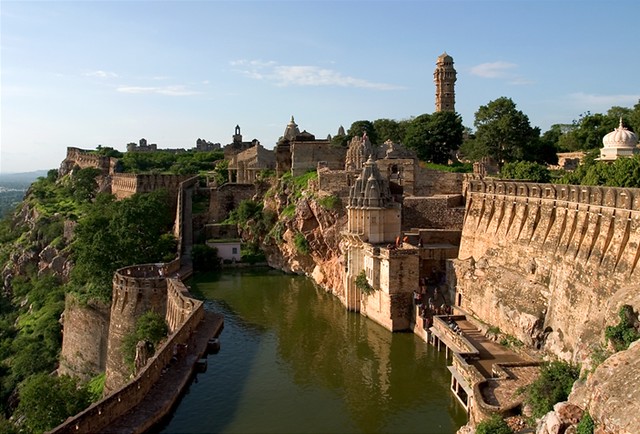 |
The Chittorgarh fort in Rajasthan was the site of several battles between the Rajputs and the Islamic invaders.
|
Muslims started attacking India within a few decades of the birth of Islam. For a few hundred years they had no success. Mohammed Bin Qasim was able to defeat Dahir in Sindh but was routed by Bappa Rawal. Qasim attacked Chittore, which was ruled by Mori Rajputs, via Mathura. Bappa, of guhilote dynasty, was a commander in Mori army and so was Dahir's son. Bappa defeated and pursued Bin Qasim through Saurashtra and back to Sindh. After this resounding defeat of the caliphate at the hands of Bappa in 712 A.D., Sindh mulsims paid tribute to Hindu rajputs. (note Muslim historians rarely recorded the defeats of their kings).
Vidyadhar Chandela
Vidyadhar Chandela was a rajput king of Bundelkhand (Central India, modern Madhya Pradesh) and ruled from his capital Kalinjar from 1017 A.D. - 1035 A.D. Mahmud of Ghazni started his attacks on India at the close of 10th century A.D. Twice Mahmud tried to subjugate the Chandela Rajput, Vidydhar. Ibn-ul-Asir writes in Kamil-ut-Twarikh (Vol IX, Page 115) that Mahmud marched against India in A.H 409 (1018-19 A.D) to protect his territories against the threatened attack of Bida (the Arabic phonetic equivalent of Vidya). Asir further says:
This king was the greatest of the rulers of India in territory; he had the largest armies; and his country was named Khajuraho.The same author informs us that Bida had earlier fought and killed the ruler of Kannauj for abjectly surrendering his territories to the Musalmans (Kannauj king had surrendered and accepted Mahmud of Ghazni as an overlord in an earlier expedition). Later historians like Nizamuddin Ahmed (author of Tabaqat-i-Akbari) and Ferishta (author of Tarikh-i-Farishta) have mistakenly substituted the name Nanda in place of Bida. Abu-Gardizi, author of Kitab Zainul-Akbar, cited in Studies in Medieveal history by S.R Sharma, pp 27-28, writes:
Bida's army consisted of 36,000 cavalry, 124,000 foot and 650 elephants. He (Mahmud of Ghazni) then sent a messenger to Bida asking him to become a Muslim and save himself from all harm and distress. Bida returned the reply that he had to nothing to say to Mahmud except on the battlefield.Nizamuddin Ahmed writes in Tabaqat-i-Akbari (B.Dey translation p.12)
After that the Sultan went to an elevated spot, so that he might look at, and make an estimate of the strength of Bida's army. Then when he saw what a vast host it was, he repented of his coming, and placing the forehead of supplication on the ground of submission and humulity, prayed for victory.The ensuing engagement was fiercely fought and rajputs under the leadership of Vidydhar routed the Ghaznavids. Gardizi writes on page 28 (cited by S.R Sharma) of Zainul Akbar that Mahmud gave up idea of further advance into Chandela territory and promptly set out towards Ghazni.
Three years later, in 1022 A.D., Mahmud tried to avenge his loss. Al-Gardizi informs us that
Mahmud first invested the fort of Gwalior (which was ruled by Kachwaha rajputs), but he failed to take it after investing it for four days and nights.Mahmud after negotiating peace marched towards Kalinjar. Gardizi further states
Kalinjar fort was so situated that no man could scale its heights It was not even possible to attack the fort by cutting down stones at its base. No plan seemed possible.
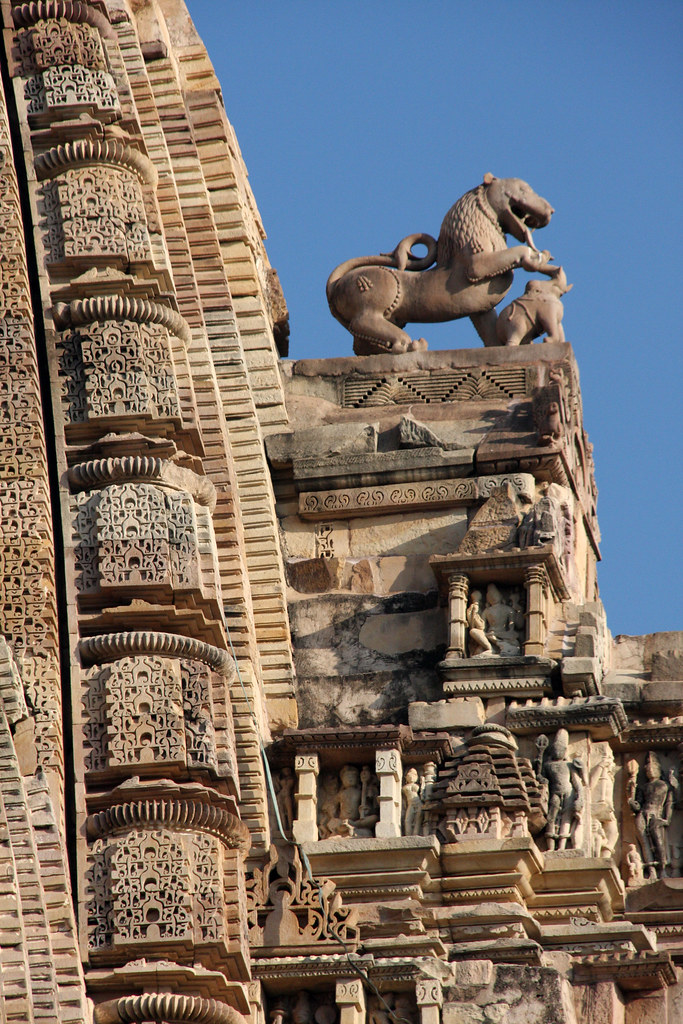 |
Kandariya Mahadev Temple built by Vidydhar Chandela after defeating Mahmud of Ghazni
|
After defeating Mahmud of Ghazni twice, Vidyadhar Chandela, had the Kandariya Mahadev temple built at Khajurao in the same complex where ancestors of his family had constructed temples.
Vidyadhar ruled for another decade after defeating Mahmud of Ghazni.
Prithviraj Chauhan
Prithviraj Chauhan was born at Ajaymeru (Ajmer) in 1166 A.D. His father was Someshwar Chauhan and mother Karpuri Devi, a Kalachuri (Chedi) princess, daughter of Achalaraja of Tripuri.
Muhammad Ghori attacked India multiple times. First time he was routed in present day Gujarat by Rajputs. Mularaja-II was not even a teen yet and his mother organized the defences of Pattan. Battle was fought at Kayadara near Mount Abu, in 1178 A.D. and Ghori was resoundingly defeated. After this defeat he never entered India through Gujarat. In first battle of Taraori in 1191 Prithviraj Chauhan's cavalry charged and routed the Ghurid cavalry and captured Ghori. Ghori begged for his life. Prithviraj allowed him to go despite his generals asking him not to do so.
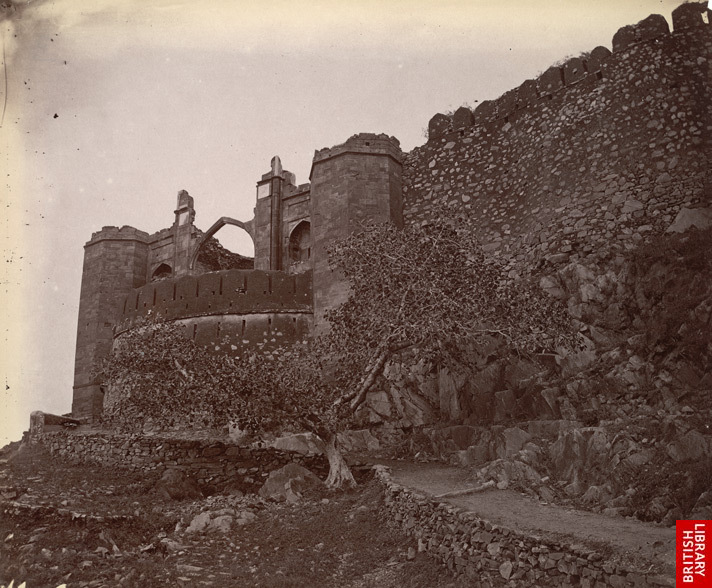 |
Prithviraj Chauhan lived at Taragarh fort which was also known as Ajaymeru after which the town of Ajmer got its name.
Following year Ghori came again. Prithviraj advanced with his army and sent a letter to Ghori. In this letter Ghori was asked to return as he had been defeated the previous year and was spared his life. Ghori replied that he was in India on the orders of his brother, Ghiasuddin, and that he could only retreat after he got a word from his brother. This letter was sent in the evening and after sending the letter Ghori moved his camp back a few kilometers to feign retreat. On receiving this letter and seeing Muhammad move his camp back Prithviraj assumed that Ghori was not interested in fighting. Ghori also knew that rajputs did not fight in the night and only started fighting after sun had come up. (This is an ancient Kshatriya practice e.g Mahabharata was also fought mostly in day time). Ghori treacherously attacked in the early morning hours when Prithviraj and his army were sleeping and was able to win this war.
|
Hammir Dev Chauhan
Jalore was ruled by another branch of Chauhans, the Songaras. Ala ud din Khilji usurped Delhi from his father-in-law, Jalal-ud-din Khilji, by killing him in cold blood. In 1299 Ala ud din's mongol general Ulugh Khan sought to quell Hindu resistance in Gujarat and besieged Junagadh and sacked the temple at Somnath. Ulugh Khan had broken the Shivalinga of Somnath and was carrying it back to Delhi. Kanhad Dev Songara, ruler of Jalore, attacked and defeated Ulugh Khan. His son Biramdeo and Jaitra Deora were the generals who commandeered Kanhad Dev's army. They captured the fragments of the Shivalinga. Kanhad had the Shivalinga washed in Gangajal and had the fragments placed at various Shiva temples around Jalore.
One of Ala ud din's generals was a neo-Muslim, Muhammad Shah, who had helped Kanhad Dev. This general later went and stayed with Hammir Deo in Ranthambore. Ala ud din wanted him dead, and asked Hammir to hand him over. Hammir replied that he knows how to draw his sword, and anyone who has taken shelter in his fort would not be turned over. Hammir did not consider Khilji king of India. Ala ud din attacked Ranthambore in 1299, but his armies consisting of 80,000 cavalry, led by generals Ulugh Khan and Nusrat Khan, were badly defeated. Nusrat Khan was killed by rajputs in this campaign.
Khilji finally came himself in 1301 A.D., and there was a long siege. Hammir was very well prepared. When the fort did not fall after repeated bloody skirmishes Khilji, tired of living in an insect infested swamp for seven months (land outside Ranasthambpur fort is marshy), resorted to diplomacy.
 |
Marshy Battle Field below Ranthambore Fort.
Hammir was very suspicious but he heeded to his councilors who told him that sword is not always the best recourse. Ratipal and Ranmal, who were close confidants of Hammir, were sent to the Khilji camp. Ranmal's father was hung by Hammir for treachery and his property was confiscated. Ranmal earned the trust of Hammir by being brave in battles that Hammir fought but perfidy was in his blood. Khilji bribed these two generals of Hammir's army and consequently Ranthambore fell.
|
सिंह-सवन सत्पुरुष-वचन कदलन फलत इक बार।तिरिया-तेल हम्मीर-हठ चढे न दूजी बार॥
(English translation:)
A lioness gives birth to a cub only once; once alone is the word of a good man given; once only does a plantain bear fruit; a woman is anointed only once with oil for marriage; and once alone did Hammira give his irrevocable promise.
Rawal Ratan Singh, Gora, Badal
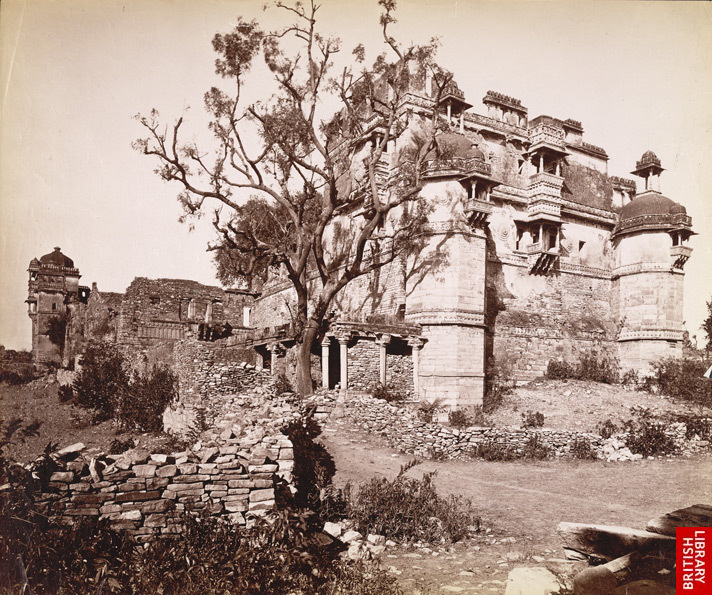 |
Palace of Maharani Padmini
|
Khilji wanted to win Chittor because Sisodiyas of Chittor never accepted the rule of Islam. Another reason was Rani Padmini. He laid a siege in 1302 A.D. but Chittor would not fall. Then he requested Rawal Ratan Singh, husband of Rani Padmini, that if he is allowed a glimpse of Rani he would leave. By this time the situation inside the fort was getting bad. Rawal discussed this with his advisers and they agreed that they can show Padmini's face in a mirror to the sultan. The meeting took place and afterwards out of courtesy when Ratan Singh was walking Khilji out of the palace, Khilji's men captured Rawal Ratan Singh. Khilji sent a message to the fort that Rawal can be spared by exchanging Rani Padmini. Padmini discussed this with Gora, her maternal uncle, who was a Chauhan rajput.
 |
Battle Field below Chittor Fort.
|
Gora told her not to worry and that he would go and bring back Rawal Ratan Singh. Padmini's nephew Badal who was just sixteen also assured her. A message was sent from the fort to Khilji that Padmini would come with 700 of her servants in "palanquins" (palki in hindi) and that no Muslim soldier should peek inside the palki to outrage the modesty of the women. Letter also said that before Padmini meets Khilji she would like to talk to Rawal. Khilji agreed. All the palki's had the best rajput warriors with two swords each.
When Padmini's palki, which was occupied by Gora, reached Rawal's tent he asked Rawal to mount the horse and go back to the fort. Then Gora gave a signal and every rajput came out of the palki and attacked the Muslims who were cut to pieces. Gora reached Khilji's tent and was about to kill the sultan when Khilji moved his concubine in front of himself. Gora, being a rajput could not kill an innocent women and these few seconds were enough for Khilji's guards to kill Gora from behind.
Khilji and his forces lost heart and retreated back to Delhi.
Maharana Hammir 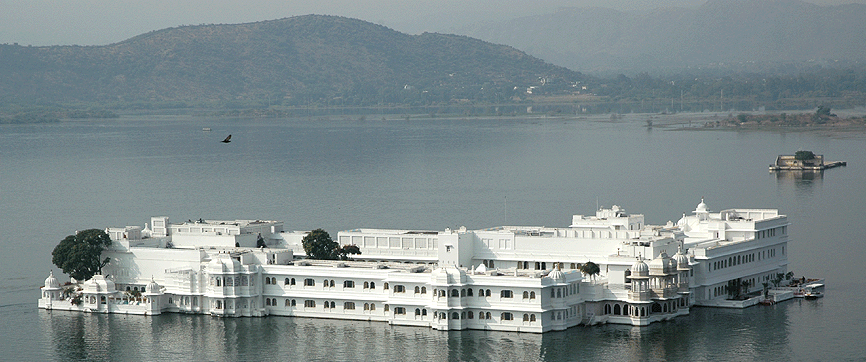 |
Jag Niwas, the summer abode of the Ranas of Mewar, in Udaipur Rajasthan
|
Hammir, along with his mother came to see his uncle. Ajay said that he had grown weak and a dacoit, Munja Balicha, was wreaking havoc in Rawal Ajay's domain. Hammir vowed that he would take care of Munja.
Hammir took seven warriors with him and set out to finish Munja. Hammir at this stage was just a teenager. Munja was tracked. When Munja was riding with his band to plunder a village, Hammir stood in his way on his white steed. Munja asked him to leave the way or die. Hammir challenged him to a duel and seeing that Hammir was just a teenager Munja readily agreed. Hammir killed Munja and brought his head and put it at Rawal Ajay's feet and told his uncle that Munja will never be a problem again. Rawal Ajay realized Hammir should be the ruler and he coronated Hammir as the new ruler of Mewar. Ajay's sons were unhappy with this and decided to move to Maharashtra. Do note that Chittor was called Khijarabad at this time as Ala ud din had renamed it after his son and at Hammir's coronation was ruled by Muhammad bin Tughlaq.
Hammir captured Chittor. Tughlaq became very unhappy and launched a massive campaign against Hammir which he led himself. Hammir knew as soon as he captured Chittor that Tughlaq would attack him. He rallied all nearby rajput states to join him and they did. Battle was fought and Tughlaq was badly defeated and captured. After Tughlaq paid a hefty fees and surrendered all of Mewar's territory he was let go. After this defeat Mewar was never attacked by Tughlaq.
Maharana Kumbha
Maharana Kumbha was the eldest son of Rana Mokal by his Parmar Queen, Sobhagya Devi, daughter of Jaitmal Sankhla, and thus united in himself the fine qualities of these two royal races of India, the culture of one and the chivalry of the other. Maharana Kumbha ascended the throne of Mewar in A.D. 1433 in the renowned fortress of Chittor, and ruled till A.D. 1488, a period of nearly 35 years, which was one of the most prosperous and important in the history of Mewar.
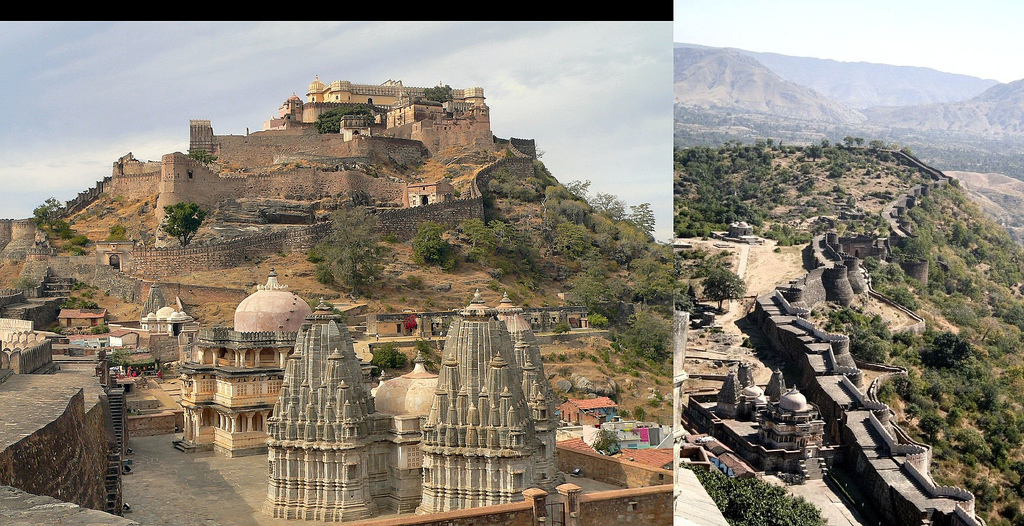 |
Kumbhalgarh fort built by Maharana Kumbha. Perimeter wall is 20 miles long. Six horses could ride simultaneously on the fort ramparts.
|
The capture of Nagor in A.D. 1435 by Maharana Kumbha brought Sultan Qutbud-din of Gujarat into the field against him. With the Sultan of Malwa, the Maharana had come into collision in the early part of his reign. These two kingdoms, the most powerful Mussalman principalities in India at the time were defeated singly by the Maharana. These two Mohammedan kingdoms combined and simultaneously invaded Mewar from the west and the south; but Kumbha, supported by the chivalry of Mewar and inspired by the patriotic valour of the Guhilot Rajputs, vanquished them both. Maharana Kumbha repeatedly defeated sultans of Malwa and Gujarat and built 32 forts in Rajasthan. Even the combined armies of sultans of Malwa and Gujarat could not beat Kumbha. To commemorate his victory over these Muslim rulers, Maharana Kumbha built the victory tower in 1440 A.D.
The tower has nine-stories and is covered with exquisite sculptures of Hindu Gods and Goddesses depicting episodes from Ramayana and Mahabharata.
The tower has nine-stories and is covered with exquisite sculptures of Hindu Gods and Goddesses depicting episodes from Ramayana and Mahabharata.
There are many inscriptions on the Stambh from the time of Maharana Kumbha. (R.Nath in his book Chittorgarh Kirti Stambha of Maharana Kumbha (The Idea and the Form) (1440-1460 A.D) ISBN 8170173582 has translated these inscriptions on Page 161 of this book):
Verse 17: Kumbha is like the mountain Sumeru for the churning of the sea of Malwa. He humbled its sultan, Mahmud Khilji.
Verse 20: He also destroyed other lowly Muslim rulers (of the neighborhood). He uprooted Nagaur.
Verse 21: He rescued twelve lakh cows from the Muslim possession and converted Nagaur into a safe pasture for them. He brought Nagaur under the control of the Brahmanas and secured cows and Brahmanas in this land.
Verse 22: Nagaur was centre of the Muslims. Kumbha uprooted this tree of evil and its branches and leaves were automatically destroyed.
Rana Sanga
In Kumbha's lineage was Rana Sangram Singh or Sanga. Ibrahim Lodi, ruler of Delhi, in his expansionary plans to south of Delhi attacked Gwalior and was defeated by Man Singh Tomar but being a Hindu Kshatriya, Man Singh out of magnanimity let Ibrahim go back to Delhi. Lodhi also attacked Rajputana multiple times and Rana Sanga defeated his every attack. Man Singh's descendants fought at Haldighati along with Maharana Pratap against Akbar and showed exemplary bravery. Lodi was defeated by Babur later. Now Babur was having sleepless nights because of Sanga. Babur sent about 1500 choice cavalry to attack Sanga. These were butchered by Sanga's rajputs.
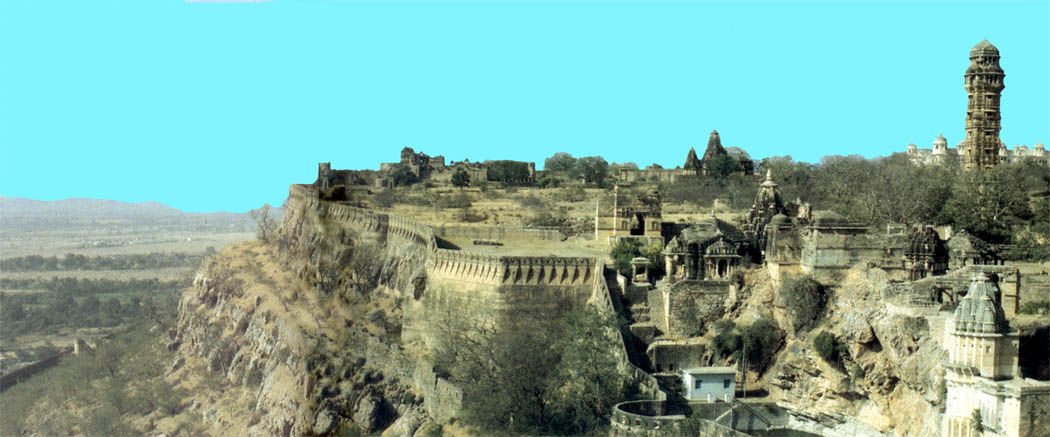 |
The Chittorgarh fort in Rajasthan was the home of Sisodiya clan of Rajputs and was also the site of several battles between the Rajputs and the Islamic invaders.
|
Humayun, Babur's son was defeated by Sher Shah Suri, a Pathan. Humayun was forced to leave India and he took refuge with Safavid king of Persia. Sher Shah became ruler of Delhi. The Sesodias of Mewar had not yet recovered from Rana Sanga's treacherous defeat. In Marwar the Rathores were becoming very powerful. The Rathore king Rao Maldeo had extended his territory to within a couple of hundred kilometers of Delhi.
Sher Shah attacked Maldeo. Maldeo came with a force of 40 thousand and Sher Shah had 60 thousand. In the evening Sher Shah sent forged letters to Maldeo's camp. In these letters it was stated that few generals from Maldeo's army were buying arms from Sher Shah's army. This caused great consternation in Maldeo who thought there was treachery and that some of his generals had crossed over to Sher Shah. Maldeo left with 20 thousand men.
Sher Shah attacked Maldeo. Maldeo came with a force of 40 thousand and Sher Shah had 60 thousand. In the evening Sher Shah sent forged letters to Maldeo's camp. In these letters it was stated that few generals from Maldeo's army were buying arms from Sher Shah's army. This caused great consternation in Maldeo who thought there was treachery and that some of his generals had crossed over to Sher Shah. Maldeo left with 20 thousand men.
 |
| Mehrangarh Fort, Home of Rathore rulers of (Rajasthan, India) |
In reality there was no treachery. Later when Maldeo's generals Kumpa (his progeny are Kumpawat Rathores) and Jaita (his progeny are Jaitawat Rathores) found out what happened they did not loose cool and decided they would not leave the field even though they just had 20 thousand men and had to face 60 thousand Pathans of Sher Shah.
Finally battle of Sammel was fought on a cold morning of January 5th 1544 A.D. and Sher Shah was shocked by what he saw. Sher Shah's top generals lost there lives and his army suffered heavy losses. After this Sher Shah commented that "for a few grains of bajra [a grain crop that grows in Marwar] he had almost lost the entire kingdom of India". It is a moot point now but had Maldeo not retreated because of the fake letter, Rathores/Rajputs would have defeated Sher Shah.
In my bhoomi (Rajasthan) Deoras are considered the most stubborn, Hadas the most brave and Rathores the invincible warriors on the battlefield (Ranbanka Rathore).
Maharani Durgavati Finally battle of Sammel was fought on a cold morning of January 5th 1544 A.D. and Sher Shah was shocked by what he saw. Sher Shah's top generals lost there lives and his army suffered heavy losses. After this Sher Shah commented that "for a few grains of bajra [a grain crop that grows in Marwar] he had almost lost the entire kingdom of India". It is a moot point now but had Maldeo not retreated because of the fake letter, Rathores/Rajputs would have defeated Sher Shah.
In my bhoomi (Rajasthan) Deoras are considered the most stubborn, Hadas the most brave and Rathores the invincible warriors on the battlefield (Ranbanka Rathore).
Maharani Durgavati was a Chandel rajputani. She was born at the Kalinjar fort, Banda, Uttar Pradesh. Chandel rajputs were the builders of the beautiful city of Khajurao which had 85 magnificient temples of which 22 still survive.
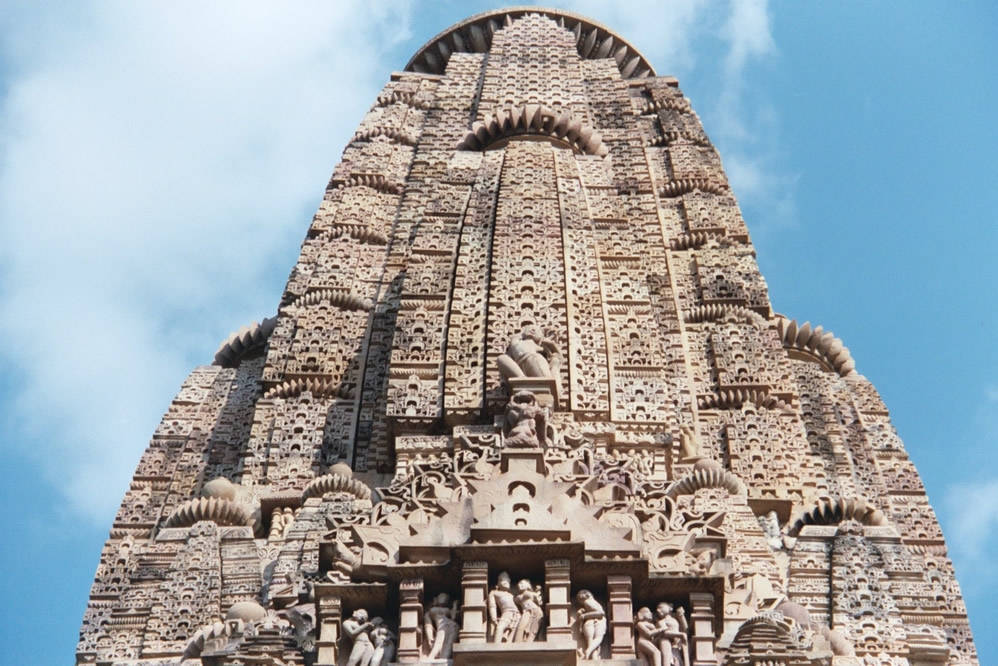 |
Khajurao Temples were built by Chandel Rajputs.
|
She inherited the Gond Kingdom after her husband, Dalpat Shah, died in 1550 A.D. Her son, Bir Narayan was an infant and Rani Durgavati ruled the kingdom of Gond. Baj Bhadur after ascending the throne of Malwa in 1556 A.D., attacked the Gond kingdom but his army was routed. His defeat was so decisive that he never dared attack Rani Durgavati's kingdom ever again.
Akbar decided to invade Rani's kingdom and sent a cavalry of 50,000 with heavy artillery, under the command of Abdul Mazid Khan. Rani Durgavati organized her defences at a valley near Narrai (Madhya Pradesh). Her forces were flanked by hills on one side and the rivers Narmada and Gaur on the other. When Muslim forces entered from both sides of the valley, Rani's small army, which she was leading herself, fought with exemplary bravery and pushed back Mughals on both sides. Rani's army emerged victorious. During night time, her army came out of the valley and camped in the open areas. Rani Durgavati discussed further strategy with her generals and wanted to attack the Mughals in the night. But her generals dissuaded her against such an action. This delay allowed the Mughals to haul there heavy artillery near the battlefield.
Next morning (24th June, 1564) the battle started again. The young Bir Narayan pushed back Mughals thrice but was injured fighting and taken away from the battlefield. The Rani, riding her elephant, Samran, led the attack but she was ultimately stuck by two arrows and she realized the end was near. Her generals wanted her to retreat but she decided against it and instead used her "katar"(dagger) to enter Maha Samadhi (the abode of God). Rani Durgavati was an outstanding example of rajput bravery. Akbar decided to invade Rani's kingdom and sent a cavalry of 50,000 with heavy artillery, under the command of Abdul Mazid Khan. Rani Durgavati organized her defences at a valley near Narrai (Madhya Pradesh). Her forces were flanked by hills on one side and the rivers Narmada and Gaur on the other. When Muslim forces entered from both sides of the valley, Rani's small army, which she was leading herself, fought with exemplary bravery and pushed back Mughals on both sides. Rani's army emerged victorious. During night time, her army came out of the valley and camped in the open areas. Rani Durgavati discussed further strategy with her generals and wanted to attack the Mughals in the night. But her generals dissuaded her against such an action. This delay allowed the Mughals to haul there heavy artillery near the battlefield.
 |
Kalinjar fort, Banda, Uttar Pradesh.
|
Maharana Pratap
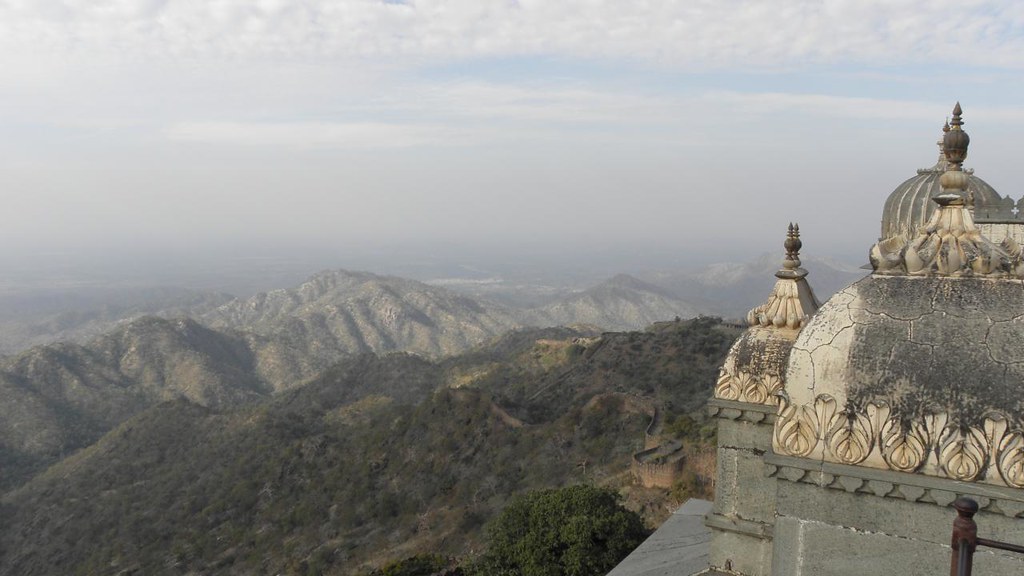 |
| Kumbhal Garh Fort: Birthplace of Maharana Pratap |
Humayun's son Akbar was born in the palace of a Hindu Rajput king, at Amarkot, who had given Humayun shelter when he was being pursued by Sher Shah.
Akbar realized that he could never subdue Rajputs and become sole ruler of India. He decided to pursue diplomacy and was able to convince the Kacchwaha Rajput rulers of Amber (modern day Jaipur) about a matrimonial alliance. James Tod writes in Annals and Antiquities:
By what arts or influence Akbar overcame the scruples of the Kacchwaha Rajpoot we know not, unless by appealing to his avarice or ambition; but the name of Bharmal is execrated as the first who sullied Rajpoot purity by matrimonial alliance with the Islamite.
It is chronicled that Jaipur King, Rájah Bahár Mall, was not interested in warring with Akbar, who was just a petty ruler of Delhi. To save his kingdom Bahar Mal of Amber agreed to a matrimonial alliance with Akbar and gave his daughter Hira Kanwar (Maan Kunwar after marriage) to the mughal ruler and she became the mother of Prince Salim, who later became the Mughal emperor Jahangir. She was converted to Islam because Islamic law does not permit marriage outside the religion without conversion and she was given a new name Mariam-uz-Zamani. Her name as recorded in Mughal chronicles was Mariam-uz-Zamani and not Hira Kanwar because the mughal population and clergy of that era could not digest that a future mughal king was born to a Hindu mother. Her name was deliberately removed from the Mughal chronicles. Since Hira Kanwar was made a muslim, the mosque of Mariyam Zamani Begum was constructed in Lahore, Pakistan, in her honour. If she had remained a Hindu, as a lot of apologists claim, instead a temple would have been constructed in her honor and not a mosque. Furthermore had it really been a ‘marriage’ of Hira Kanwar with Akbar, the ceremony would have taken place in the palace of Jaipur and whole of Jaipur would have been invited. But no such event took place because the ordinary Kachhwaha rajputs living in Jaipur would have strongly condemned such an alliance and hence Hira Kanwar was secretly sent to Akbar's Harem. Please see this link from the persian sources Wife of Akbar. Tuzuk-i-Jahangiri further records the status accorded to Jahangir's mother in the mughal harem:
"that God will receive her in His mercy; for Jahángír's mother, though a born Hindú, could not well ‘be sent to hell."
Jahangir's mother has been incorrectly called Jodha Bai. Jodha Bai was the wife of Jahángír and not a wife of Akbar. She was the daughter of Motah Rájah Udai Singh of Jodhpúr. She was married in 1588 to Shahzada Salim (later Padshah Jahangir, Emperor of Delhi). She died 1603. See here Wife of Jahangir
Soon other Rajput kingdoms in Rajasthan also gave their daughters to Akbar. This was the darkest period in the history of Rajputs. Only two kings remained against this. The Sisodiyas of Mewar and Hadas of Ranthambore. Hada are Chauhans. Finally Kunwar Man Singh of Amber and Akbar went and met Surjan Hada to convince him that he should become friends with Akbar. Surjan some how agreed but one of his conditions of friendship was that no daughter of Hadas would ever be asked to marry Mughals and Akbar agreed.
Surjan was very saddened by this friendship with Akbar and the fact that he could not help Maharana Pratap against Akbar. He felt so ashamed that he moved his residence to Banaras and made sure that Hindus in the holy city had no problems at the hands of Muslims.
Marriage of a rajput princess to a mughal was considered very derogatory by rajputs. Many incidents took place in 16th century which illustrate this point. On the death of the Mariam-uz-Zamani nee Hira Kanwar, Akbar commanded a court-mourning, and that all might testify a participaion in their master's aflliction, an ordinance issued that all the rajpoot chiefs, as well as the Mooslem leaders, should shave the moustache and the beard. To secure compliance, the royal barbers had the execution of the mandate. But when they came to the quarters of Bhoj Hara (son of Surjan Hada), in order to remove these tokens of manhood, they were repulsed with buffets and contumely. The enemies of Rao Bhoj aggravated the crime of this resistance, and insinuated to the royal ear i.e Akbar's that the outrage upon the barbers was accompanied with expressions insulting to the memory of the departed princess, who, it will be remembered, was a Rajpootani of Amber. Akber forgetting Bhoj Hara's gallant services, commanded that Rao Bhoj should be pinioned and forcibly deprived of his Mooch. He might as well have commanded the operation on a tiger. The Haras flew to their arms, the camp was thrown into tumult, and would soon have presented a wide scene of bloodshed, had not the emperor, reasonably repenting of his folly, repaired to the Boondi quarters in person. He expressed his admiration (he might have said his fear) of Hara valour, alighted from his elephant to expostulate with the Rao Bhoj whom he was able to placate. Akbar understood that if Surjan Hada was alienated at that point and if Surjan combined with Maharana Pratap that would be the end of Akbar's rule.
Another such incident happened when immediate successors of Man Singh of Amber proved to be ineffectual rulers. At the instigation of Jodha Bai, the wife of Jehangir, Jai Singh, great grandson of Man Singh, was raised to the throne of Amber, to the no small jealousy, says the chronicle, of the favourite queen, Noor Jehan. It relates that the succession was settled by Jahangir and Jodha Bai in a conference at the balcony of the seraglio, where the Emperor saluted the youth below as Raja of Amber, and commanded him to make his salaam to Jodha Bai, as the source of this honour. But Jai Singh refused and replied:
I will do this to any lady of your majesty's family, but not to Jodha Bai
So this clearly shows even Kacchwaha kings did not like the fact that rajput daughters were given to Mughal Kings.
 |
| Udai Palace at Udaipur (city founded by Maharana Udai Singh). |
So there remained just the house of Mewar the sole bearer of Rajput pride in the face of immense opposition from Mughals as well as other rajputs who had sold there souls essentially to Mughals by giving there daughters. Maharana Pratap, the Sesodia ruler of Mewar, passed a law that none of his followers will intermarry with Rajputs who have given their daughters to Muslims. This rule was followed by his loyal band of Rajputs, which included Rathores, Chauhans, Sesodias, Parihaars, Tomars, Kacchwaha and Jhalas.Maharana Pratap never accepted Akbar as ruler of India, and fought Akbar all his life. Akbar first tried diplomacy to win over Maharana Pratap but nothing worked. Pratap maintained that he had no intention to fight with Akbar but he could not bow down to Akbar and accept him as the ruler. Some scholars argue that there was some possibility that Maharana could have become friends with Akbar but in the siege of Chittor when Akbar killed 30,000 civilian, unarmed residents of Chittor, because they refused to convert to Islam, left a lasting impression on Maharana's mind and he decided he cannot bow to such an unjust and cruel human being as Akbar was. (People should note that when Hindu Kings fought with each other unarmed civilians were never killed in the loosing king's territory).
Finally Akbar attacked Maharana Pratap at Haldighati on 18th June, 1576 A.D. Akbar's general was Man Singh Kacchwaha of Amber, leading an army of 40 thousand men. Maharana had about 8 thousand men and some Bhil warriors. One of Maharana's generals was Hakim Khan Sur, who was from the line of Sher Shah Suri, a pathan. Pathans are the only faction of Muslims that Rajputs do not mind befriending because a Pathan would rather give his life then his word. During the first attack Maharana Pratap's army routed the Mughals and Mughals ran for there life. Maharana Pratap decided to kill Man Singh. He cut his way to the elephant of Man Singh. His horse Chetak put its front feet on the trunk of the elephant that Man Singh was riding and Maharana threw his lance. Man Singh ducked, and the elephant driver was killed. Finally the numerical superiority of the Mughal army was too much and the battle ended in a stalemate.
When Mughal army entered the nearby town of Gogunda they were so mortified that Maharana would attack them again that no one would venture out of the camp for months. They ran out of food and conditions were just miserable in the Mughal camp. They killed there own horses and ate them to survive. Finally help arrived many months later. Akbar was very unhappy with his generals and his army and he refused to see his generals for months.
Akbar kept sending expedition after expedition against Maharana Pratap but never succeeded. He lost lot of money and men in trying to defeat Maharana Pratap. For 30 years Pratap remained ahead of Akbar and in last ten years of his life was able to free most of his kingdom. The only fort Pratap could not recover was Chittor and that saddened him a lot. His son, Amar Singh, won that fort after Pratap's death.
 |
It is said that somebody told Akbar that Pratap wanted to accept Akbar as the king. Akbar was very happy to hear this. One of Akbar's general was Prithviraj Rathore who was a very good poet. He told Akbar this is a lie (incidentally Prithviraj's mother and Pratap's mother were real sisters. Pratap and Prithviraj played together as kids in there maternal grandfather, Akshay Raj Songara's home who was a Chauhan rajput). Prithviraj wrote this letter to Pratap:
- The hopes of the Hindu rest on the Hindu yet the Rana forsakes them. But for Pratap, all would be placed on the same level by Akbar; for our chiefs have lost their valour and our females their honour. Akbar is the broker in the market of our race; he has purchased all but the son of Udai (Singh II of Mewar); he is beyond his price. What true Rajput would part with honour for nine days (nauroza); yet how many have bartered it away? Will Chittor come to this market ...? Though Patta (an affectionate name for Pratap Singh) has squandered away wealth (on warfare), yet he has preserved this treasure. Despair has driven man to this market, to witness their dishonour: from such infamy the descendant of Hammir alone has been preserved. The world asks, from where does the concealed aid of Pratap emanate? None but the soul of manliness and his sword .. The broker in the market of men (Akbar) will one day be surpassed; he cannot live forever. Then will our race come to Pratap, for the seed of the Rajput to sow in our desolate lands. To him all look for its preservation, that its purity may again become resplendent. It is as much impossible for me to believe that Pratap has called Akbar his emperor as to see the sun rising in the west. Tell me where do I stand? Shall I use my sword on my neck or shall I continue my proud bearing?
Pratap replied to him:
- By my god Eklinga, Pratap would call the emperor Turk alone and the sun would rise in the east. You may continue your proud bearing as long as Pratap's sword dangles on the Mughal head. Pratap would be guilty of Sanga's blood, if he was to tolerate Akbar. You would have the better of it, no doubt Prithviraj, in this wordy quarrel.
Prithviraj was overjoyed on getting this letter.
Maharana Pratap's son, Amar Singh, fought 17 wars with the Mughals but he finally accepted them as rulers. At this time a large chunk of Maharana Pratap's band of loyal Rajputs became disillusioned by the surrender and left Rajasthan. This group included Rathores, Deora Chauhans, Parihaars, Tomaras, Kacchwaha and Jhalas. They are called "Rors" and settled mostly in Haryana, with some in Uttar Pradesh. Until today they do not intermarry with other Rajputs but "gotra permitting" with other Rors only.
Maharana Pratap literally proved these words of Lord Ram:
Battle of Haldighatiक्षित्रय तनु धिर समर सकाना ।
कुल कलंक तेिह पामर जाना ।।
June 18, 1576. Before sunrise, the Mughal army was on the move. As dawn broke, the Bhil lookouts saw the huge force crossing the river and assembling near Khamnor. Pratap Singh moved his men into the neck of Haldighati Pass. They halted, prepared to wait for the opportune moment to strike. The legendary warrior was impressive in his helmet, and chain-armour over a white tunic (still preserved in Udaipur's City Palace Museum). He sat proudly upon Chetak, his handsome white stallion that had been his closest ally in many battles. The horse was clad in colourful mail that ended with a mask resembling a grotesque elephant, designed to terrify an opponent's steed and to protect the horse from the enemy's war elephants, on the assumption that elephants will not harm younger elephants. Pratap clasped his huge sword in one hand; his other gripped the ancient banner of the House of Mewar, the crimson field with the golden face of the Sun God in the centre. The sun climbed higher. Faces ran with perspiration. The muffled thunder of the Mughal army came ever nearer. The ground began to tremble. Soon, a cloud of dust was rising above distant treetops, filtering the morning sun. The Maharana led his group to confront the larger phalanx of troops under Qazi Khan. His war elephants brought up the rear. There was immediate panic. As the rows of youths hailed arrows into the Mewar ranks, the surprised skirmishers baulked, then stumbled back across the uneven, rock-strewn terrain. Vicious thorn bushes tore into their skin and clothing. They collided headlong with the warrior youths. Chaos reigned. Horses screamed in fear. Swords slashed. Muskets cracked. Bows twanged; arrows ripped into bodies. Brave men uttered war cries; others their death howls.
Maharana Pratap of Udaipur
A band of Mughal Rajputs turned and fled, straight into a line of troops moving in from the right. The dead and wounded of both sides began to clutter the pass. The ground was already running scarlet. Pratap's group galloped out of the defile and immediately clashed with Qazi Khan and the Sheikhzadas of Sikri. The onslaught was vicious; the enemy broke and fled and did not stop until they were at least 16 km beyond the river, where they were confronted by the rear guard. They re-formed for a new assault. Already Pratap and Chetak had sustained several wounds. Undaunted, the Maharana, holding high the crimson banner, led his men deeper into the enemy's ranks. A wall of the Emperor's war-elephants, brought forward to stop the advance of the Mewar elephants, halted his relentless victory charge. A stray musket ball killed the mahout of a Mughal elephant. Out of control, it ran amok, trampling all in its path. The opposing elephants impacted, huge tusks ripping into flanks, broadswords in trunks slicing open any unprotected flesh. Fighting off all comers, Pratap and his men pressed on into the heart of the enemy, trying to encounter Man Singh and the heavy artillery. The death of the first would throw the Mughal forces into disarray, and the loss of the artillery would at least neutralise the massive advantage the Mughals had over Mewar.
Haldighati
Above the din of battle, he heard a familiar war cry, and spun round in his saddle. Man Singh was standing in his elephant's howdah, trying to encourage his men to stem the rout by the Mewar warriors. Pratap spurred his steed to a determined gallop towards Man Singh. Lances, swords or arrows could not stop his fury. He cut his way through to the Mughal general. Chetak skidded to a halt, throwing up dust, but collided with the elephant's plate armour. He reared up against the huge beast, his forelegs glancing off its tusks. Man Singh was partly obscured by his mahout, but Pratap heaved his lance at the howdah. The weapon passed through the driver's body, killing him instantly, and smashed against the howdah's metal plates. Man Singh had disappeared. Thinking he had killed Man Singh, Pratap let out a triumphal cry of revenge. The uncontrolled elephant swung around in panic. The broadsword attached to its trunk slashed through the tendons of one of Chetak's hind legs.
Chetak Rearing Up on Man Singh's elephant
Unaware of this, Pratap wheeled Chetak to rejoin his men. The horse now had the use of only three of his legs but, enveloped by the furore, he persisted valiantly. Man Singh had simply ducked behind the howdah's railing for protection. Moments later, he scrambled down on to the elephant's neck in a desperate effort to control its panicked rush through Mughal lines. Imperial cavalry, who had rushed to guard their commander, now surrounded Pratap. A Mughal officer, Bahlol Khan, charged the Maharana. Steel rang against steel. Pratap mustered his energy for one almighty blow. His heavy sword sliced through the Mughal's headpiece and, like a hot knife through soft butter, hewed straight down through the Mughal's body, even disembowelling his horse. Other Mughals were now on top of Pratap. Chetak was limping and stumbling. Pratap fought his way back to the main body of the Mewar force, which was steadily forcing the Mughals into retreat. Suddenly, a great commotion of kettledrums came from the rear of the Imperial ranks. Across the sea of bloodied, mud-caked bodies, the Rajputs saw the Mughal reserves making their entry. And, to Pratap's dismay, Man Singh followed closely at the head of battle-weary soldiers and horsemen.
Pratap's first impulse was to make another attempt to destroy the Rajput traitor, possibly meeting death in a blaze of glory. One of his officers, Jhala Man of Sadri, snatched the royal standard of Mewar from Pratap's hand, determined to fight a rear guard action until Pratap's army had reached the protection of the defile. "Ride swiftly to safety!" he yelled. Reluctantly but wisely, Pratap shouted an order to his remaining chiefs to take their men to the village of Koliyari, where arrangements had been made for treating the wounded.
Waving the Sun-God banner, Jhala rallied his men to meet the enemy's counter-attack, as the remainder of the Mewar army disappeared into the cover of the hills. Bringing up the rear, Pratap stopped upon an outcrop of rock. He turned to look back at the swirling dust haze that all but hid the horrendous spectacle of the battleground. Through it came the tumult of shots, the clashing swords, the cries of victory and death. For a few moments, he was able to follow the progress of his crimson banner. Then it, too, fell. An attendant came back and took Pratap's bridle. "We tarry too long, Highness." They continued on. Chetak was now limping badly. Pratap, too, was now faint from loss of blood; he had sustained seven severe wounds from musket, sword and lance.
Pratap was pursued by two Mughal horsemen but was saved by his brother, Shakti Singh. However, having carried his master to safety, Chetak died. Pratap joined the remainder of his men, recovered from his wounds, then continued his guerilla resistance. Despite temporary victory for the Mughals, the battle of Haldighati is significant for the tenacity displayed by the Rajputs, allied with the Bhils, and the art of defensive mountain warfare which Maharana Pratap Singh perfected and which his successors were proud, and wise, to use.
Chetak Smarak
Maharajah Jaswant Singh
In the Battle of Dharmatpur, Jaswant Singh opposed Aurangzeb. The battle was fought on 15th April 1658, fifteen miles from Ujjain. Jaswant could have attacked Aurangzeb but he allowed Murad's armies to join Aurangzeb. He was desirous of beating both Mughal princes at once. This delay allowed Aurangzeb to win over the Mughal general, Kasim Khan, who was sent by Shah Jahan to help Jaswant Singh. Kasim Khan defected as soon as the war started but 30,000 rajputs of Jaswant decided that they would not leave the field. Some prominent generals in Maharaja's army were Mukund Singh Hara of Kotah and Bundi, Dayal Das Jhala, Arjun Gaur of Rajgarh in Ajmer province and Ratan Singh Rathore of Ratlam. Jaswant attacked both Aurangzeb and Murad and they barely escaped. According to James Tod in Annals and Antiquities of Rajasthan:
Ten thousand Muslims fell in the onset, which cost seventeen hundred Rathores, besides Guhilotes, Haras, Gaurs, and some of every clan of Rajwarra. Aurangzeb and Murad only escaped because their days were not yet numbered. Notwithstanding the immense superiority of the imperial princes, aided by numerous artillery served by Frenchmen, night alone put a stop to the contest of science, numbers, and artillery, against Rajput courage.
Finally the unequal contest ended and Aurangzeb named the place of victory Fatehabad. In this battle Durga Das Rathore changed four horses and lost about half a dozen swords (they broke due to intense fighting) and he finally fell down half dead. Maharajah ordered him to be carried away. After his wounds healed he promptly rejoined Maharaja's army. James Tod further writes in Annals and Antiquities of Rajasthan:
Rajputs, even in the moment of battle, worshipped the rising sun, and they sealed there faith in there blood; and none more liberally than the brave Haras of Kotah and Bundi. . . The annals of no nation on earth can furnish such an example, as an entire family, six royal brothers of Kotah, stretched on the field, and all but one in death. Of all the deeds of heroism performed on this day, those of Ratan Singh Rathore of Ratlam, by universal consent, are pre-eminent, and are wreathed into immortal rhyme by the bard in the Raso Rao Ratan.
 |
| Taragarh Fort at Bundi, the abode of Hada Chauhan Rajputs. |
Prithvi Singh was Jaswant Singh's son. It is chronicled in Marwar khyats that Aurangzeb presented Prithvi Singh a dress which was poisoned. On wearing this dress Prithvi died in great pain. Prithvi was a good leader and a brave prince. Jaswant could not get over the shock of his son's death. He was very saddened because he had no male heir who could seek revenge. Jaswant died in 1680. James Tod writes in his Annals and Antiquities of ancient Rajasthan:
Sighs never ceased flowing from Aurang's heart while Jaswant lived. . . had all the princely contemporaries of Jaswant- Jai Singh of Amber, Rana Raj Singh of Mewar, and Chattrapati Shivaji coalesced against their national foe, the Mughal power would have been made extinct. Could Jaswant, however, have been satisfied with the mental wounds he inflicted upon Aurangzeb, he would have had ample revenge; for the image of the Rathore crossed all his visions of aggrandizement. The cruel sacrifice of his heir, and the still more barbarous and unrelenting ferocity with which he pursued Jaswant's innocent family, are the surest proofs of the dread which the Rathore prince inspired while alive.
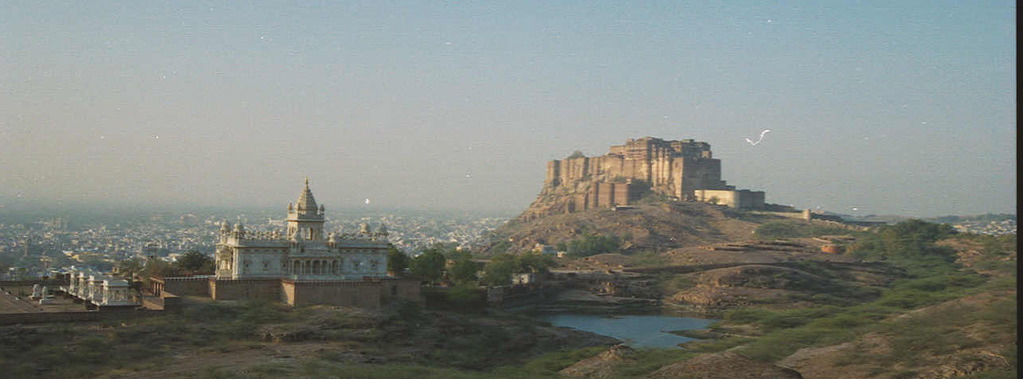 |
Mehrangarh Fort and Jaswant Thada. Fort construction was completed during Maharajah Jaswant Singh's reign.
|
It was by the vigilance of this chief (Mokund Das Kumpawat), and his daring intrepidity, that the many plots laid for Jaswant's life were defeated. He had personally incurred the displeasure of Aurangzeb, by a reply which was deemed disrespectful to a message sent by the royal "Ahadi" (royal messenger), for which the tyrant condemned him to enter a tiger's den, and contend for his life unarmed. Without a sign of fear he entered the arena, where the savage beast was pacing, and thus contemptuously accosted him: "Oh, tiger of the Miyan, face the tiger of Jaswant"; exhibiting to the king of the forest a pair of eyes, which anger and opium had rendered little less inflamed than his own. The animal, startled by so unaccustomed salutation, for a moment looked at his visitor, put down his head, turned around and stalked from him. "You see" exclaimed the Rathore, "that he dare not face me, and it is contrary to the creed of a true rajput to attack an enemy who dares not confront him".
It is written in Tarikh Mohammed Shahi that Aurangzeb, on hearing the news of Maharaja's demise, said, "Darwaja-e kufra shikast" i.e the door opposing the Islamic faith in India is broken. Soon after Maharajah Jaswant Singh's death, Aurangzeb imposed Jizyah. While Jaswant was alive Aurangzeb did not have the courage to impose Jizyah on non-Muslims. V.A. Smith writes on page 438 of his book, Oxford History of India, "the death of Jaswant Singh emboldened the imperial bigot to re-impose the hated Jizyah, or poll-tax on non Muslims".
Durga Das Rathore
When Jaswant Singh Rathore died he had no son and this gave Aurangzeb a chance to appoint a Muslim as the ruler of Marwar. This upset Rathore Rajputs a lot. Two of Jaswant Singh's queens were pregnant when he died. One queen gave birth to Ajit Singh and other to Dalathamban. After Ajit's birth, Rathore generals, chief among them was Durga Das Rathore (a Karnot Rathore) went to Delhi along with the queens and the infants, and asked Aurangzeb that crown of Marwar should be given to Ajit Singh. Aurangzeb was very cunning and he had no intention of handing over the throne of Marwar. He suggested that Ajit should grow up in his harem but internally he wanted to kill them all.
Durga Das sensed this and they smuggled Ajit Singh out of Delhi to the outskirts of the city. When Mughal army came to capture them in Delhi, Durga Das and his men attacked the Mughals and started riding out of Delhi. Raghunandan Bhati and others soaked the streets of Delhi in crimson by flowing the blood of Mughal pursuers. There were about three hundred Rajputs with Durga Das and there were thousands of pursuing Mughals. Every so often 15 - 20 Rajputs would fall behind attack the Mughal pursuers and in the process get themselves killed but it allowed the forward party to create some distance between Ajit and the Mughals. This continued till the evening by which time the Mughals had given up and Durga Das was left with just seven men out of three hundred he started with and reached Jaipur along with Ajit Singh.
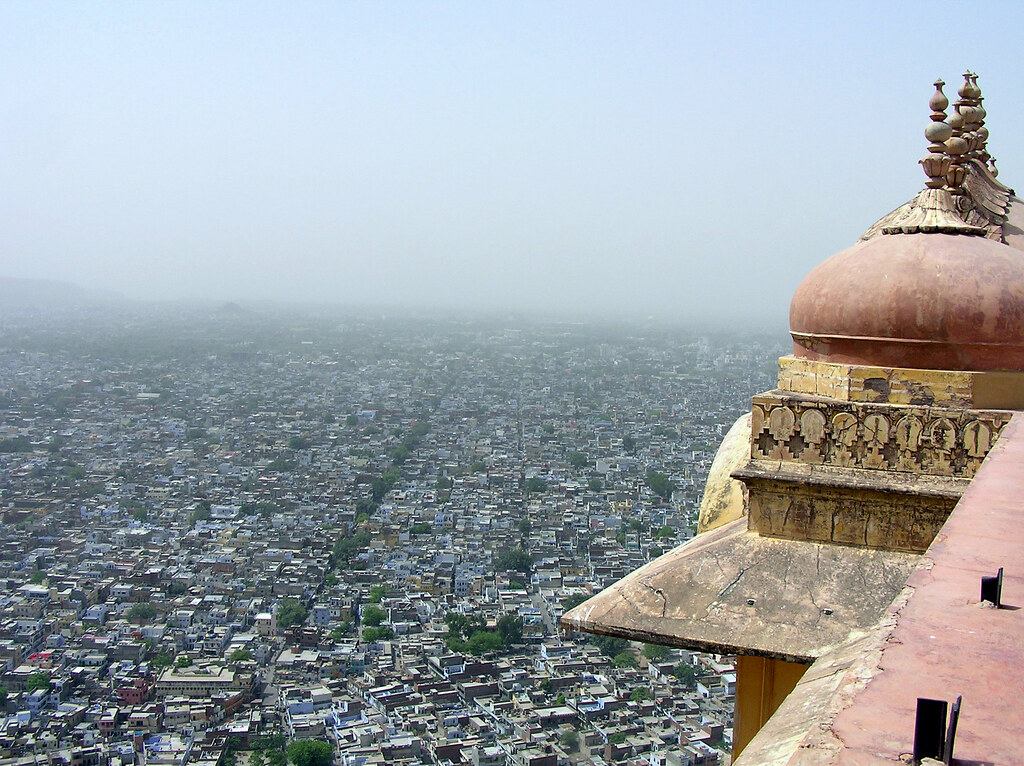 |
| The Rajputs founded several cities of modern-day Rajasthan. The historical city of Jodhpur was founded by the Rathore clan of Rajputs. |
Thereby started the 30 year Rajput rebellion against Aurangzeb. Mewar and Marwar forces combined together and almost killed Aurangzeb when he was trapped in the mountains of Rajasthan but the Mewar king out of magnanimity allowed Aurangzeb to escape. All the trade routes were plundered by Rajputs and they started looting various treasuries of Rajasthan and Gujarat. To crush them Aurangzeb sent many expeditions but no success. These expeditions and drying up of revenue from trade routes running through Rajasthan had severe effect on his resources. In addition the lion of Maharashtra, Shivaji, had freed almost all of Maharashtra and was at constant war with Aurangzeb. Shivaji had some Rajput ancestry. Finally, on his death-bed Aurangzeb complained that his life had been a complete failure. He was the sole reason for Mughal empire's crumbling. His war campaigns had practically left the treasury dry for his progeny.
 |
Cenotaph of Durga Das Rathore near Ujjain.
|
Baron De Boigne payed tribute to rajput (rathaura) valor in his memoirs, which were published by his son in 18th century. De Boigne fought the rathaurs, as part of Mahadaji Scindia's army at Tonga, Lalsot and Medta. James Tod describes the fate of Jaswant Singh's family and the birth of his son Ajit Singh. Following excerpt from Page 45,46 of Annals and Antiquities of Rajasthan:
When Jaswant died beyond the Attock, his wife, the (future) mother of Ajit, determined to burn with her lord, but being in the seventh month of her pregnancy, she was forcibly prevented by Uday Kumpawat. As soon as the tidings reached Jodhpur, the Chandravati queen, taking a turban of her late lord, ascended the pile at Mandore. The Hindu race was in despair at the loss of the support of their faith. The bells of the temple were mute; the sacred shell no longer sounded at sunrise. The queen was delivered of a boy, who received the name of Ajit. As soon as she was able to travel, the Rathore contingent, with their infant prince, his mother, the daughters, and establishment of their late sovereign, prepared to return to their native land. But the unrelenting Aurangzeb, carrying his vengeance towards Jaswant even beyond the grave, as soon they reached Delhi, commanded that the infant should be surrendered to his custody. Aurang offered to divide Maru amongst Marwar nobles if they would surrender their prince; but they replied:
Our country is with our sinews, and these can defend both it and our Lord.
With eyes red with rage, they left the Aum-khas. Their abode was surrounded by the host of the Shah. In a basket of sweetmeats they sent away the young prince, . . . and prepared to defend their honour; they made oblations to the gods, took a double portion of opium, and mounted their steeds. Then spoke Rinchor and Govind, sons of Jodha, and Chandarbhan the Darawat, and the son of Raghu, on whose shoulders the sword had been married at Ujjain, with the fearless Baharmall the Udawat, and the Sujawat, Raghunath. "Let us swim," they exclaimed, "in the ocean of fight. Let us root up these Asuras, and be carried by the Apsaras to the mansions of the sun." Then spake Durga Das Rathore, son of Asakaran, "The teeth of the Yavans are whetted, but by the lightning emitted from our swords, Delhi shall witness our deeds". As thus the chiefs communed, and the troops of the king approached, the Rajloka (wives and daughters of Maharajah Jaswant Singh) of their late lord was sent to inhabit Swarga. Their own wives and daughters, were placed in an apartment filled with gunpowder, and the torch applied--all was soon over. Lance in hand, the Rathores rushed upon the foe, then the music of swords and shields commenced. Wave followed wave in the field of blood. Every tribe and every clan performed its duty in this day's pilgrimage to the stream of the sword, in which Durgadas ground the foe and saved his honour.
Banda Bhadur
When these brave men saw that nothing short of the surrender of all that was dear to a Rajput was intended by the fiend-like spirit of Aurangzeb, their first thought was the preservation of their prince; the next to secure their own honour and that of their late master. The means by which they accomplished this were terrific. Accordingly, "the battle fought by the sons of Duharia (Rathore king who ruled Marwar in ancient time) in the streets of Delhi" is one of the many themes of everlasting eulogy to the Rathores; and the seventh of Sravan, S.1736 (the second month of the Monsoon of A.D. 1680), is a sacred day in the calendar of Maru.
In the midst of this furious contest, the infant prince was saved. DurgaDas and a few chosen friends repaired to the isolated rock of Abu, and placed him in a monastery of recluses. There the heir of Maru was reared in entire ignorance of his birth. Still rumours prevailed, that a son of Jaswant lived; that Durga and a few associates were his guardians; and this was enough for the loyal Rajput, to be his rallying-word in the defense of his rights.
Lakshman Dev was born in Kashmir in 1670 A.D. He was a Minhas Rajput and lived as an ascetic at Nander on the banks of Godavari in Maharashtra.
Guru Gobind Singh, the tenth guru of Sikhs, met Lakshman at his hermitage and encouraged him to give up his ascetic way of life and resume the duties of a real Rajput. Guruji gave Lakshman a new name: Banda Bhadur and asked him to lead Khalsa, the Sikh army to punish the Governor of Sirhind, Wazir Khan, who was personally responsible for the death of Guruji's family and thousands of Sikhs and Hindus. When Banda was on his way to Punjab, Guru Gobind Singh was assassinated by Pathans on the orders of Wazir Khan. Banda Bhadur was not disheartened by this news rather the fire of vengeance started burning stronger in his heart. He continued his journey and raided the Mughal treasuries at Sonepat and Kaithal and used it to strengthen his army. He then destroyed the Mughal armies at Samana, Kunjpura, Ghuram, Thaska and Mustafabad. At Damla the Pathans were routed. When on his way from Mustafabad to Sadhaura (which literally means the abode of Sadhus, was a buddhist holy centre), he heard of indecencies which Qadam-ud-din, ruler of Kapuri, was prone to inflict on the Hindu population, the ascetic Banda decided to punish the Muslim ruler. Kapuri was destroyed and Qadam-ud-din perished.
At Sadhaura the well garrisoned Mughal fort was stormed and the ruler Osman Khan, who committed atrocities against Hindus was killed. In February 1710 he established the first Sikh Kingdom with its capital at Lohgarh, 20 KM south of Nahan. His kingdom was bounded in the north by Shivalik hills, on the west by river Tangri, on the east by river Jamuna and in the south by a line passing through Samana, Thanesar, Kaithal and Karnal. He abolished the Mughal control of land in his kingdom and made the peasants owner of the land. Guru Gobind Singh's dream of political sovereignty was realized by Banda Bhadur within one year of his death.
Banda's name struck terror in the hearts of Muslims, lawless people and dacoits. Robbery, thefts and persecution of Hindus and Sikhs became a thing of the past. His army kept growing and finally he attacked Wazir Khan, the governor of Sirhind. Wazir Khan's army consisted of 30,000 men and Banda had about 15,000 men. Banda first stormed Banur, near Ambala, as the Muslims of this town used to seize cows and oxen of Hindus and slaughter them in there presence. Battle was fought on May 12, 1710 A.D. at Chappar Chiri, 20 KMs from Sirhind. Wazir Khan and several of his commanders were killed in the battle and his army completely destroyed. Khafi Khan, a chronicler of the time records
Banda Bhadur attracted a lot of people from the plains of Haryana and Punjab to the fold of Sikhism as he gave them an opportunity to fight against the tyranny and unjust oppression of the Muslim rulers.
Banda's name struck terror in the hearts of Muslims, lawless people and dacoits. Robbery, thefts and persecution of Hindus and Sikhs became a thing of the past. His army kept growing and finally he attacked Wazir Khan, the governor of Sirhind. Wazir Khan's army consisted of 30,000 men and Banda had about 15,000 men. Banda first stormed Banur, near Ambala, as the Muslims of this town used to seize cows and oxen of Hindus and slaughter them in there presence. Battle was fought on May 12, 1710 A.D. at Chappar Chiri, 20 KMs from Sirhind. Wazir Khan and several of his commanders were killed in the battle and his army completely destroyed. Khafi Khan, a chronicler of the time records
. . . not a man of the army of Islam escaped with more than his life and the clothes he stood in. Horsemen and footmen fell under the swords of the infidels [Sikhs] who pursued them as far as Sirhind.Sirhind was stormed and thus Banda avenged the murder of Guru Gobind Singh and his sons by killing Wazir Khan. Soon other towns were won by Banda and his army. Rai Kot, Saharanpur, Jalalabad, Ludhiana, Jullundur, Hoshiarpur, Batala, Kalanaur and Pathankot were won. The Mughal King of Delhi tried his best to suppress Banda Bhadur but "There was no nobleman daring enough to march from Delhi against them", comments the Mughal source.
Banda Bhadur attracted a lot of people from the plains of Haryana and Punjab to the fold of Sikhism as he gave them an opportunity to fight against the tyranny and unjust oppression of the Muslim rulers.
Protection of Hinduism
A point to note here is that lot of Muslims, Western and some Hindu historians think that Islam/Muslims did not do conversion of Hindus by sword. The argument they give is that there are so many Hindus still today in India. This is completely wrong because most Muslim rulers in India tried to convert as many as they could. Some of the methods used were threat of execution by sword, Jizya (an exorbitant tax on non-Muslims) and religious persecution. In this excerpt from page 58-59 of "A Rediscovery of India: A new subcontinent" by Ansar Hussain Khan, a Pakistani Historian, is described how the Tughlaq sultanate and its followers converted Hindus to Islam.
He used the exemption of paying the jeziya by non-believers as a deliberate method to obtain large scale conversions to Islam. Thousands upon upon thousands of Muslim converts were made in this fashion. He was the first in India to use Jizya methodically for the conversion, and in this he was emulated by many successors on the throne of Delhi. He also cancelled the exemption of Brahmans from paying this tax and re-imposed it upon them.
But it was the strength of Rajput sword and later Maratha and Sikh swords that kept Hinduism alive in India. If there were no Rajputs, Marathas or Sikhs in India, then India would be just like Iraq, Iran, Turkey, or Pakistan in terms of religion of the population. Every month, in the 1000 year presence of Muslims in India there were bloody wars between Hindus and Muslims. This is quite unlike other countries like Iran, where non-Muslims, after loosing a couple of wars gave the Muslims a free hand in converting there population to Islam.
Presence of Rajput generals in Mughal army was a blessing in disguise for the Hindu population as the Mughal army when headed by a rajput general could not engage in wanton destruction of Hindu temples as well as mass conversion of Hindus to Islam. The preservance of Hinduism in India by the Rajput sword against the entire might of Islamic rulers is the most glorious achievement by a race in the annals of world history and every one should know this fact, more so Indians and most definitely each and every Rajput.
In his Annals and Antiquities of Rajasthan James Tod wrote:
What nation on earth could have maintained the semblance of civilization, the spirit or the customs of their forefathers, during so many centuries of overwhelming depression, but one of such singular character as the Rajpoot? . . . Rajasthan exhibits the sole example in the history of mankind, of a people withstanding every outrage barbarity could inflict, or human nature sustain, from a foe whose religion (Islam) commands annihilation; and bent to the earth, yet rising buoyant from the pressure, and making calamity a whetstone to courage. . . . Not an iota of their religion or customs have they lost. . . .
Contrast this to how Muslims converted entire Iranian kingdom, where a very ancient religion of Zoroaster flourished, on the edge of the sword in a very short amount of time and Spain which was conquered and ruled by Islam for 700 years was majority Muslim state till Spanish Christian Kings began driving out the moors and reconverted Muslims back to Christianity. In India, Hindu religion has no concept of conversion. One has to be a born Hindu. (Though of late as a reaction to conversion of tribals by missionaries some Hindu groups have concocted a recipe to make a person Hindu!)
This section is from Page 3 of: The Parsees, Their History, Manners, Customs & Religion. Dosabhoy Framjee. Pub: London: Smith, Elder and Co., 65, Cornhill: 1858.
Suffice it to say, that with Yezdezird, the forty-fifth king in the descent of the race of Kaimurs, ended the ancient Persian monarchy. The neighbouring and wealthy empire of Persia presented too tempting a prize to the fanatic and ambitious spirit, evoked by Mahomed, to remain long unmolested, and in the middle of the seventh century of the Christian era, the Arab sword invaded Persia, under Caliph Omar. In a fierce and well-contested battle with the Persians at the village of Nahavand, about fifty miles from the ancient city of Ecbatana, the fate of the empire was decided.....Yezdezird, abandoning his kingdom as lost, fled the country; and after wandering in solitude and disguise for a period of ten years, was at last treacherously slain by a miller to whom the secret of his identity had been confided (651 AD). ....To escape the sword of Islam some Zoroastrians landed on the coast of Gujarat in 716 A.D. Rajput king of Gujarat gave them land to settle and put no religious restriction on the Zoroastrians. The magnanimity of the Hindu King allowed the Zoroastrian religion to flourish. In modern era some of the top industrialists of India e.g. J.R.D. Tata, Ardeshir Godrej, symphony conductor Zubin Mehta, etc. belong to the the Parsi (Zoroastrian) community.
Thus on the conquest of Persia, the Mahomedan soldiers of the Caliphat of Baghdad traversed the length and breadth of the country, presenting the alternative of death or the Koran, and compelling the conquered nation to accept the one or the other. By these oppressive and cruel means, a hundred thousand persons are said to have daily abjured the faith of there forefathers; and the fire-temples and other sacred places were destroyed or converted into mosques.
Prominent Rajput clans & their main centers
|
|
Clans of Jammu and Himachal
Rajput clans in Jammu and Himachal Pradesh: Jaswal, Chambial, Mankotia, Sambial, Guleria, Dadwal, Jamwal, Chib, Katoch, Suketia, Kutlehria, Baloria, Charak, Bandral, Kahluria etc. [source: History and Culture of Himalayan States by Professor Sukhdev Singh Charak]
List of Famous Modern Day Rajputs
Politics
- Professor Rajendra Singh Tomar (Rajju Bhaiya) (RSS Sar Sanchalak)
- Vishwanath Pratap Singh Gaharwar, Prime Minister of India (Dec.2, 1989-Nov.10, 1990)
- Chandra Shekhar, Prime Minister of India (Nov.10, 1990-June 21, 1991)
- Jaswant Singh Jasol Ex-Foreign Minister, Rajya Sabha MP.
- Dr Karan Singh Dogra (ex-foreign minister of India) Maharajah of Kashmir
- Bhairon Singh Shekhawat, Vice-president of India.
- Vir Bhadur Singh, ex-chief minister of Uttar Pradesh
- Vir Bhadra Singh, ex-chief minister of Himachal Pradesh
- Arjun Singh, HRD minister, India.
- Raman Singh, Chief Minister of Chattisgarh
- Shankar Singh Vaghela, Union Textile Minister of India (Former CM of Gujarat)
- Madhavsinh Solanki (Former CM of Gujarat)
- Dharam Singh, Former CM of Karnataka
- Digvijay Singh, Former Chief Minister of Madhya Pradesh
- Rajnath Singh, President of BJP
Sports
- Ranjit Sinh Jadeja: Cricket. Ranji Trophy is named after him.
- KS Duleepsinhji: Cricketer.
- Rajyavardhan Singh Rathore, olympic silver medalist
- Mahendra Singh Dhoni, famous cricketer.
- Dhyan Chand the great hockey player.
- Chetan Chauhan former opening batsmen of India.
- Ajay Jadeja cricketer
- Maharajah Karni Singh, Olympic Shooter.
- Jaspal Rana Shooter
Defence Forces
- General Maharaj K.S. Rajendrasinhji, Chief of Indian Army.
- Admiral V.S. Shekhawat, Chief of Indian Navy.
Paramvir Chakra winners (Highest gallantry award in India)
- Naik Jadu Nath Singh Rathore
- Company Havaldar Piru Singh Shekhawat
- Captain Gurbachan Singh Salaria
- Major Shaitan Singh Bhati
- Rifleman Sanjay Kumar Dogra
Naik Jadunath Singh, son of Shri Birbal Singh, was born on 21 November 1916, in village Khajuri, Shahjahanpur, Uttar Pradesh. He joined 1 Rajput Regiment on 21 November, 1941.
During the Jammu & Kashmir ops in the winter of 1947, the capture of Jhangar on December 24th, by the Pakistani raiders, placed them in an advantageous position in the Naushahra sector. Being in full command of the communication lines from Mirpur to Punch, they could now build up their forces for attack on Naushahra. The Army was alive to this threat.
In January 1948, they conducted operations to prevent the enemy build up in the area and in the process occupied Kot village to the north-west of Naushahra. In any case an attack on Naushahra was imminent. Brigadier Usman of the 50 Para Brigade had made adequate preparation to thwart this attack by establishing strong pickets on possible enemy approaches. One of these approaches lay to the north of Naushahra through Tain Dhar. The expected enemy attack came on the foggy morning of February 6th, at 0640 hrs. The enemy started the attack by opening fire from their pickets on the Tain Dhar ridge on an Indian patrol. Simultaneously, the whole of Tain Dhar feature and the surrounding hills became live with bursts of machine gun and crunches of mortar fire. Meanwhile under the cover of darkness the enemy crept up to the Indian pickets. In the first light of dawn the men on the post saw thousands of hostiles creeping up to them. On the crucial day of February 6th, Naik Jadunath Singh was in command of a forward post of picket No.2 at Tain Dhar. The post was garrisoned by nine men. The enemy launched their attack in successive waves to take this post.
At this juncture Naik Jadunath Singh displayed great valour & superb leadership and used his small force in such a manner that the enemy retreated in utter confusion. When four of his men were wounded he re-organised the battered force for meeting another onslaught. The post did not give in despite its being outnumbered. When all men including himself were wounded, he personally took over the bren gun from the wounded bren-gunner. The enemy was now right on the walls of the post. Naik Jadunath Singh, unmindful of personal safety encouraged his men to fight. His fire was so devastating that what looked like a certain defeat was turned into a victory. Thus the post was saved a second time.
By now all men of the post had turned into casualties. The enemy put in his third and final attack determined to capture the post. Naik Jadunath Singh, wounded and alone, rose to give a battle for the third time. He came out of the Sangar and firing his sten gun charged on the advancing enemy. The surprised enemy fled in disorder. He met a gallant death, in this third and last charge when two enemy bullets pierced him in the head and the chest. At a most critical stage in the battle for the defence of Naushahra, he saved his picket from being overrun by the enemy.
He was honoured with the highest war-time gallantry medal, Param Vir Chakra, posthumously.
Company Havaldar Piru Singh Shekhawat, son of Shri Lal Singh was born on 20 May 1918, at village Beri, Jhunjhunu, Rajasthan. He joined 6 Rajputana Rifles on 20 May, 1936.
During the Jammu & Kashmir operations in summer of 1948, the Pakistani raiders mounted a strong counter offensive in the Tithwal sector. The enemy also forced the Indian Army to vacate their forward positions across river Kishanganga. After the setback, the Indian troops took position on the Tithwal ridge.
At this juncture, 6 Rajputana Rifles was moved from Uri to Tithwal to strengthen the 163 Brigade in its impending offensive in the sector. The Indian offensive commenced on 11 July 1948. The operation went on well till July 15th. The reconnaissance reports, however, revealed that the enemy was holding a high feature in the area and that its capture was essential for making any further progress. Further ahead lay another feature also held in strength by the enemy. The 6 Rajputana Rifles was assigned the task of securing these two features. The 'D' Company was to secure the first feature. The 'C' Company was to capture the second feature after the 'D' Company had carried out its task. The 'D' Company launched its attack on the objective at 0130 hrs on July 18th. The path to the objective was about one metre wide with deep ravines on either side. Overlooking this narrow path were the hidden enemy bunkers. The company was subjected to heavy fire and within half an hour it suffered 51 casualties. During this battle, Company Havildar Major Piru Singh was with the leading section of the company, more than half of which was mowed down by the devastating fire of the enemy. He rushed forward to deal with the enemy medium machine gun post which was playing havoc with his troops. Enemy grenade splinters ripped open his clothes and wounded several parts of his body. But this did not deter him. He still continued the advance, shouting the battle cry, "Raja Ramchandra Ki Jai." Rushing forward he bayoneted the crew of the enemy MMG, with his own sten gun, silenced the menacing gun and occupied the post. By this time all his companions lay behind either dead or wounded.
The responsibility of clearing the enemy from the hill feature lay with him alone. Bleeding profusely he inched forward to attack the second enemy MMG post. At this juncture a grenade wounded him in the face. The blood dripping from his face almost blinded him. By now all sten gun ammunition with him had been spent. He courageously crawled out of the occupied enemy trench and hurled grenades at the next enemy post. CHM Piru Singh then jumped into another trench and bayoneted two enemy soldiers to death. As CHM Piru Singh, emerged out of the second trench to charge on the third enemy bunker, he was hit in head by a bullet and was seen dropping on the edge of the enemy trench. There was an explosion in the trench which showed that the grenade had done its work. By then CHM Piru Singh's wound had proved fatal.
"He paid with his life for his singularly brave act, but he left for the rest of his comrades a unique example of single-handed bravery and determined cold courage. The country is grateful," wrote Prime Minister Jawaharlal Nehru to Mrs. Tarawati, 75-year old mother of Company Havildar Major Piru Singh, "for this sacrifice made in the service of the Motherland, and it is our prayer that this may give you some peace and solace."
He was honoured with the highest war-time gallantry medal, Param Vir Chakra.
During the Jammu & Kashmir ops in the winter of 1947, the capture of Jhangar on December 24th, by the Pakistani raiders, placed them in an advantageous position in the Naushahra sector. Being in full command of the communication lines from Mirpur to Punch, they could now build up their forces for attack on Naushahra. The Army was alive to this threat.
In January 1948, they conducted operations to prevent the enemy build up in the area and in the process occupied Kot village to the north-west of Naushahra. In any case an attack on Naushahra was imminent. Brigadier Usman of the 50 Para Brigade had made adequate preparation to thwart this attack by establishing strong pickets on possible enemy approaches. One of these approaches lay to the north of Naushahra through Tain Dhar. The expected enemy attack came on the foggy morning of February 6th, at 0640 hrs. The enemy started the attack by opening fire from their pickets on the Tain Dhar ridge on an Indian patrol. Simultaneously, the whole of Tain Dhar feature and the surrounding hills became live with bursts of machine gun and crunches of mortar fire. Meanwhile under the cover of darkness the enemy crept up to the Indian pickets. In the first light of dawn the men on the post saw thousands of hostiles creeping up to them. On the crucial day of February 6th, Naik Jadunath Singh was in command of a forward post of picket No.2 at Tain Dhar. The post was garrisoned by nine men. The enemy launched their attack in successive waves to take this post.
At this juncture Naik Jadunath Singh displayed great valour & superb leadership and used his small force in such a manner that the enemy retreated in utter confusion. When four of his men were wounded he re-organised the battered force for meeting another onslaught. The post did not give in despite its being outnumbered. When all men including himself were wounded, he personally took over the bren gun from the wounded bren-gunner. The enemy was now right on the walls of the post. Naik Jadunath Singh, unmindful of personal safety encouraged his men to fight. His fire was so devastating that what looked like a certain defeat was turned into a victory. Thus the post was saved a second time.
By now all men of the post had turned into casualties. The enemy put in his third and final attack determined to capture the post. Naik Jadunath Singh, wounded and alone, rose to give a battle for the third time. He came out of the Sangar and firing his sten gun charged on the advancing enemy. The surprised enemy fled in disorder. He met a gallant death, in this third and last charge when two enemy bullets pierced him in the head and the chest. At a most critical stage in the battle for the defence of Naushahra, he saved his picket from being overrun by the enemy.
He was honoured with the highest war-time gallantry medal, Param Vir Chakra, posthumously.
Company Havaldar Piru Singh Shekhawat, son of Shri Lal Singh was born on 20 May 1918, at village Beri, Jhunjhunu, Rajasthan. He joined 6 Rajputana Rifles on 20 May, 1936.
During the Jammu & Kashmir operations in summer of 1948, the Pakistani raiders mounted a strong counter offensive in the Tithwal sector. The enemy also forced the Indian Army to vacate their forward positions across river Kishanganga. After the setback, the Indian troops took position on the Tithwal ridge.
At this juncture, 6 Rajputana Rifles was moved from Uri to Tithwal to strengthen the 163 Brigade in its impending offensive in the sector. The Indian offensive commenced on 11 July 1948. The operation went on well till July 15th. The reconnaissance reports, however, revealed that the enemy was holding a high feature in the area and that its capture was essential for making any further progress. Further ahead lay another feature also held in strength by the enemy. The 6 Rajputana Rifles was assigned the task of securing these two features. The 'D' Company was to secure the first feature. The 'C' Company was to capture the second feature after the 'D' Company had carried out its task. The 'D' Company launched its attack on the objective at 0130 hrs on July 18th. The path to the objective was about one metre wide with deep ravines on either side. Overlooking this narrow path were the hidden enemy bunkers. The company was subjected to heavy fire and within half an hour it suffered 51 casualties. During this battle, Company Havildar Major Piru Singh was with the leading section of the company, more than half of which was mowed down by the devastating fire of the enemy. He rushed forward to deal with the enemy medium machine gun post which was playing havoc with his troops. Enemy grenade splinters ripped open his clothes and wounded several parts of his body. But this did not deter him. He still continued the advance, shouting the battle cry, "Raja Ramchandra Ki Jai." Rushing forward he bayoneted the crew of the enemy MMG, with his own sten gun, silenced the menacing gun and occupied the post. By this time all his companions lay behind either dead or wounded.
The responsibility of clearing the enemy from the hill feature lay with him alone. Bleeding profusely he inched forward to attack the second enemy MMG post. At this juncture a grenade wounded him in the face. The blood dripping from his face almost blinded him. By now all sten gun ammunition with him had been spent. He courageously crawled out of the occupied enemy trench and hurled grenades at the next enemy post. CHM Piru Singh then jumped into another trench and bayoneted two enemy soldiers to death. As CHM Piru Singh, emerged out of the second trench to charge on the third enemy bunker, he was hit in head by a bullet and was seen dropping on the edge of the enemy trench. There was an explosion in the trench which showed that the grenade had done its work. By then CHM Piru Singh's wound had proved fatal.
"He paid with his life for his singularly brave act, but he left for the rest of his comrades a unique example of single-handed bravery and determined cold courage. The country is grateful," wrote Prime Minister Jawaharlal Nehru to Mrs. Tarawati, 75-year old mother of Company Havildar Major Piru Singh, "for this sacrifice made in the service of the Motherland, and it is our prayer that this may give you some peace and solace."
He was honoured with the highest war-time gallantry medal, Param Vir Chakra.
Captain Gurbachan Singh Salaria, son of Shri Munshi Ram, was born on 29 November 1935, at village Jhangal, Gurdaspur, Punjab. He was commissioned in 1 Gorkha Rifles on 9 June, 1957.
On 5 December 1961, 3/1 Gorkha Rifles was ordered to clear up a roadblock established by the gendarmerie at a strategic roundabout at Elizabethville, Katanga. The plan was that one company with two Swedish armoured cars would attack the position frontally and Capt. Gurbachan Singh Salaria with two sections of Gorkhas and two Swedish armoured personnel carriers would advance towards this roadblock from the airfield to act as a cutting-off force. Capt. Salaria with his small force arrived at a distance of 1500 yards from the roadblock at approximately 1312 hours on 5 December and came under heavy automatic and small arms fire from an undetected enemy position on his right flank. The enemy also had two armoured cars and about 90 men opposing Capt. Salaria's small force. Capt. Salaria appreciating that he had run into a subsidiary roadblock and ambush and that the enemy force might reinforce the strategic roundabout and thus jeopardize the main operation, decided to remove this opposition. He led a charge with bayonets, kukris and grenades supported by a rocket launcher.
In this gallant engagement, Capt. Salaria killed 40 of the enemy and knocked out the two armoured cars. This unexpectedly bold action completely demoralised the enemy who fled despite his numerical superiority and protected positions. Capt. Salaria was wounded by a burst of automatic fire in his neck but continued to fight till he collapsed owing to profuse bleeding. Capt. Salaria's gallant action had prevented any movement of the enemy force towards the main battalion's action at the roundabout. It had also prevented the encirclement of UN Headquarters in Elizabethville. Capt. Salaria subsequently died of his wounds. Capt. Salaria's personal example, utter disregard for his personal safety and dauntless leadership inspired his small but gallant force of 26 Gorkhas to hold on to their position, dominate the enemy and inflict heavy casualties despite the enemy's superiority in numbers and tactical position.
Capt. Salaria's leadership, courage, unflinching devotion to duty and disregard for his personal safety were in the best traditions of our army and he was awarded Param Vir Chakra, the highest wartime gallantry medal, posthumously.
Major Shaitan Singh Bhati, son of Lt. Col. Hem Singh, was born on 1 December 1924, at village Banasar, Jodhpur, Rajasthan. He was commissioned in the Kumaon Regiment on 1 August, 1949.
During the 1962 Indo-China conflict, 13 Kumaon was deployed in Chushul sector. The 'C' Coy of the battalion led by Major Shaitan Singh held a crucial position at Rezang La, at a height of 5000 metres. The company area was defended by five platoon positions and the surrounding terrain isolated it from the rest of the battalion. The expected Chinese attack on Rezang La came on November 18th in the morning. It was the end of a very cold winter night. The icy winds howling through Rezang La were biting and benumbing. In the dim light of the morning, the Chinese were seen advancing through nullahs to attack No.7 and No.8 platoon positions.
The Indian troops fell on their prepared positions to face the enemy offensive. At 0500 hours when the visibility improved both platoons opened up on the advancing enemy with rifles, light machine guns, grenades and mortars. The nullahs were littered with dead bodies. The survivors took position behind boulders and the dead bodies. The enemy was not, however, discouraged. They subjected the Indian positions to intense artillery and mortar fire at about 0540 hours. Soon about 350 Chinese troops commenced advance through the nullahs. This time, No.9 Platoon, which held fire till the enemy was within 90 metres opened up with all weapons in their possession. Within minutes, the nullahs were again full of dead bodies. Unsuccessful in frontal attack, the enemy, approximately 400 strong, then attacked from the rear of the company position. They simultaneously opened intense medium machine gun fire on No.8 Platoon. This attack was contained at the barbed wire fencing of the post. The enemy then resorted to heavy artillery and mortar shelling. An assault group of 120 Chinese also charged No.7 Platoon position from the rear. However, Indian 3-inch mortar killed many of them. When 20 survivors charged the post, about a dozen Kumaonis rushed out of their trenches to engage them in a hand-to-hand combat. Meanwhile, the enemy brought up fresh reinforcements. The encirclement of No.7 Platoon was now complete. The platoon, however, fought valiantly till there was no survivor. No.8 Platoon also fought bravely to the last round.
Major Shaitan Singh, the Company Commander, displayed exemplary leadership and courage in the battle of Rezang La. He led his troops most admirably. Unmindful of his personal safety he moved from one platoon post to another and encouraged his men to fight. While moving among the posts he was seriously wounded. But he continued to fight along with his men. While he was being evacuated by two of his comrades, the Chinese brought heavy machine gun fire on them. Major Shaitan Singh sensed danger to their lives and ordered them to leave him. They placed him behind a boulder on the slopes of a hill, where he breathed his last. In this action, 109 Kumaonis out of a total of 123 were killed. The Chinese suffered many more in killed. After the war was over, the body of Major Shaitan Singh was found at the same place. It was flown to Jodhpur and cremated with full military honours.
Major Shaitan Singh was awarded Param Vir Chakra, the highest wartime gallantry medal, posthumously, for his leadership and devotion to duty.
Rifleman Sanjay Kumar was born at village Bakain, Bilaspur, Himachal Pradesh.
Rifleman Sanjay Kumar, 13 JAK Rifles, was the leading Scout of a team tasked to capturing Area Flat Top on 04 July 1999 being held by Pakistani-backed militants. Having scaled the cliff, the team was pinned down by machine gun fire from an enemy bunker, 150 meters away. Rifleman Kumar, realizing the magnitude of the problem and the detrimental effect this bunker would have in the capture of Area Flat Top, displayed extraordinary courage. Without concern for personal safety, he crawled alone up the ledge, along a flank, and charged towards the enemy bunker, through a hail of automatic fire. Almost instantly he took two bullets in his chest and forearm. Bleeding profusely from the bullet wounds, he continued the charge towards the bunker. Unhesitant, he then picked up the enemy machine gun and crept towards the second enemy bunker. Three enemy soldiers, taken completely by surprise were killed by him on the spot. Inspired by his dare devil act the rest of the platoon, emotionally charged, assaulted the feature and captured Area Flat Top.
For his sustained display of the most conspicuous personal bravery and gallantry of the highest order in the face of the enemy, Rifleman Sanjay Kumar was awarded the Param Vir Chakra, India's highest medal for gallantry.
Mahavir Chakra winners (Second highest gallantry award in India)
- Brigadier Rajendra Singh Dogra
- Sepoy Dewan Singh
- Major Khushhal Chand
- Lieutenant Kishan Singh Rathore
- Brigadier Yadunath Singh Bhati
- Major Thakur Prithi Chand
- Rifleman Dhonkal Singh
- Naik Nar Singh
- Lieutenant Colonel Kaman Singh Pathania
- Lt. Col. Anant Singh Pathania
- Second Lieutenant Bhagwan Dutt Dogra
- Brig Sher Pratap Singh Shrikent
- Rifleman Jaswant Singh Rawat
- Captain Chander Narain Singh
- Lieutenant Colonel Raghubir Singh Rajawat
- Major Anup Singh Guhilote
- Lieutenant Colonel Rajkumar Singh
- Major Basdev Singh Mankotia
- Lieutenant Colonel Maharajah Sawai Bhawani Singh Rajawat
- Major Jaivir Singh
- Group Captain Chandan Singh Champawat
- Naik Sugan Singh Rathore
- Lance Naik Drig Pal Singh Rathore
- Lieutenant Colonel Hanut Singh Rathore
- Colonel Udai Singh Inda
- Captain Pratap Singh
- Major Rajesh Singh Adhikari On 30 May 1999, as a part of battalion operations to capture the Tololing feature, Major Rajesh Singh Adhikari, 18 Grenadiers (Mech. Inf.) was tasked to secure the initial foothold by capturing its forward spur where the enemy held a strongly fortified advance position. The post was located in a treacherous, mountainous terrain at about 15,000 feet and covered with snow.
Brigadier Rajendra Singh, son of Thakur Harnam Singh was born on 25 October 1928 at Rawalpindi (town named after Bappa Rawal of Chittaur). He was Chief of Staff of J&K state forces.
In October 1947, Pakistan supported raiders launched an attack on Muzaffarabad in Kashmir. The raiders made a dash for Baramulla and Srinagar. A valiant and courageous rearguard action by Brigadier Rajendra Singh, Chief of Staff of the State Forces, and a handful of his men delayed the advance of the Pakistani army by four crucial days. This gave the Indian Army time to land its troops in Srinagar on the morning of October 27, after Maharajah Hari Singh had signed the Instrument of Accession. Brigadier Rajendra Singh and his men put up a stiff defence even though vastly outnumbered. They were eventually overwhelmed by the raiders' superior numbers and killed. Brigadier Rajendra Singh was the first senior officer to lay down his life for the defence of the country after independence. The Indian Army fought some spirited actions around Srinagar city, the most noteworthy being the battle of Budgam and Shalteng. These actions resulted in the complete rout of the raiders, who were chased by the Indian Army to Uri and beyond.
Brigadier Rajendra Singh was awarded Mahavir Chakra, posthumously for his outstanding leadership, courage and sense of duty.
Sepoy Dewan, son of Shri Udai Singh was born on 4 March 1923, at village Purdam, Tejam, Pithoragarh, Uttar Pradesh. He joined 4 Kumaon Regiment on 4 March 1943.
On 3rd November 1947, 700 Pakistani raiders suddenly attacked a company of 4 Kumaon Regiment in Badgam area in Kashmir. One of the platoons came under heavy fire and orders went out to the platoon commander to withdraw. But the commander could not comply. The enemy was too close. If the platoon attempted to withdraw, the soldiers would be exposed to enemy fire. As the commander wondered what he should do, his gunner Sepoy Dewan Singh, realizing that they were in desperate situation, picked up his bren gun and began firing, with such deadly accuracy and speed that the enemy left behind at least 15 dead and was forced to fall back. This enabled the beleaguered platoon to effect a quick withdrawal. When the enemy realized that the platoon had withdrawn and there was only one man left, they concentrated their fire on him but to their chagrin lone gunner kept on firing, keeping them pinned down. Finally a bullet found it's mark and the brave sepoy's gun fell silent.
Sepoy Dewan Singh was awarded the Mahavir Chakra posthumously for his exceptional courage, gallantry and devotion to duty.
Major Khushhal Chand was born on 26 September 1909. His family later moved and settled in village Geysnur, Keylong, Himachal Pradesh. He was commissioned in the Dogra Regiment on 15 September 1941. Subsequently he rose to the rank of Lieutenant Colonel.
In January 1948, Ladakh lay largely unprotected and the Pakistani raiders were gradually closing in on it. Major Khushhal Chand was sent to delay the advance of the enemy. This the major did with great skill and ingenuity, using guerrilla tactics. He would strike and retreat and then strike again somewhere else, making the enemy think there was a large Indian force in the area. He delayed the enemy advance on Leh along the Indus valley for four months. On one ocassion he and a sepoy held the Khaltsi bridge for 24 hrs. In the night while the sepoy kept firing, he set fire to the bridge, leaving the enemy stranded on the other side. The major's tactics slowed down the progress of the enemy and gave the Indian army time to organise the defence of Ladakh. Throughout these operations Major Chand fought without adequate rations, weapons and ammunition and led his small band to success with great vigour and skill.
Major Khushhal Chand was awarded the Mahavir Chakra.
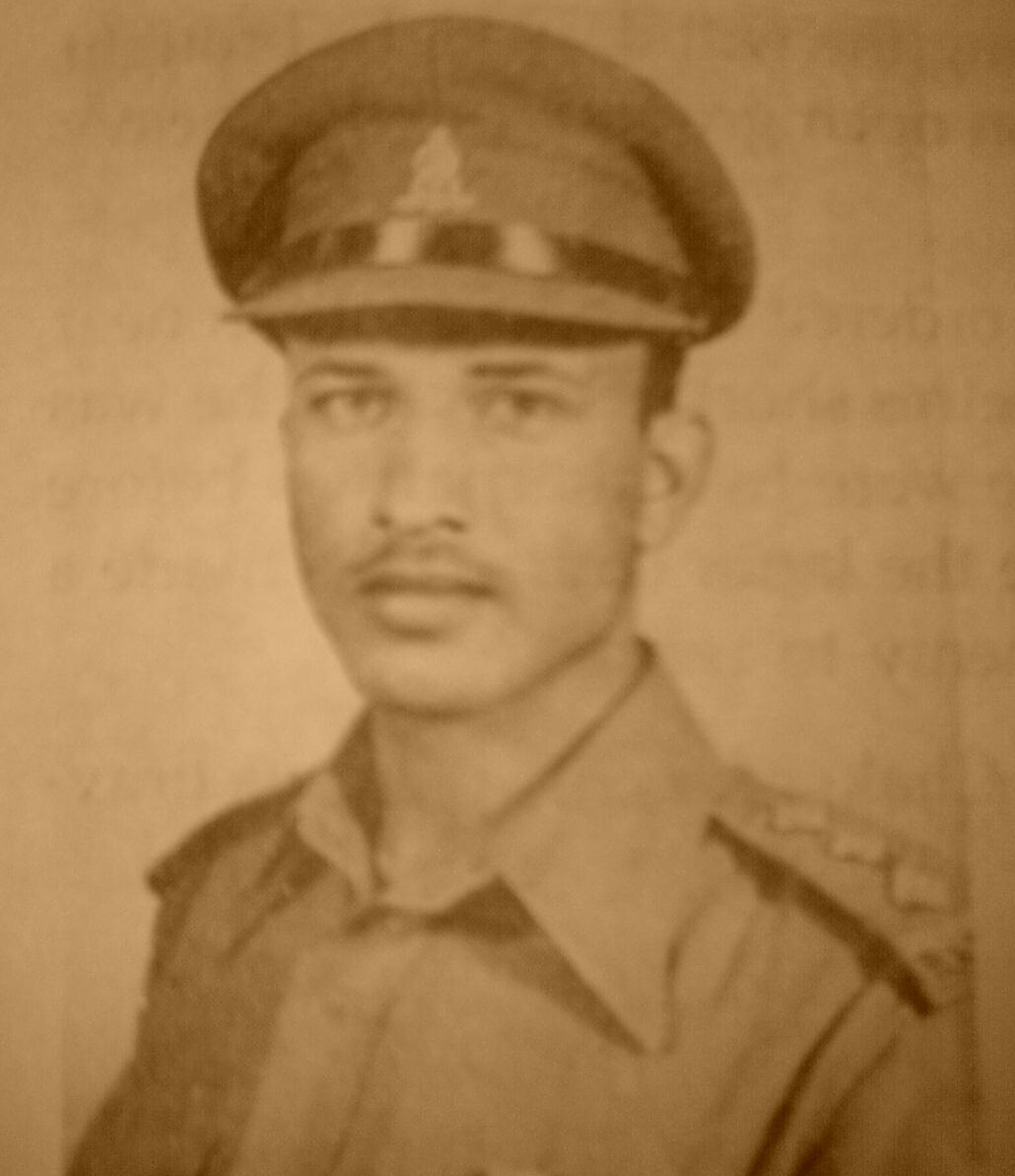
Lieutenant Kishan Singh Rathore was born on 1 October 1929, in Bikaner, Rajasthan. He was commissioned in the Rajput Regiment on 13 October, 1946. Subsequently he rose to the rank of Colonel in the Indian Army.
On 6th February 1948, Lieutenant Kishan Singh Rathor and 70 men of the Rajput regiment deployed at Tain Dhar were attacked by 1500 Pakistani intruders. The Lieutenant inspired his soldiers by moving among them in the pickets. On several occasions he personally carried the ammunition to the pickets braving the incessant enemy fire. His exemplary leadership enabled the Indians to hold on.
In March, Lt. Rathor was deployed as an intelligence officer at Koman Gosha Dhar. When the Indian position came under intense enemy fire, Lt. Rathor led a platoon attack on the enemy's left to ease the pressure. When one of the men was hurt the Lieutenant showed great bravery by going to retrieve the body of his fallen comrade. Again a month later, on 9 April 1949, he led his platoon to Jhangar. 350 metres short of objective he was caught under heavy enemy fire. There were two alternatives before him -- to withdraw or advance. He chose the later and in a successful bayonet charge compelled the Pakistanis to retreat.
Lieutenant Rathore was awarded the Mahavir Chakra for conspicuous bravery.
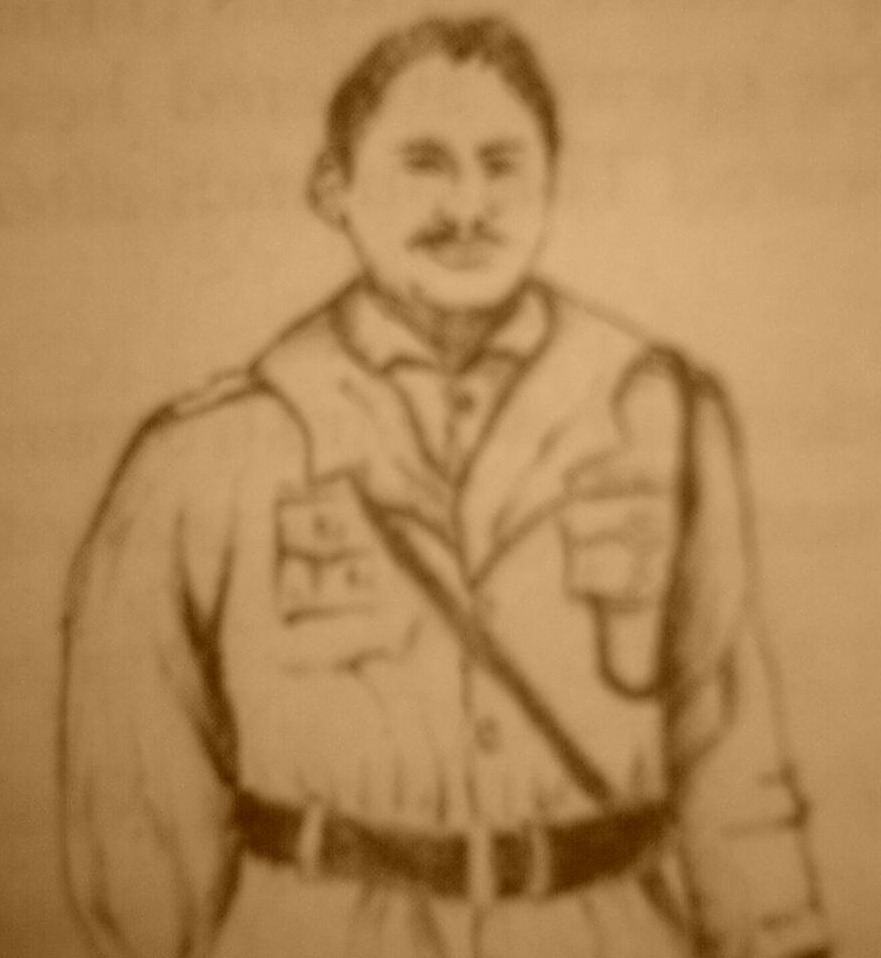
Brigadier Yadunath Singh, son of Colonel Gridhari Singh, was born on 11 February 1907, in Rajasthan. He was commissioned in the 4 Kumaon Regiment on 30 August, 1928. He rose to the rank of Major General.
All through the summer of 1948, Brigadier Yadunath Singh of the Kumaon Regiment displayed exemplary leadership skills during the Indian army's operations in Kashmir. On 5th March 1948, the Brigadier led the 19 Infantry Brigade in a top secret mission for the recapture of Jhangar. The rivers and nullahs were in full spate due to heavy rain and the enemy kept up continual firing. Undaunted, he crossed the overflowing Jambir Nullah, at the very head of his Battalion and succeeded in establishing a bridge head, which greatly assisted the Indian Army's operations in that area.
In April, the Brigadier was involved in the capture of Rajauri. Despite a sprained ankle, he remained in the thick of battle, constantly encouraging his men. His leadership was evident in the Indian army's successes in later operations at Barwali Ridge, when he effected a link up with the Indian Battalion at Punch, inflicting heavy casualties on the enemy.
In recognition of his bravery and leadership skills he was honoured with the Mahavir Chakra.
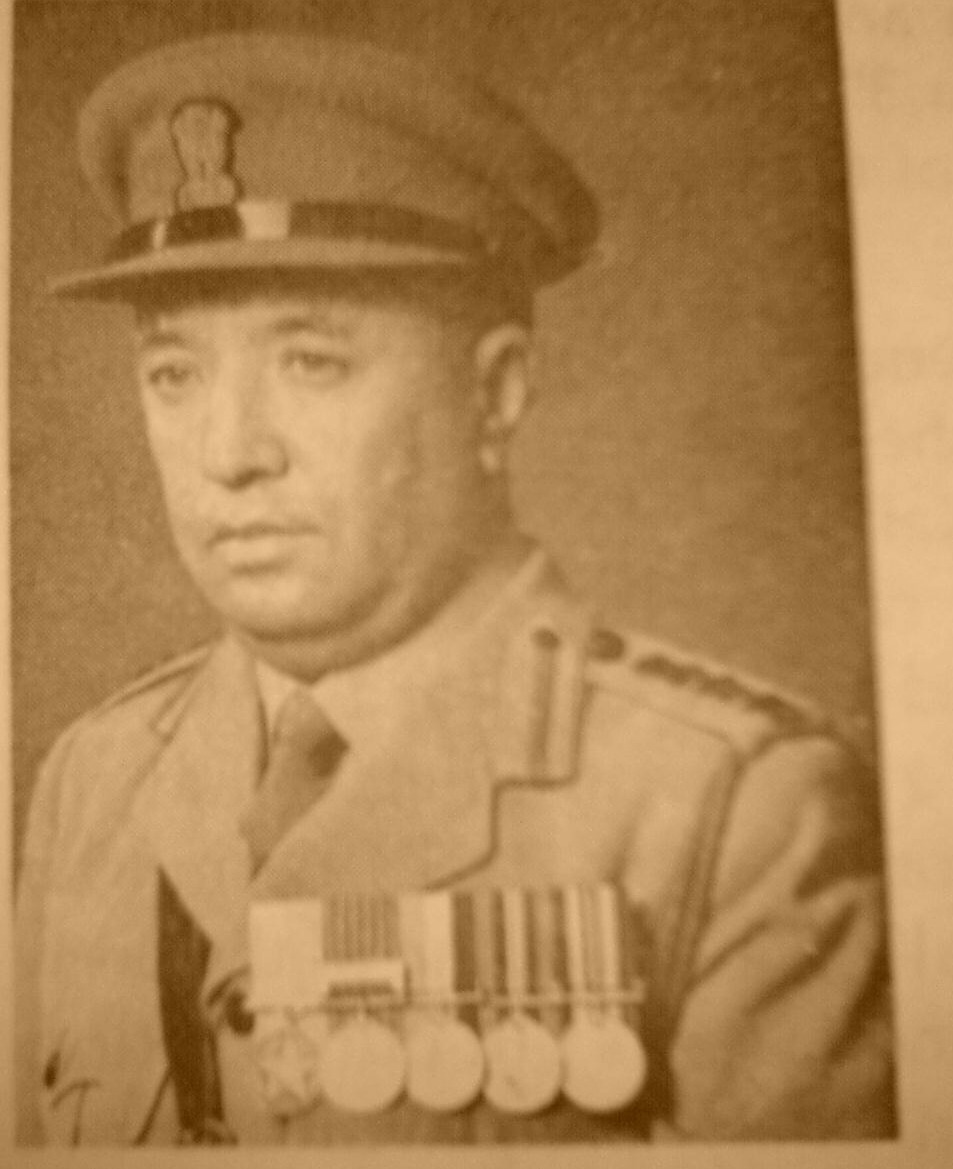
Major Thakur Prithi Chand, son of Rai Bhadur Thakur Amar Chand, was born on 1 January 1911, in village Rangri, Manali, Himachal Pradesh. He was commissioned in the Dogra Regiment. He rose to the rank of Lieutenant Colonel.
On the 8th of March 1948, Major Thakur Prithi Chand and his men completed their arduous three week march to Leh. Their mission was to raise and train a local militia that would defend Ladakh against imminent Pakistani intrusions. By May, a 200-strong Indian force was in place but the Pakistani supported raiders had overrun most of Baltistan and Kargil. To contain the enemy advance towards Leh along the Indus and Nubra river valleys, the major resorted to guerrilla warfare tactics. His daring raids and ambushes confused the enemy and slowed them down. On one ocassion, the raiders supported by the howitzers attacked one of the Indian forward pickets in Leh forward post. Soon after, the Major led his men deep into enemy territory and successfully destroyed an enemy howitzer. Major Thakur Prithi Chand and his loyal force played a major role in defending Ladakh.
The gallant officer was awarded the Mahavir Chakra for his inspiring leadership, courage and bravery.
Rifleman Dhonkal Singh, son of Shri Simrath Singh, was born on 1 December 1923, in village Sekala, Jodhpur, Rajasthan. He joined 6 Rajputana Rifles on 1 December 1944.
On 29th April,1948, 6 Raj Rif was ordered to capture a feature overlooking the Nalwa picket ('Uri Ka Morcha') with a view to strengthen the defence of Uri. Rifleman Dhonkal Singh who was guiding his platoon as the leading scout received serious injury to his left shoulder when his platoon came under heavy LMG fire. Despite the serious injury the brave soldier crawled forward to the flank of the enemy and when within a few metres of the post destroyed it with a hand grenade. Three enemy personnel were killed and the rest abandoned the post and ran back. While pursuing some of the fleeing enemy soldiers he was again hit by grenade splinters in the face and chest. He began bleeding profusely and he knew his end was near. Summoning all his last reserves of energy he flung a grenade and killed two of the enemy, including their commander. Then he fell down dead. His bravery enabled his company to capture the strategic post without further loss of life.
For his supreme sacrifice, Dhonkal Singh was awarded Mahavir Chakra, posthumously.
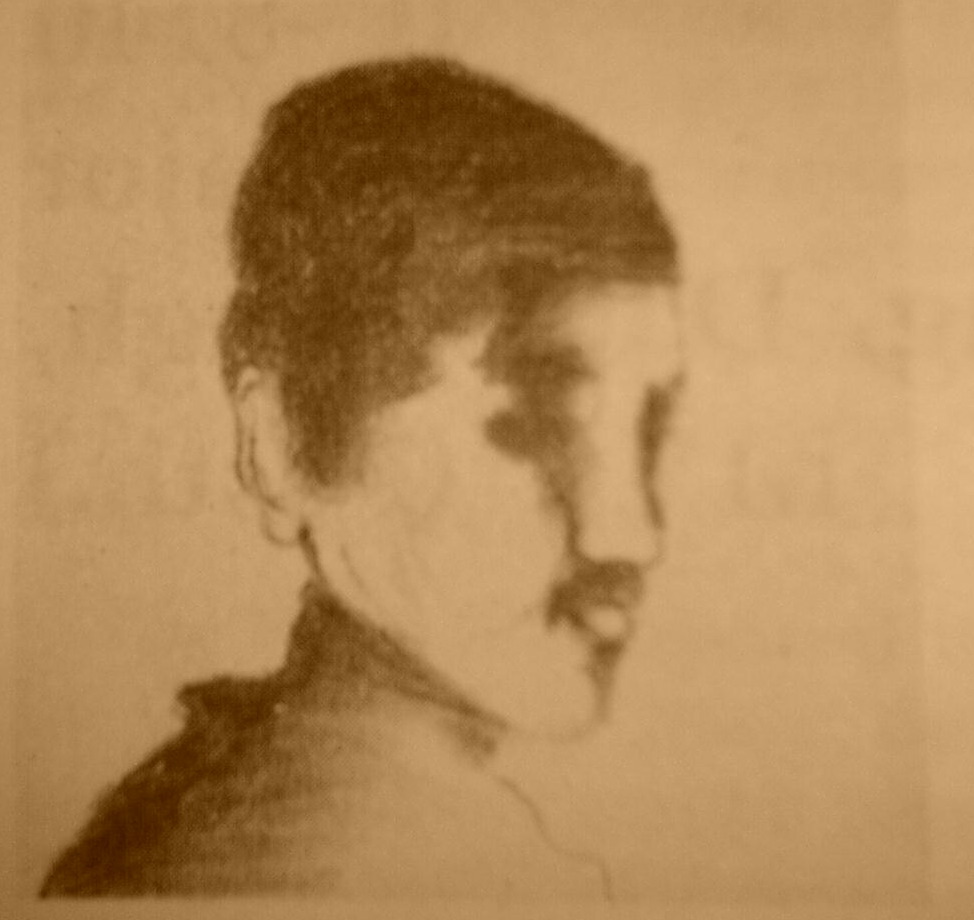
Naik Nar Singh, son of Shri Uttam Singh was born on 14 March 1926 in village Gangolakatuli, Almora, Uttar Pradesh. He was enrolled in 4 Kumaon on 14 March 1944.
During the 1947-48 Jammu & Kashmir operations, the build-up of the Pakistani forces in the Chakothi area of Handwara sector in May 1948 was a matter of great concern for the Indian commanders. The enemy was holding the area in brigade strength. To meet this threat, 77 Para Brigade was moved to Pandu area, to operate north of Jhelum, so as to cut the enemy line of communication and harass them on the rear. In these operations, 4 Kumaon was ordered to capture the hill feature, Master, north of Jhelum. It was a narrow and steep feature, much like a pyramid, covered with dense pine forest on one side. The other side was barren. The approach to it lay along a very narrow and bridle path. The enemy was holding it with 1 Coy, 1 MMG section and 1 mortar section. The approach to the position was covered by the enemy with 2 MMGs and 6 LMGs.
The advantage lay with the enemy because they occupied a higher ground. During this operation, Naik Nar Singh commanded a section. The attack commenced at 0530 hours. But owing to the lack of space for manoeuvring and intense enemy fire, the 'B' Company could make no progress. During the second assault an enemy bullet hit Naik Nar Singh on the right shoulder blade. A stream of blood started flowing out of his body. The matter was reported to the Platoon Commander who advised him to evacuate. The Company Commander also ordered him not to take part in the third assault. But he maintained a stoic silence. During the third attempt on Master feature, Naik Nar Singh's section led the assault. As the troops started moving out of the concentration area he quietly slipped out and took over the command of his section. While on the lead he spotted an enemy LMG. He encouraged his comrades in his faint voice to push on, "Kumaoni Ke Bachho Jan Chale Jae, Lekin Dushman Ke Aj Tukre-Tukre Kar Dalo, Piche Nahi Hatna." (Oh, the Children of Kumaon worry not even if your life goes, but cut the enemy into pieces today, do not retreat).
Then firing his sten gun, Naik Nar Singh jumped into the enemy bunker, bayoneted two of the gunners and captured the gun. In this attack the enemy was totally routed. The Master hill feature was in Kumaoni hands by 1130 hours. Many guns, rifles and a large quantity of ammunition and stores were captured. The enemy suffered 20 killed and 20 injured. Indian troops suffered 2 killed and 7 wounded. Meanwhile, Naik Nar Singh had suffered heavy loss of blood and was found dead in the enemy bunker lying on top of his two victims, holding fast a bren gun he had captured from the enemy.
Naik Nar Singh was awarded the Maha Vir Chakra for outstanding gallantry and devotion to duty, posthumously.

Lt. Col. Kaman Singh, son of Dafadar Vijay Singh Pathania (Vijay Singh served with 23 Cavalry during Mesopotamia campaign in WW1), was born on 23 April 1917, at Ladori, Nurpur, Kangra, Himachal Pradesh. He was commissioned in the Garhwal Rifles on 22 December, 1940. Two of his sons fought during the Indo-Pak War of 1971.
On 18 May 1948, during Kashmir Ops, 3rd Battalion, Garhwal Rifles was given the task of securing Tragham ridge. Two companies had moved out at night with the object of securing ring contour behind the ridge and advancing on from the rear, while the 3rd company launched a frontal attack, supported by armoured cars, from the base at Pethahir. Lt. Col. Kaman Singh was himself leading this attack. No sooner his company had started advance it encountered very heavy resistance from lower features and around the Pethahir position. The latter position was being monitored and sniped constantly. Owing to bridges having been destroyed by the enemy the progress of the armoured cars was very slow and they consequently could not support the attack very effectively. At times it looked as if the advance might be held up. At about 1100 hrs news was received that owing to a loss of surprise the 2 company attack on the ring contour had been held up short of the objective and that they were now completely surrounded by the enemy. Early establishment of contact with these coys became imperative. There were no reserves available. Lt.Col. Kaman Singh pressed on with the attack and assured his senior officers that come what might, he would capture the ridge and establish contact with the other Coys. He then himself went up to the forward position and lead the attack personally, organizing and cheering his men with encouragement, himself in the forefront. He pressed on to the enemy positions with such boldness and determination that enemy was forced to evacuate them one by one suffering heavy casualties. The ridge was captured and contact with Coys established before the end of the day. It was inspiring leadership, great personal courage and dogged determination on the part of Lt. Col. Singh that carried the day against very heavy odds.
Again, on June 17 1948 his Battalion (less 2 coys) was given the task of carrying out a raid on a strongly held position on Buni ridge beyond Tithwal. He was leading the advance with forward Coy when at about 0400 hrs they surprised the enemy and killed 20 of them capturing 2 prisoners. This completely demoralized the enemy which fled in confusion. Lt. Col. Singh pressed on with the leading Coy into the enemy defences and captured a prominent feature, which was later discovered to be enemy Coy and Battalion TAC HQ. The attack although uphill was carried out with such dash and speed that enemy fled leaving behind many dead and wounded. Lt. Col. Singh was now far and ahead of his 2nd Coy. and he therefore decided to take up a defensive position on the feature. Before the 2nd coy could arrive the enemy having rallied put in three successive counter attacks with large numbers. All these attacks were repulsed by the Coy with heavy losses to the enemy, including one Lt. Col. killed. Although his men were now running short of ammunition Lt. Col. Singh held on to the position. In this action once again. Lt. Col. Singh displayed a fine example of inspiring leadership, high sense of duty and great personal courage. Throughout the Op, Lt. Col. Kaman Singh's handling of his battalion was very sound and his leadership and personal example of courage and determination of a very high order. As a mark of respect to the brave Colonel, the last Indian post on the Srinagar-Muzzafarabad road was named Kaman Post and the bridge was named Kaman Setu (Bridge).
Lt. Col. Kaman Singh was awarded Mahavir Chakra for his conspicuous gallantry.
Lt. Col. Anant Singh, son of Lt. Col. Raghubir Singh Pathania, was born on 25 May 1913, at village Re, Kangra, Himachal Pradesh. He was commissioned in 5 Gorkha Rifles on 3 February, 1945. He subsequently rose to the rank of Major General.
In November 1948, the Indian army's advance towards Drass and Kargil sector was hindered by the enemy presence at Pindras gorge. To overcome this a two-pronged attack was planned to effect a breakthrough. The 1/5 Gorkha commanded by Lt. Col. Anant Singh Pathania was deployed to capture the ridge ahead of Pindras, on the north of the Gumri Nala. This long ridge was divided into two objectives viz. Kumar and Anant. It is said that the battle waged by the Lt. Col. and his men was one of the hardest ever fought during the Jammu and Kashmir operations. The Lt. Col. not only led several reconnaissance missions but also pressed home the attack on the enemy on 14th November. Despite the heavy enemy machine gun fire, the 1/5 Gorkhas forged ahead, ultimately capturing both features, inflicting heavy casualties on the enemy. The victory was attributed to the Lt. Col.'s daring reconnaissance of enemy positions on the eve of battle. Throughout the reconnaissance stage and during the attack, this officer personally led his men. He was a source of great encouragement to his men.
Lt. Col. Anant Singh Pathania was honoured with the Mahavir Chakra for his exceptional gallantry and leadership.
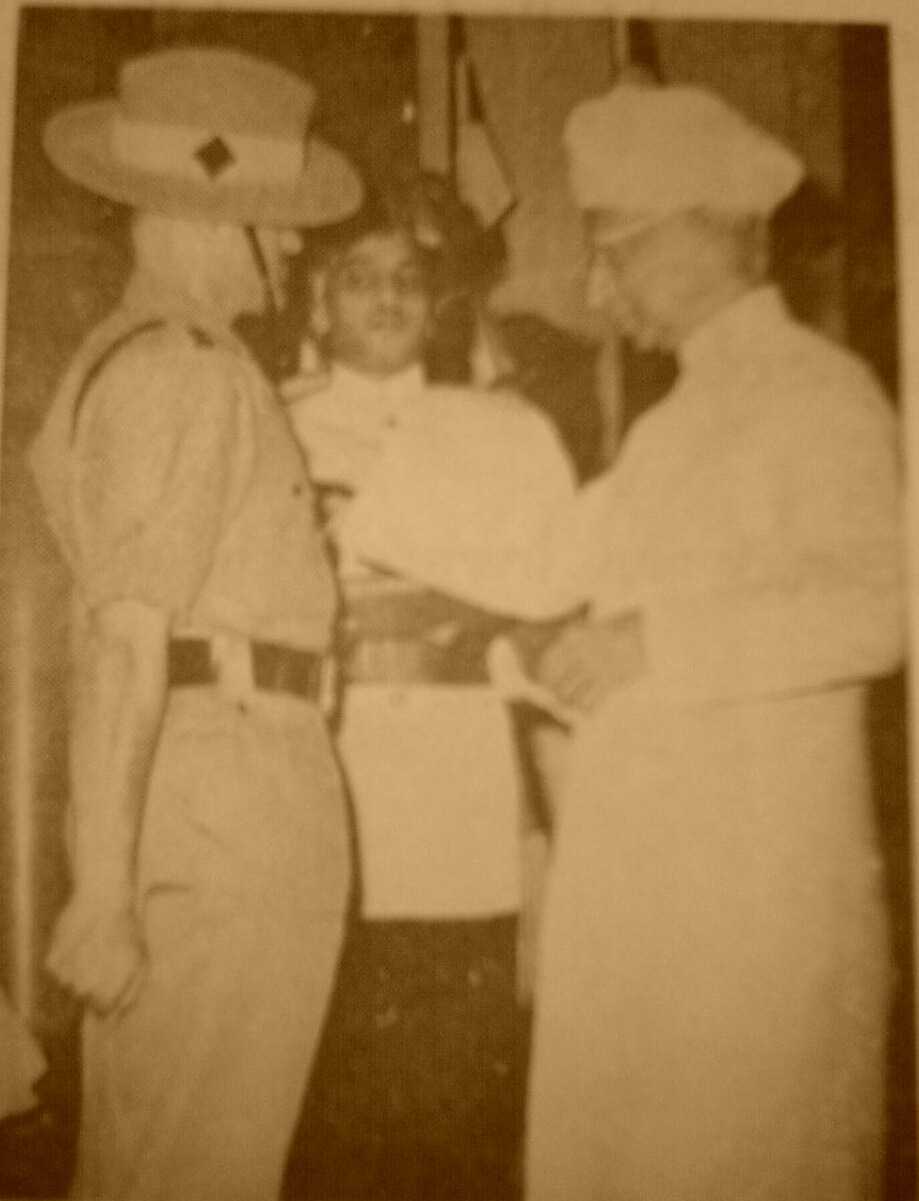
Second Lieutenant Bhagwan Dutt Dogra, son of Shri Dewan Chand was born on 25 September 1941, at Lahore. He was commissioned in 9 Gorkha Rifles on 10 June, 1962.
Second Lieutenant Dogra was posted on the left flank of the battalion that guarded the track leading to the position held by the Gorkha Rifles in the Tsangdhar area NEFA. The Chinese subjected his position to heavy shelling on the morning of 20th October, before attacking in force. The officer moved from bunker to bunker enthusing and inspiring his men. He suffered a grievous injury in the process but continued fighting. When his gunner was hit he took over the light machine gun and used it to devastating effect. Ultimately the Chinese destroyed the gun and 2nd Lt Dogra was captured.
His daring act and inspiring leadership won him the Mahavir Chakra.
Major S.P.S. Shrikent, son of Dr. S. S. Shrikent, was born on 12 June 1929, at Dinapur, Bihar. He was commissioned in 9 Gorkha Rifles on 10 December, 1950. Subsequently, he rose to the rank of Brigadier.
He was the adjutant of his regiment in NEFA when on 20th October 1962 the Chinese overran and surrounded the battalion headquarters. Major Shrikent, finding the situation desperate, snatched a sten gun from an orderly, rallied the few survivors of the battalion headquarters, gallantly charged the enemy with complete disregard for his personal safety and inflicted heavy losses on the advancing Chinese.
In this action, Major Shrikent displayed courage and leadership of a high order for which he was awarded Mahavir Chakra.
Rifleman Jaswant Singh Rawat, son of Shri Guman Singh Rawat, was born on 19 August 1941, at village Baryun, Pauri Garhwal, Uttar Pradesh. He joined Garhwal Rifles on 19 August, 1960.
During the 1962 war with China, the 4 Garhwal defended bridge No.3 near Nuranang along India's northeast frontier. Early on 17th November, the Chinese launched two successive attacks to dislodge the Indians from this position. But the Indians held on. The third attack was a three-pronged one, supported by heavy mortar and artillery fire. A medium machine gun threatened the defences of the Garhwal platoon. Rifleman Rawat and two others, a Lance Naik and another Rifleman volunteered to destroy the machine gun. As the Lance Naik provided covering fire, Rifleman Rawat and his companion hurled grenades, that killed and wounded some Chinese soldiers. Rawat then rushed forward and snatched the gun from the Chinese. However, while returning, he was struck fatally on the head by enemy fire. He died holding the gun he had captured.
Rifleman Jaswant Singh Rawat was awarded the Mahavir Chakra posthumously for his exceptional courage and initiative.

Captain Chander Narain Singh, son of Captain Balwant Singh, was born on 2 July 1939, at Srinagar, Garhwal, Uttar Pradesh. He was commissioned in Garhwal Rifles on 11 June, 1961. His uncle retired as Major General of Indian army.
On 5th August 1965, Pakistani army infiltration was sighted in Poonch, close to the Infantry Brigade headquarters. Immediately, a patrol commanded by Captain Chander Narain Singh was dispatched to locate and liquidate them. Barely an hour later, the patrol halfway up a hill range encountered savage Pakistani machine gun fire. Despite losing one man in this initial skirmish Captain Singh moved towards the enemy's flank. Two light machine guns were effectively silenced.
Captain Singh commenced his final attack at night. He led his small band of men in the charge to within 50 metres of the enemy when he was killed by a burst of machine gun fire. However his men continued the attack and liquidated the enemy, capturing large quantities of arms and ammunition in the process.
For his heroism, Captain Chander Narain Singh was decorated with the Mahavir Chakra posthumously.
Lieutenant Colonel Raghubir Singh Rajawat, son of Shri Pratap Singh, was born on 2 November 1923, at Sheora, Jaipur, Rajasthan. He was commissioned in Rajputana Rifles on 18 April, 1943. Subsequently he rose to the rank of Brigadier.
Lt. Col. Raghubir Singh was commanding a battalion of the Rajputana Rifles Regiment during the battle of Asal Uttar. Between 7 and 10 September 1965, the unit was attacked by Pakistani forces. On 9th September at 2100 hours, in moonlight, the enemy forces launched a ferocious attack with tanks and managed to overrun the forward company positions. Lt. Col. Raghubir Singh, anticipating the enemy's assault, left his command post and regardless of personal safety moved up to those companies past three enemy tanks. He entered the positions under intense enemy artillery fire and established contact with the company commanders.
This example of courage, determination and leadership on the part of the Commanding Officer inspired the men to defy the enemy tanks and under his command they destroyed 20 enemy tanks.
For his outstanding bravery Lt. Col. Rajawat was awarded Mahavir Chakra.
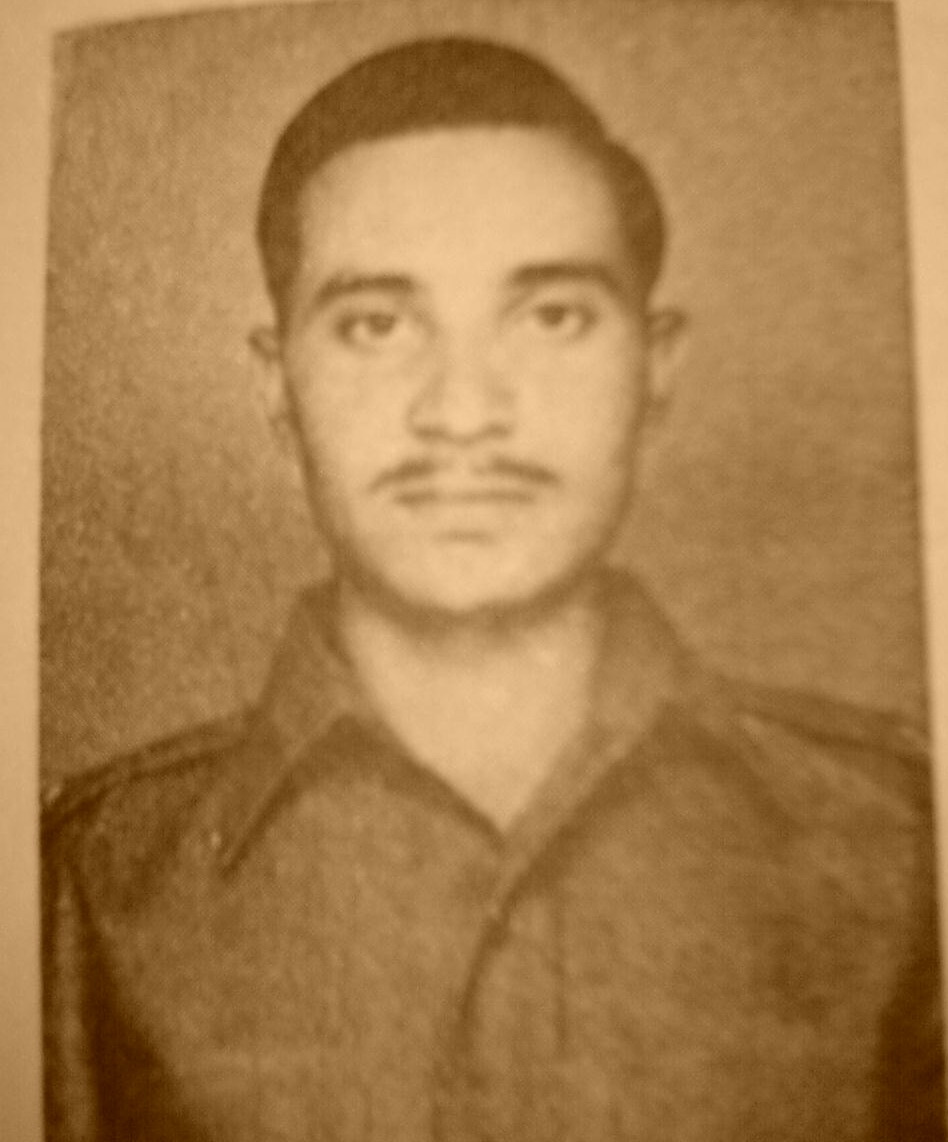
Major Anup Singh Guhilote, son of Lt. Col. Dalel Singh, was born on 19 September 1940, at Nangloi village, Delhi. He was commissioned in Dogra Regiment on 11 December, 1962.
Dogra regiment was deployed in Laksham in the east, during the battle of 1971. The regiment's mission was to move into enemy-held territory on the night of 3rd December, and put up road-blocks all along the Chauddagram-Laksham road. By the first light of dawn the next day, the regiment accomplished this under Major Gahlaut's command. The next day, two companies of the Dogra regiment surged ahead and had two enemy platoons trapped. The Pakistanis, refusing to surrender, engaged the Indian troops in a bitter battle. Major Gahlaut led one platoon from the front, but was surprised by an unexpected enemy attack from the rear. He, however, rallied his troops, urging them to beat back the enemy. There was a fierce hand to hand fight. The major sustained grievous wounds but refused to give in. Though bleeding profusely, he fought on. The Pakistanis were finally beaten back. The exhausted Major collapsed on the battlefield, and died shortly thereafter.
For displaying exemplary leadership Major Gahlaut was awarded Mahavir Chakra, posthumously.
Lieutenant Colonel Rajkumar Singh, son of B.S.Thakur, was born on 25 December 1934, at village Bharaut, Merrut, Uttar Pradesh. He was commissioned in Punjab Regiment on 4 December, 1954. Subsequently he rose to the rank of Brigadier.
During the Indo-Pak war in November 1971, Lt Col Rajkumar Singh commanded a battalion of 14 Punjab Regiment. On 20 November he was assigned the task of occupying a defended position in the area Garibpur-Jaganathpur on the Eastern Front to contain the enemy intruding into the Indian territory. He planned and organised the defences held by his battalion with great skill and professional competence. The enemy attacked the area with two infantry battalions and a squadron of tanks. Lt Col Rajkumar Singh directed his troops with great courage and confidence. With utter disregard for his personal safety, he moved from one company locality to another inspiring his junior commanders and troops. The enemy launched three determined attacks but all were beaten back with heavy losses. Pakistanis left 350 dead behind. Indian army lost 90 men. Throughout, Lt Col Rajkumar Singh displayed conspicuous courage, exemplary leadership and professional skill.
He was awarded Mahavir Chakra for his bravery on the battlefield.
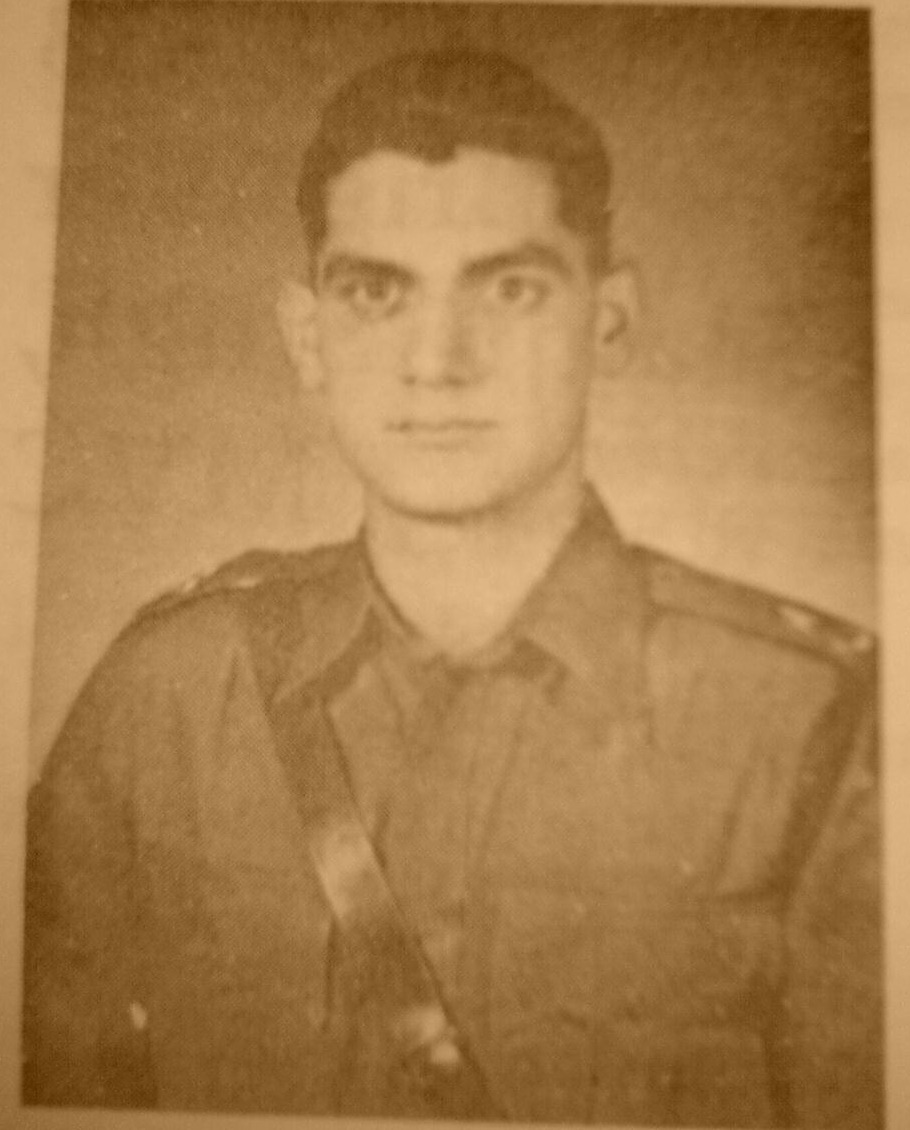
Major Basdev Singh Mankotia, son of S.B. Rai Singh Mankotia, was born on 16 April 1941, at village Sidhpur Garh, Kangra, Himachal Pradesh. He was commissioned in Punjab Regiment on 11 December, 1962. His father, grand father and great grand father had served Indian Army with distinction.
During the Indo-Pak war in December 1971, Major Basdev Singh Mankotia commanded the outpost of Ranian Screen that guarded the approach to Amritsar. On 3rd December, Pakistan launched the first of its attempts to capture Ranian. Supported by heavy artillery fire, the Pakistanis advanced rapidly.
When they were nearly 50 meters away, the shrewd Major directed the full force of his mortar and artillery fire on the enemy, who taken by surprise, beat a hasty retreat. The second attack was also repulsed. Even as they advanced a third time, the major led a fierce counter-attack to repulse them, but sustained severe injuries. Refusing evacuation he persisted till the enemy had been driven back. Over the next few nights, the Indians were subjected to Pakistani artillery and air attacks, but the Major stood firm despite being wounded and running temperature, foiling all these attempts to capture Ranian. In all, seven enemy attacks were repulsed by him.
For his heroic defence of Ranian, Major Basdev Singh Mankotia was awarded the Mahavir Chakra.
Lt. Col. Sawai Bhawani Singh, of Jaipur is the eldest son of late Maharajah Sawai Man Singh II of Jaipur. Born on 22nd October 1931, Sawai Bhawani Singh received education in Kashmir, Dehradun and then in United Kingdom.
In 1951, Sawai Bhawani Singh, was commissioned into Indian Army in the 3rd Cavalry Regiment as a Second Lieutenant. In 1954, he was selected for the Presidents Bodyguard. In 1963 he was posted to HQ 50 (Indep) Para Brigade. From January 1964-1967, he was selected and posted as Adjutant, Indian Military Academy, Dehradun. In June 1967, he volunteered for the new Para Commando Unit and was posted to 10 Para Commando as 2nd-in-command. The following year he became the commanding officer. In 1970, he helped in training the Mukti Vahini before the commencement of the Bangladesh war.
On the night of 5 December 1971, Lt. Col. Sawai Bhawani Singh, who was commanding a battalion of the Parachute Regiment (commandos), led his men deep into the enemy territory and for four days and nights, with complete disregard for his personal comfort and safety, made skillful and relentless raids on the strongly held enemy posts at Chachro and Virawah. His inspired leadership and personal courage led to the capture of large areas of the enemy territory and created panic and confusion among the enemy, forcing him to retreat leaving behind large number of prisoners and equipment. In this operation, Lt. Col. Sawai Bhawani Singh set an example of personal courage, exceptional qualities of leadership and devotion to duty in the highest traditions of the Indian Army. He was awarded Mahavir Chakra for his gallantry. His Battalion also got 10 gallantry awards for their action in these operations. He took voluntary retirement in 1974.
When Indian Army was in action in Sri Lanka under operation Pawan at the request of then President, Prime Minister Mr. Rajiv Gandhi requested Maharajah Sawai Bhawani Singh to go to Sri Lanka and boost the morale of his old unit (10 Para). He was successful in boosting the morale of the unit and for his success, the President of India bestowed upon him the rank of Brigadier for life. This is a rare offer when a retired Army personnel has been given a promotion in rank. Besides, Brig Sawai Bhawani Singh has also served as the first Resident High Commissioner to the State of Brunei from July 1993 to January 1997.
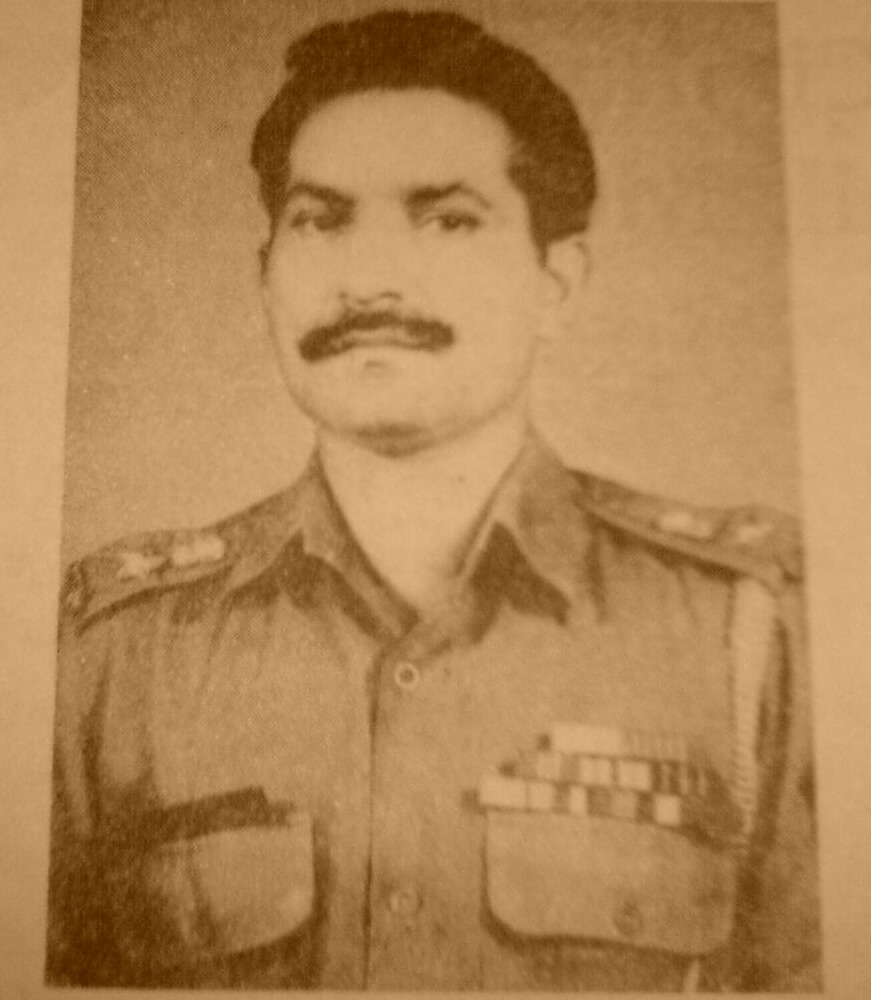
Major Jaivir Singh, son of Thakur Jai Chand Singh, was born on 25 December 1940, at village Kalai, Aligarh, Uttar Pradesh. He was commissioned in Sikh Regiment on 30 June, 1963.
Major Jaivir Singh was deployed in Chhamb on the western front during the Indo-Pak war. His company defended the crucial Phagia Ridge position.
From the 3rd of December, the enemy began first of its offensives, to dislodge the Indian forces there. The first attack was successfully repulsed, but the Pakistani troops returned with a stronger force the next day. They penetrated through Indian defence and soon a bitter hand to hand fight ensued. The brave Major exhorted his men to remain steadfast. The Pakistanis were held back for the second time with a loss of twelve lives.
The fighting was at its fiercest on December 5th . The Sikh regiment suffered heavy casualties, but led by a determined Major Singh, they not only repulsed the advance but recaptured the post on the Ridge lost earlier, Major Singh's inspiring leadership and shrewd planning had outwitted the enemy.
Major Jaivir singh was awarded the Mahavir Chakra for his exemplary leadership and courage.
In 1951, Sawai Bhawani Singh, was commissioned into Indian Army in the 3rd Cavalry Regiment as a Second Lieutenant. In 1954, he was selected for the Presidents Bodyguard. In 1963 he was posted to HQ 50 (Indep) Para Brigade. From January 1964-1967, he was selected and posted as Adjutant, Indian Military Academy, Dehradun. In June 1967, he volunteered for the new Para Commando Unit and was posted to 10 Para Commando as 2nd-in-command. The following year he became the commanding officer. In 1970, he helped in training the Mukti Vahini before the commencement of the Bangladesh war.
On the night of 5 December 1971, Lt. Col. Sawai Bhawani Singh, who was commanding a battalion of the Parachute Regiment (commandos), led his men deep into the enemy territory and for four days and nights, with complete disregard for his personal comfort and safety, made skillful and relentless raids on the strongly held enemy posts at Chachro and Virawah. His inspired leadership and personal courage led to the capture of large areas of the enemy territory and created panic and confusion among the enemy, forcing him to retreat leaving behind large number of prisoners and equipment. In this operation, Lt. Col. Sawai Bhawani Singh set an example of personal courage, exceptional qualities of leadership and devotion to duty in the highest traditions of the Indian Army. He was awarded Mahavir Chakra for his gallantry. His Battalion also got 10 gallantry awards for their action in these operations. He took voluntary retirement in 1974.
When Indian Army was in action in Sri Lanka under operation Pawan at the request of then President, Prime Minister Mr. Rajiv Gandhi requested Maharajah Sawai Bhawani Singh to go to Sri Lanka and boost the morale of his old unit (10 Para). He was successful in boosting the morale of the unit and for his success, the President of India bestowed upon him the rank of Brigadier for life. This is a rare offer when a retired Army personnel has been given a promotion in rank. Besides, Brig Sawai Bhawani Singh has also served as the first Resident High Commissioner to the State of Brunei from July 1993 to January 1997.

Major Jaivir Singh, son of Thakur Jai Chand Singh, was born on 25 December 1940, at village Kalai, Aligarh, Uttar Pradesh. He was commissioned in Sikh Regiment on 30 June, 1963.
Major Jaivir Singh was deployed in Chhamb on the western front during the Indo-Pak war. His company defended the crucial Phagia Ridge position.
From the 3rd of December, the enemy began first of its offensives, to dislodge the Indian forces there. The first attack was successfully repulsed, but the Pakistani troops returned with a stronger force the next day. They penetrated through Indian defence and soon a bitter hand to hand fight ensued. The brave Major exhorted his men to remain steadfast. The Pakistanis were held back for the second time with a loss of twelve lives.
The fighting was at its fiercest on December 5th . The Sikh regiment suffered heavy casualties, but led by a determined Major Singh, they not only repulsed the advance but recaptured the post on the Ridge lost earlier, Major Singh's inspiring leadership and shrewd planning had outwitted the enemy.
Major Jaivir singh was awarded the Mahavir Chakra for his exemplary leadership and courage.
Group Captain Chandan Singh Champawat, son of Colonel Bhadur Singh, was born on 8 July 1924, at Jodhpur, Rajasthan. He was commissioned in Indian Air Force on 27 July, 1946. Subsequently he rose to the rank of Air Vice-Marshall.
During the 1971 Indo-Pak war, Group Captain Chandan Singh was in command of an air force station on the eastern front. He had to coordinate and oversee operations involving the airlifting of commando troops to forward areas. On 8 December he was asked to airdrop 3000 troops and 40 tons of army equipment into a heavily defended enemy area. The reconnaissance missions he had led to the area, prior to the operation, helped him plan the details of his action and carried them out successfully.
As the war progressed he led over 18 such missions deep into the enemy territory. There were several occasions when his aircraft was hit. His airborne operations played a crucial role in the Indian army's successful advance to Chaka and its subsequent capture.
Group Captain Singh was decorated with the Mahavir Chakra for his exceptional drive, determination, courage and inspiring leadership.
Naik Sugan Singh Rathore son of Shri Abhay Singh, was born on 6 March 1942, at Nagaur, Rajasthan. He joined Rajputana Rifles on 6 March, 1962.
The inability of the Pakistani Dictator Yahya Khan to tide over his political failure in East Pakistan (now Bangladesh) caused him to provoke a war with India. As the opening shot of this war Gen. Yahya Khan's Air Force conducted a pre-emptive strike on Indian airfields. Barely had the Pakistanis returned from their pre-emptive strikes on 3rd December, 7th Rajputana Rifles quickly captured Dhallai an enemy post on Tripura border. On 9/10 December the battalion was involved in a ferocious battle for Mynamati ridge with a view to facilitate the capture of Mynamati Cantonment of the enemy. Advance of Naik Rathore's section was held up due to spirited MMG and small arms fire of the enemy. Naik Sugan Singh could not tolerate this affront. He boldly charged the enemy MMG post and destroyed it. In this charge he was badly hit on the shoulder. Profusely bleeding he still crawled to the second enemy MMG post and hurled a grenade killing three occupants and silencing the gun. Seriously wounded he died on account of his injuries.
For his gallant and sustained action in the face of the enemy, he was awarded Maha Vir Chakra. The unit also earned two Vir Chakras and battle honour Mynamati.
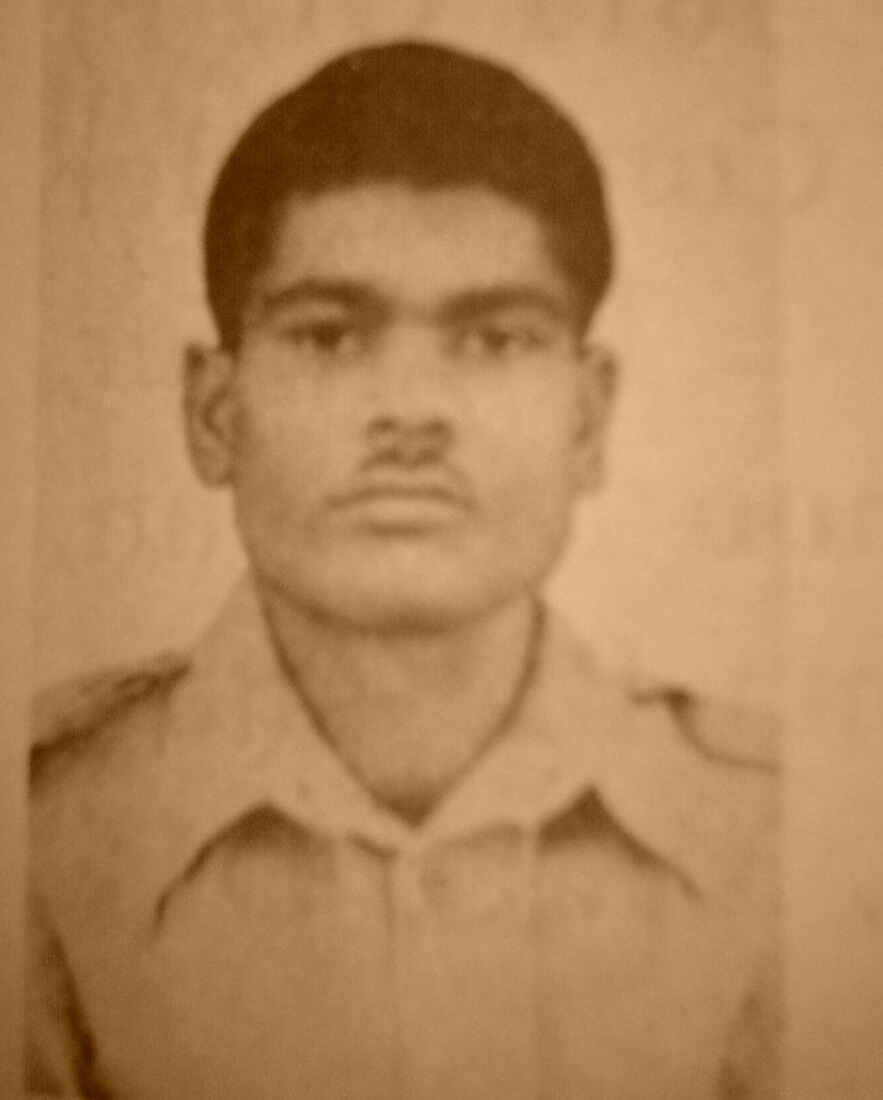
Lance Naik Drig Pal Singh Rathore son of Shri Sunder Singh Rathore, was born on 23 December 1945, at Naugma, Shahjahanpur, Uttar Pradesh. He joined Rajputana Rifles on 23 December 1965.
During the 1971 Indo-Pak war, Lance Naik Drig Pal Singh and the 15 Rajput Regiment participated in the battle of Fazilka. Two enemy medium machine guns located in the enemy bunkers claimed several Indian lives.
On the night of 13th December, determined to silence these guns, the Lance Naik, accompanied by two men, crawled towards the bunkers. He hurled a grenade that completely destroyed one machine gun, he was struck on the left shoulder by a burst of gun fire. He continued advancing but a second round of fire struck him on the chest, killing him instantly. His action, however had not been in vain. The enemy was compelled to beat a hasty retreat, leaving behind a large cache of arms.
Lance Naik Drig Pal Singh was honoured posthumously with the Mahavir Chakra.
Lieutenant Colonel Hanut Singh Rathore, son of Lt. Col. Arjun Singh, was born on 6 July 1933, at Jasol, Jodhpur, Rajasthan. He was commissioned in Poona Horse (17 Horse) on 28 December, 1952. Subsequently he rose to the rank of Lieutenant General.
During the Indo-Pak war in December 1971, Lt. Col. Hanut Singh was commanding 17 Horse in Shakargarh Sector of the Western Front. The Indian forces fought some of its toughest battles in the Shakargarh sector against Pakistani forces during the 1971 war. On 16th December, his regiment was inducted into the Basantar river bridgehead and took up positions ahead of the infantry. The enemy launched a number of armoured attacks in strength on 16 and 17 December. Undeterred by enemy medium artillery and tank fire, Lt. Col. Hanut Singh moved from one threatened sector to another with utter disregard for his personal safety, inspiring his men to remain steadfast. Not only was the enemy armour attack repulsed, 48 of their tanks were destroyed. His presence and cool courage inspired his men to remain steadfast and perform commendable acts of gallantry. Throughout this period, Lt. Col. Hanut Singh displayed conspicuous gallantry and leadership in keeping with the best traditions of the Army and was awarded Mahavir Chakra. Here Lt. Col. Hanut Singh is seen standing on his Centurion tank, Kooshab.

17 Poona Horse is one of the most decorated in the Armoured Corps and in 1965 it had already been awarded with one PVC, only to win another in 1971 at the Battle of Basantar in which 48 Pakistani tanks were destroyed. Hanut Singh is the elder brother of former Finance minister of India, Jaswant Singh Jasol (Jasol is the name of the village in Barmer district of Rajasthan). He retired as Lt. General. He is highly religious. He is an acclaimed tactician and authority in Tank Warfare, author of the official history of the Armoured Corps.
General Hanut meditated extensively at night while engaged in his duties as an army officer during the day. There is the story from the 1971 war when General Hanut retired to a shed to meditate alone. When he got up, an armed Pakistani soldier, who had been hiding in the shed the entire time, surrendered.
Colonel Udai Singh, son of Shri Khet Singh, was born on 13 January 1929, at village Garha, Jodhpur, Rajasthan. He was commissioned in 8 Gorkha Rifles on 4 June, 1950. Subsequently he rose to the rank of Brigadier. His father had also served in the Jodhpur State Force.
Col Udai Singh commanded three companies of the Gorkha Rifles deployed in the biting cold of Kargil in the north.
In December 1971, the Colonel and his men were asked to capture Chalunka and Turtok positions. The Colonel led his troops in several nightlong marches across unfamiliar areas at altitudes of 5,500 meters and more, braving subzero temperatures. At one place, they faced a strong enemy force but the colonel and his men completely outmaneuvered it. A large cache of enemy arms and equipment was seized as well. The Gurkha Rifles launched several more attacks on heavily defended enemy positions in the mountains. Despite poor communication facilities and the total absence of any artillery support, Colonel Singh led his men to success.
In this operation, spanning over eleven days, the Indian Forces eventually occupied Turtok and areas beyond it. For his skilled leadership and command Colonel Udai Singh was decorated with Mahavir Chakra.
Captain Pratap Singh, son of Captain Khazan Singh, was born on 17 January 1960, at Basai Darapur village, Delhi. He was commissioned in the Regiment of Artillery on 27 August, 1983. His father was a decorated soldier of WW 2.
Captain Pratap Singh's Regiment was part of the Indian forces that defended Bana outpost against Pakistani forces in the summer of 1988.
The enemy had already made several attempts to capture Bana and on 9th May an enemy commando group made a determined attack equipped with ropes and ladders. Though the attack was driven back, enemy ropes and ladders remained in place. They had to be removed to ensure the safety of the outpost. On 18th may Captain Singh accompanied by a jawan descended the wall, to remove the ropes and ladders. At the bottom he found a huge cache of ammunition and grenades. As he was examining his find a grenade suddenly exploded, wounding him in the arms and chest. But the captain completed his mission entrusted to him. He cut the ropes and dislodged the ladder system. Only then did he return to his post where he soon succumbed to his wounds.
Captain Pratap Singh was posthumously honoured with the Mahavir Chakra for his devotion to duty and courage.
While Major Rajesh Singh Adhikari was leading his team towards the objective, he was fired at from two mutually supporting bunkers with universal machine guns. The officer immediately directed the rocket launcher detachment to engage the bunker and without waiting, rushed into the bunker and killed two intruders in close quarter combat. Thereafter, the officer, displaying presence of mind under heavy fire, ordered his medium machine gun (MMG) detachment to fix position behind a rocky feature and engage the enemy. The assault party continued to inch their way up. Despite suffering grievous bullet injuries, Major Rajesh Singh Adhikari continued to direct his sub unit. Refusing to be evacuated, the officer charged at the second bunker and killed one more occupant, thus capturing the second bunker at Tololing which later facilitated capture of Point 4590.
For conspicuous gallantry and supreme sacrifice, Major Rajesh Singh Adhikari was honoured with the Maha Vir Chakra, posthumously.
Victoria Cross winners
- Lance Dafadar Gobind Singh Rathore
- Chatta Singh
- Darwan Singh Negi
- Gobar Singh Negi
- Prakash Singh Dogra
Gobind Singh (7 December 1887 - 9 December 1942) was 29 years old, and a Lance-Dafadar in the 28th Light Cavalry, Indian Army, attached to 2nd Lancers during the First World War when the following deed took place for which he was awarded the VC.
On 1917-12-01 east of Peizieres, France, Lance-Dafadar Gobind Singh three times volunteered to carry messages between the regiment and brigade headquarters, a distance of 1.5 miles (2.4 km) over open ground which was under heavy fire from the enemy. He succeeded each time in delivering the message, although on each occasion his horse was shot and he was compelled to finish the journey on foot. He later achieved the rank of Jemadar. He belongs to Nagaur District of Rajasthan.
The medal is currently displayed in his regiment 2nd Lancers (G.H.) in India, and the regiment is currently located at Meerut (U.P.).
Chatta Singh (1886- March 28, 1961) was approx. 29 years old, and a Sepoy in the 9th Bhopal Infantry, Indian Army during the First World War when the following deed took place for which he was awarded the VC.
On 13 January 1916 during the Battle of the Wadi, Mesopotamia, Sepoy Chatta Singh left cover to assist his commanding officer, who was lying wounded and helpless in the open. The sepoy bound up the officer's wounds and then dug cover for him with his entrenching tool, being exposed all the time to very heavy rifle fire. For five hours until nightfall he stayed with the wounded officer, shielding him with his body on the exposed side. He then, under cover of darkness, went back for assistance and brought the officer to safety. He later achieved the rank of Havildar.
Darwan Singh Negi (November 1881- 24 June 1950) was approx. 33 years old, and a Naik in the 1st Battalion, 39th Garhwal Rifles, Indian Army during the First World War when the following deed took place for which he was awarded the VC.
On the night of 23/24 November 1914 at Festubert, France, the regiment was engaged in retaking and clearing the enemy out of trenches. In this very dangerous operation Naik Darwan Singh Negi was the first to push round every traverse. Although he was wounded in the head and in the arm, he kept on going forward in the face of heavy fire from bombs and rifles at very close range. He later achieved the rank of Subedar.
His Victoria Cross is on display in the Garhwal Rifles Museum in Lansdowne, Uttaranchal.
On 1917-12-01 east of Peizieres, France, Lance-Dafadar Gobind Singh three times volunteered to carry messages between the regiment and brigade headquarters, a distance of 1.5 miles (2.4 km) over open ground which was under heavy fire from the enemy. He succeeded each time in delivering the message, although on each occasion his horse was shot and he was compelled to finish the journey on foot. He later achieved the rank of Jemadar. He belongs to Nagaur District of Rajasthan.
The medal is currently displayed in his regiment 2nd Lancers (G.H.) in India, and the regiment is currently located at Meerut (U.P.).
Chatta Singh (1886- March 28, 1961) was approx. 29 years old, and a Sepoy in the 9th Bhopal Infantry, Indian Army during the First World War when the following deed took place for which he was awarded the VC.
On 13 January 1916 during the Battle of the Wadi, Mesopotamia, Sepoy Chatta Singh left cover to assist his commanding officer, who was lying wounded and helpless in the open. The sepoy bound up the officer's wounds and then dug cover for him with his entrenching tool, being exposed all the time to very heavy rifle fire. For five hours until nightfall he stayed with the wounded officer, shielding him with his body on the exposed side. He then, under cover of darkness, went back for assistance and brought the officer to safety. He later achieved the rank of Havildar.
Darwan Singh Negi (November 1881- 24 June 1950) was approx. 33 years old, and a Naik in the 1st Battalion, 39th Garhwal Rifles, Indian Army during the First World War when the following deed took place for which he was awarded the VC.
On the night of 23/24 November 1914 at Festubert, France, the regiment was engaged in retaking and clearing the enemy out of trenches. In this very dangerous operation Naik Darwan Singh Negi was the first to push round every traverse. Although he was wounded in the head and in the arm, he kept on going forward in the face of heavy fire from bombs and rifles at very close range. He later achieved the rank of Subedar.
His Victoria Cross is on display in the Garhwal Rifles Museum in Lansdowne, Uttaranchal.
Gabar Sing Negi (October 1893 - 10 March 1915) was 21 years old, and a Rifleman in the 2 /, 39th Garhwal Rifles, Indian Army during the First World War when the following deed took place for which he was awarded the VC.
On 10 March 1915 at Neuve Chapelle, France, during an attack on the German position Rifleman Gobar Sing Negi was one of a bayonet party with bombs who entered their main trench, and was the first man to go round each traverse, driving back the enemy until they were eventually forced to surrender. He was killed during this engagement.
Prakash Singh Dogra was 25 years old, and a Jemadar in the 4 / 13th Frontier Force Rifles, Indian Army during the Second World War when the following deed took place for which he was awarded the VC.
On 16/17 February 1945 at Kanlan Ywathit, Burma (now Myanmar), Jemadar Prakash Singh was commanding a platoon which took the main weight of fierce enemy attacks. He was wounded in both ankles and relieved of his command, but when his second-in-command was also wounded, he crawled back and took command again, directing operations and encouraging his men. Being again wounded in both legs, he continued to direct the defence, dragging himself from place to place by his hands. When wounded a third time and dying, he lay shouting the Dogra war-cry, so inspiring his company that the enemy were finally driven off.
On 10 March 1915 at Neuve Chapelle, France, during an attack on the German position Rifleman Gobar Sing Negi was one of a bayonet party with bombs who entered their main trench, and was the first man to go round each traverse, driving back the enemy until they were eventually forced to surrender. He was killed during this engagement.
Prakash Singh Dogra was 25 years old, and a Jemadar in the 4 / 13th Frontier Force Rifles, Indian Army during the Second World War when the following deed took place for which he was awarded the VC.
On 16/17 February 1945 at Kanlan Ywathit, Burma (now Myanmar), Jemadar Prakash Singh was commanding a platoon which took the main weight of fierce enemy attacks. He was wounded in both ankles and relieved of his command, but when his second-in-command was also wounded, he crawled back and took command again, directing operations and encouraging his men. Being again wounded in both legs, he continued to direct the defence, dragging himself from place to place by his hands. When wounded a third time and dying, he lay shouting the Dogra war-cry, so inspiring his company that the enemy were finally driven off.
Saints
- Meera bai, a Rathore princess from Merta was a Bhakti Poet and sang devotional songs in praise of Lord Krishna. Some compilations of Meera's bhajans are presented here:
बरसै बदिरया सावन की, सावन की मन भावन की।
सावन मे उमग्यो मेरो मनवा, भनक सुनी हिर आवन की।।
उमड घुमड चहुं िदससे आयो, दामण दमके झर लावन की।
नान्हीं नान्हीं बूंदन मेहा बरसै, सीतल पवन सोहावन की।।
मीराँ के पृभु िगरधर नागर, आनंद मंगल गावन की।।
It is raining in the month of Savan, I like the rain coming down.
In Savan, my heart starts to pine, I hear the sound of Hari coming.
The clouds have rolled in from all sides, lightening occurs and it pours.
Tiny Tiny drops come from the clouds, and I enjoy the cool breeze.
O lord of Mira, Giradhar Nagar, the cloudy season is for singing joyfully.
हेरी म्हा दरद िदवाणाँ, म्हारा दरद न जाण्याँ कोय ।
घायल री गत घायल जाण्याँ, िहबडो अगण सन्जोय ।।
जौहर की गत जौहरी जाणै, क्या जाण्याँ जण खोय ।
मीराँ री प्रभु पीर िमटाँगा, जब वैद साँवरो होय ।।
I am in pain, and no one understands it.
Only the wounded knows the pain of the wounded, saving the fire in his heart.
Only the jeweller knows the values of the gem, not the one who lost it.
O lord, Mira's pain will only go, when the Dark One is the healer. - Beck, Dr. Sanderson (2004), India & Southeast Asia to 1875., World Peace Communications, ISBN 0976221004.
- Bhati, Hari Simha (2002), Annals of Jaisalmer: a pre-medieval history., Kavi Prakashan, ASIN B0000CPJC0.
- Bhati, Dr. Hukam Singh (2003), Bhati vamsa ka gauravamaya itihasa Vol I-II., Ithihass Anusandhan Sansthan, Chaupasani, Jodhpur.
- Bhati, Dr. Narayan Singh (1991), Maharajah Mansingh: the mystic monarch of Marwar., Maharajah Man Singh Pustak Prakash, Jodhpur.
- Bhati, Dr. Hukam Singh (1990), Maheca Rathaurom ka mula itihasa: Ravala Mallinatha ke vamsaja - Maheca, Baramera, Pokarana, Kotariya aura Khavariya Rathaurom ka sodhapurna itihasa., Ratan Prakashan, Jodhpur.
- Bhati, Dr. Hukam Singh (Editor) (1993), Mevara jagiradaram ri vigata : Maharana Amarasimha Dvi. evam Maharana Bhimasimha., Pratap Shodh Pratishtan, Udaipur 313 001.
- Bhati, Dr. Hukam Singh (Editor) (2001), Svatantrya vira Rava Chandrasena: Jodhapura ka sasaka 1562-1581., Rajasthani Shodh Sansthan, Chaupasani, Jodhpur.
- Bhati, Dr. Hukam Singh (Editor) (2002), Vira siromani Rava Amarasimha Rathaura : Nagaura ka sasaka, 1638-1644., Rajasthani Shodh Sansthan, Chaupasani, Jodhpur.
- Bhatnagar, Professor V.S. (), Essays on Bardic literature.
- Chauhan, Dr. Bindhayaraj (2003), Bharata ka Liyonidasa, Sonigira Virama de Chauhana, Jalaura: Lionidas of India Sonigira Viram de Chauhan., Arjun Singh Songara publication, Sanchore, Jalore, Rajasthan.
- Chauhan, Dr. Lal Bhadur Singh (ISBN 81-7043-429-7), Rashtra-gaurava suravira Maharana Pratapa., Atma Ram and Sons, New Delhi 110006, ISBN 81-7043-429-7.
- Choudhury, Bani Roy (2nd Ed. 1977), Folk tales of Rajasthan., Sterling Publishers, ASIN B0007ANEHY.
- Dua, Shyam (2004), The luminous life of Maharana Pratap., ISBN 8175738324.
- Framjee, Dosabhoy, (1858) The Parsees, Their History, Manners, Customs And Religion.
- Gehlote, Sukhvir Singh (2000), Svatamtrata-premi Durgadasa Rathaura., Navbharat Publications, Jodhpur 342 001, Rajasthan.
- Harlan, Lindsey (1992), Religion and Rajput Women: The Ethic of Protection in Contemporary Narratives., University of California Press, ISBN 0520073398.
- Heinemann, S O (1990), Poems of Mewar., Vintage Books, ISBN 81-85326-40-1.
- Hooja, Rima (2006), History of Rajasthan, New Delhi: Rupa & Co, 2006, ISBN 81-291-0890-9.
- Hunter, W.W. (1886), The Indian Empire, Its People, History and Products., London: Trubner & Co, Ludgate Hill, 1886, ISBN 81-206-1581-6.
- Joshi, Dr. Sanjay (2004), Unveiling Ajitsingh's Sanskrit biography : issues in Marwar history and Sanskrit poetics., Books Treasure, Jodhpur, ISBN 81-900422-1-1.
- Kadam, Vasant S (1993), Maratha confederacy : a study in its origin and development., Munshiram Manoharlal Publishers Pvt. Ltd., New Delhi, ISBN 81-215-0570-2.
- Khan, Ansar Hussain, The Rediscovery of India - A New Subcontinent. ISBN 8125015957.
- Kulke, Hermann, A History of India. ISBN: 0415154820.
- Majumdar, R.C., Raychaudhuri, H.C., Datta, Kaukinkar, Advanced History of India, ISBN 0333 90298 X.
- Mathur, Professor G.L. (2004), Folklore of Rajasthan., Publisher Rajasthani Granthagar, Sojati Gate, Jodhpur.
- Mathur, Dr. L.P (2004), War strategy of Maharana Pratap, its evolution and implementation., Publication Scheme, Ganga Mandir, Jaipur-1, ISBN 81-8182-016-9.
- Mishra, Jwalaprasad (1914), Jati Bhaskara., Khemaraj Shrikrishnadas.
- Nagar, Dr. (Kr.) Mahendra Singh (2004), The genealogical survey : Royal house of Marwar and other states., Maharajah Man Singh Pustak Prakash, Jodhpur.
- Nirala, Suryakant Tripathi (1998), Maharana Pratapa, ISBN 81-267-0836-0.
- Ojha, Dr. Gauri Shankar Hira Chand (First edition 1936, Second revised edition 1999), Sirohi rajya ka itihasa., Rajasthani Granthagar, Sojati gate, Jodhpur.
- Prakash, Ved (2005), Vira Durgadasa Rathaurha., Rajbhasha Pustak Pratishthan, Shivaji Marg, Delhi 110053, ISBN 81-88613-10-X.
- Premchand, Munshi (1998), Maharana Pratap., Sahityasagar, Jaipur 302003.
- Price, David (1829), Memoirs of the Emperor Jahangueir written by himself, Oriental Translation Committee, London 1829: republished Calcutta 1904.
- Ranade, M G (1962), Rise of the Maratha power., ISBN 1135403368.
- Rathore, Professor L.S (1991), Maharana Hammir of Mewar: Chittor's lost freedom restored., The Thar Bliss Publishing House, Jodhpur 342 001.
- Rathore, Dr. L.S Rathore (1990), The glory of Ranthambhor., Jodhpur university press, Jodhpur (India).
- Rathore, Dr. L.S (1988), The johur of Padmini : the saga of Chittor's deathless heroine., Thar Bliss Publishing House, Jaipur.
- Reu, Pt. Vishveshwar Nath (2005), Maravara ka itihasa Vol I-II., Rajasthani Granthagar, Sojati Gate, Jodhpur, ISBN 81-86103-46-5.
- Risley, H.H, (1991) People of India. ISBN: 8121505429.
- Sarada, Har Bilasa (2000), Hindupati Maharana Sanga: sacitra..
- Sarada, Har Bilas (First Ed 1917. Reprint 2003.), Maharana Kumbha: sovereign, soldier, scholar., Rupa Co. Ansari Road Daryaganj, New Delhi 110 002, ISBN 81-29100-33-9.
- Saran, Richard (), The Mertiyo Rathors of Merto, Rajasthan (2 vols.)., Series#:51; Michigan Papers on South and Southeast Asia : University of Michigan Press, ISBN 0891480854.
- Saraswat, Rawat (1984), Prithviraja Rathaura., Sahitya Akademi, Ferozeshah Road, New Delhi, 110001.
- Sharma, Professor Dashratha (First ed 1975, Reprint 2002), Early Chauhan dynasties: a study of Chauhan political history, Chauhan political institution, and life in the Chauhan dominions, from 800 to 1316 A.D., Books Treasure, Sojati Gate, Jodhpur.
- Sharma, G.N. & Mathur, M.N. (2001), Maharana Pratap & his times..
- Sharma, Dr. Sri Ram (2002), Maharana Pratap : a biography., Hope India Publications., ISBN 817871003X.
- Sharma, Dr. Vasumati (2000), Rathaura rajavamsa ke riti-rivaja: 1600-1850., Maharajah Man Singh Pustak Prakash, Jodhpur.
- Sharma 'Chandra', Yadavendra (2000), Amara Simha Rathaura..
- Simha, Thakur Udainarain (), Kshatriya Vamshavali..
- Singh, Kesri (2002), Maharana Pratap, the hero of Haldighati., Books Treasure, Jodhpur.
- Singh, Dhananajaya (1994), The house of Marwar., Lotus Collection, Roli Books, New Delhi, ISBN 8174360026.
- Singh, Patwant, (2002) The Sikhs. ISBN: 8171676243.
- Singh (IAS), Pushpendra Singh (Editor) (1999), Rathaudam ri khyata., Rajasthan Oriental Research Institute, Jodhpur.
- Sinh, Raghubir (1999), Durgadas Rathor : [national biography]., Lotus Collection, Roli Books, New Delhi, ISBN 81-7056-051-9.
- Sinh, Raghubir (1989), Studies on Maratha & Rajput history., Research Publishers, Merti Gate, Jodhpur 342 002, ISBN 81-85310-00-9.
- Smith, V.A. (2003), The Oxford History of India. ISBN 80-19-561297-3.
- Solanki, Dr. Ram Singh (1999), Rashtravira Durgadasa Rathaura., Rajasthani Shodh Sansthan, Chaupasani, Jodhpur.
- Somani, Ram Vallabh (1999), Maharana Kumbha and his times: a glorious Hindu king., Jaipur Publishing House, S.M.S Highway , Jaipur-3.
- Somani, Ram Vallabha (), Maharana Pratapa : aitihasika adhyayana., ISBN 818523454X.
- Thakur, Upendra (1974), Some aspects of Ancient India History and culture..
- Tiwari, Vinod (2005), Maharana Pratapa., Manoj Publications, Delhi 110084, ISBN 81-8133-591-0.
- Tod, James & Crooke, William (Editor) (1994), Annals and Antiquities of Rajasthan (2 vols.)., Trans-Atl, ISBN 8170691281.
- Tod, James (1996), Rajput tales: adapted and abridged from Tod's Annals and antiquities of Rajasthan., Cosmo Publications, Delhi, India, ISBN 81-7020-753-3.
- Warder, A K (1972), An Introduction to Indian Historiography..
- Wolpert, Stanley, (2003) A New History of India. ISBN: 0195166787.
- Gogunda ki khyata.
- Jalore: a history of greatest patriotic saga of Chauhan clan.
- Maharana Pratapa: eka aise vira yoddha ki jivana-gatha jisane svatantrata ke lie apani akhiri samsa taka visala Mugala samrajya se janga ki.
- Maravara ke thikanom ki puralekhiya sampada.
- Marwar-Jodhpur.
- Panna dhaya : prabandha kavya.
- Pranapala Durgadasa Rathaura.
- Relations between Marwar and the Marathas, A.D. 1724-1843 A.D..
- Survey of Kheechi Chauhan history, with biographical notes.





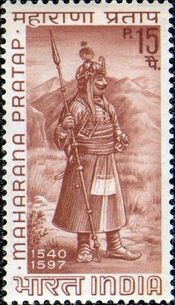
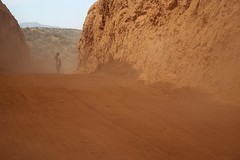

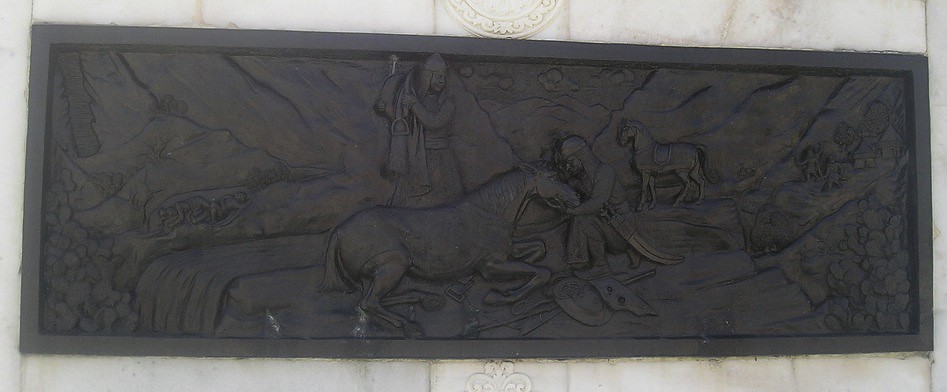

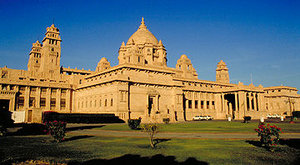

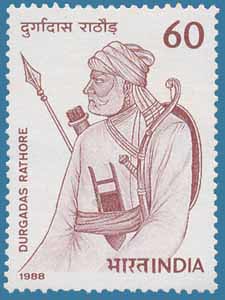
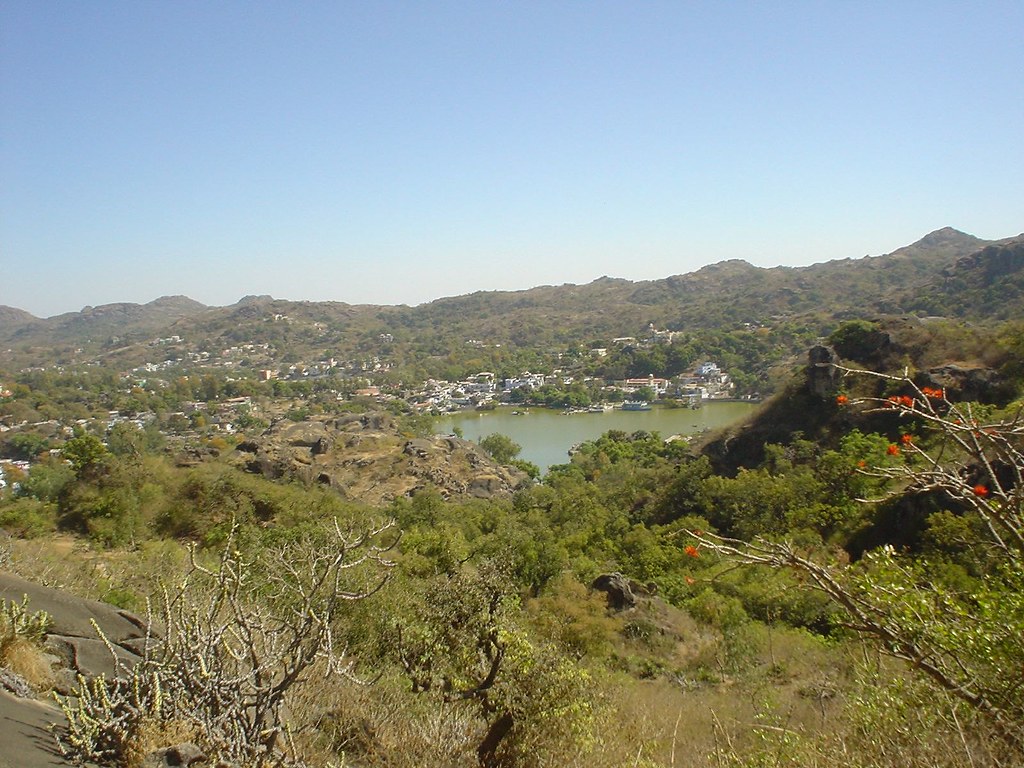

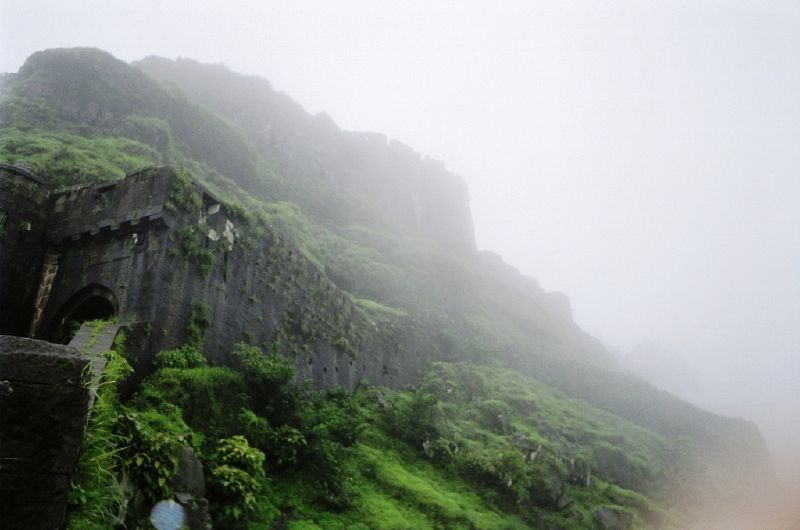








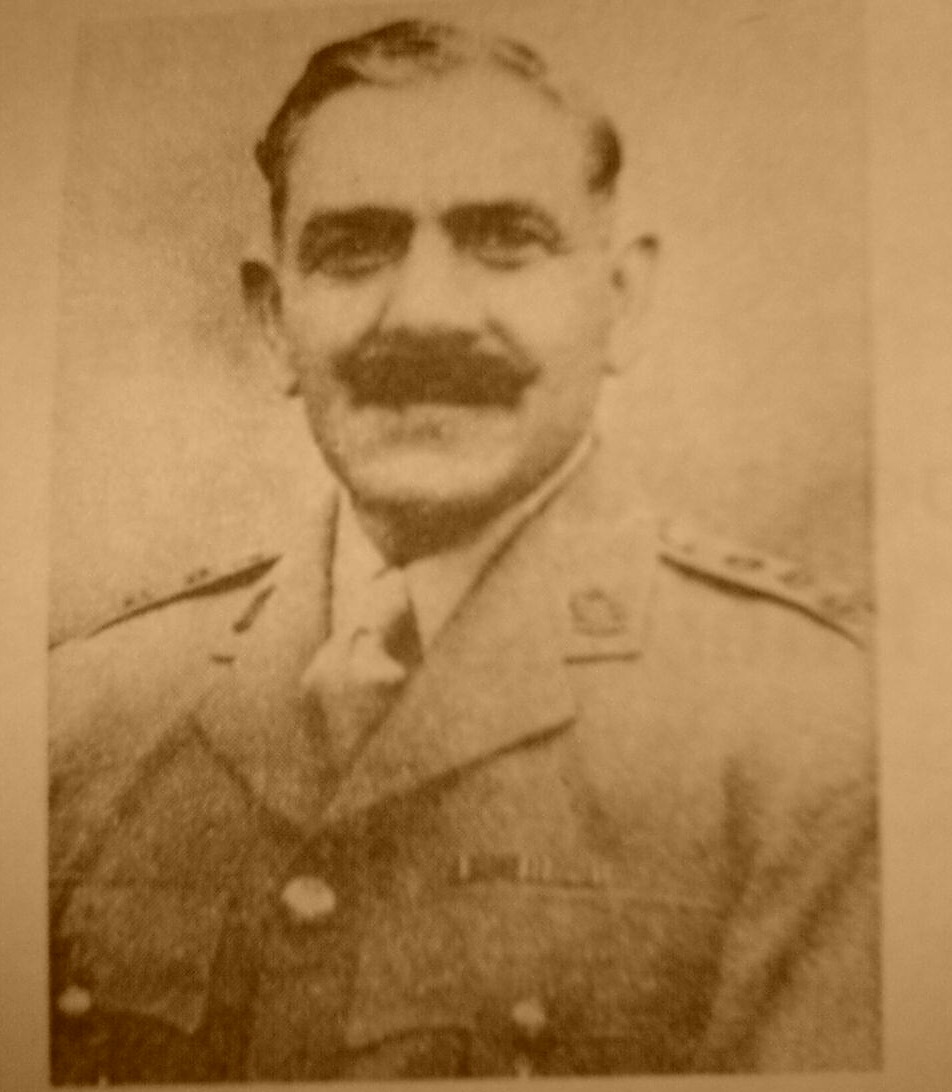

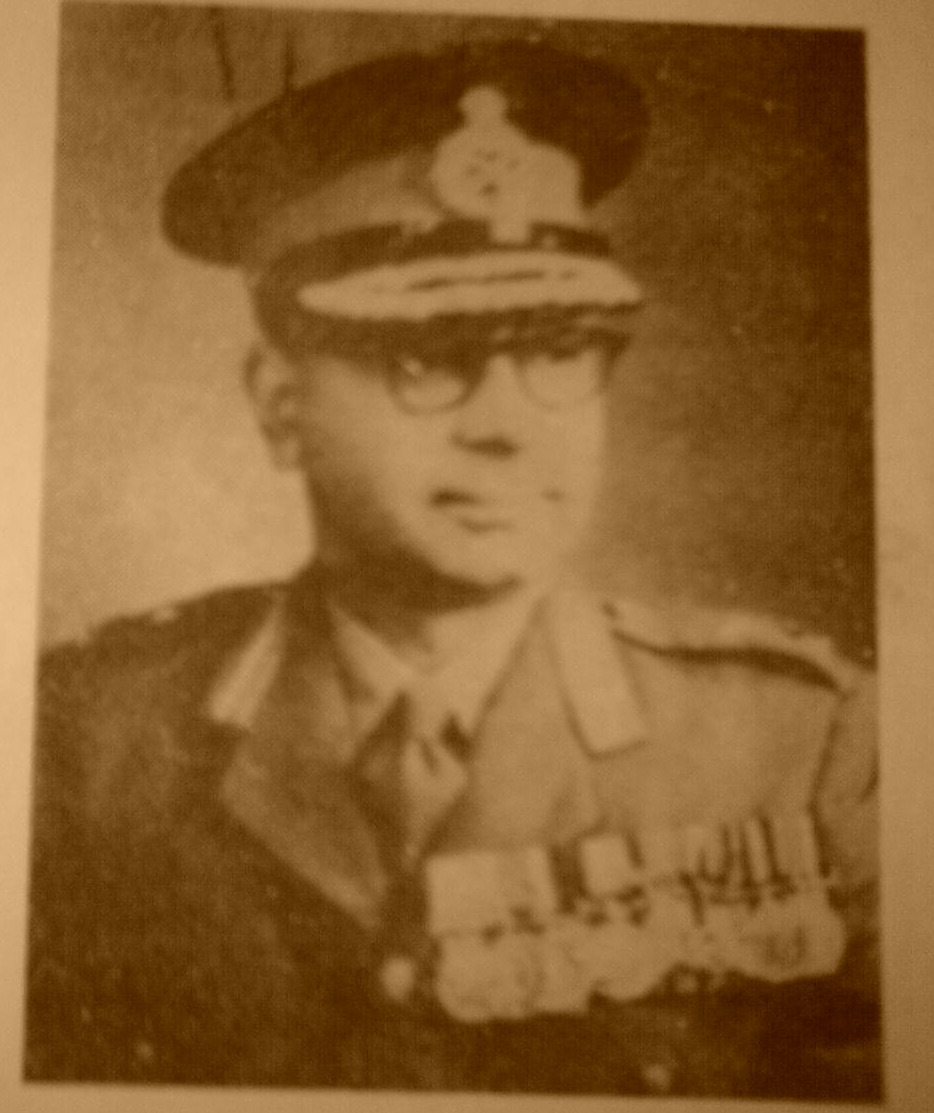

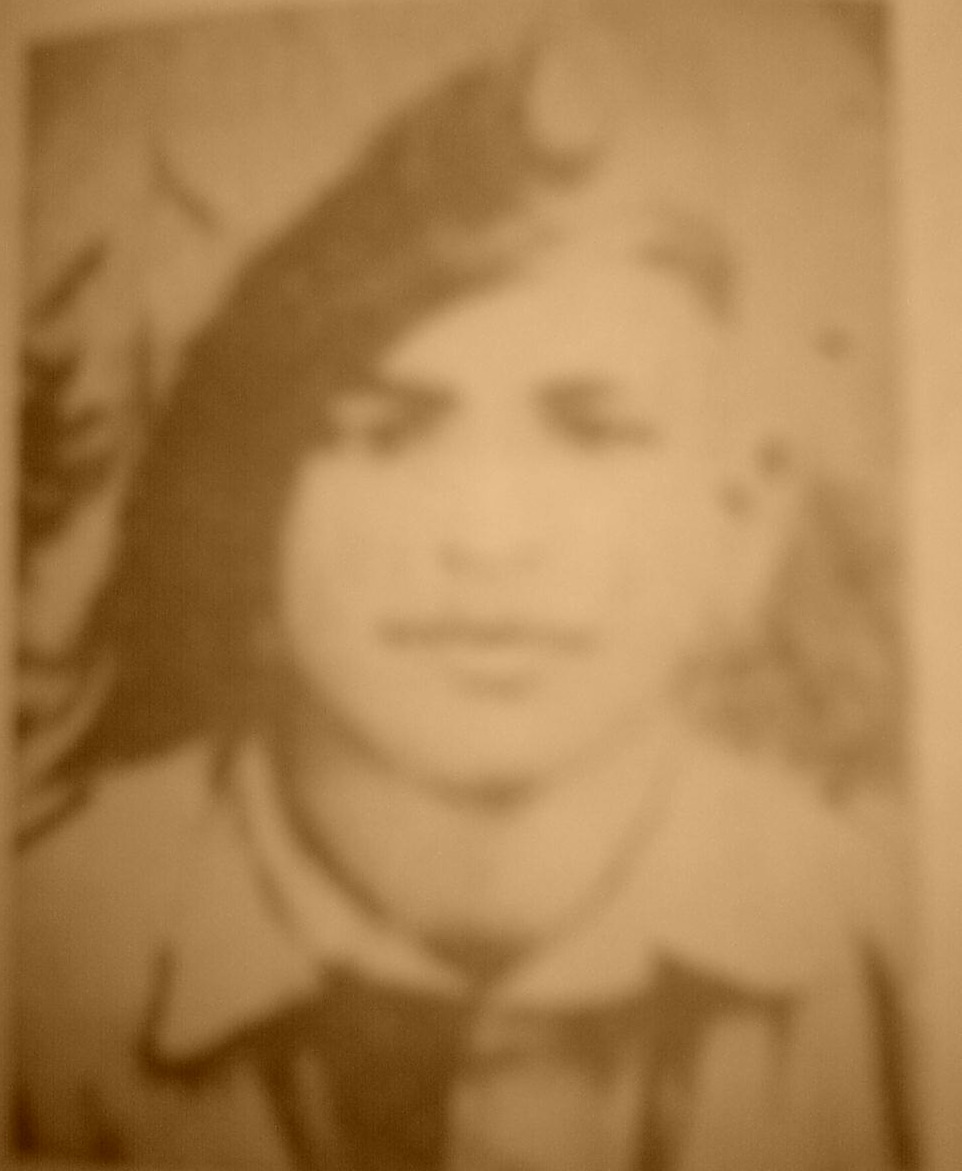

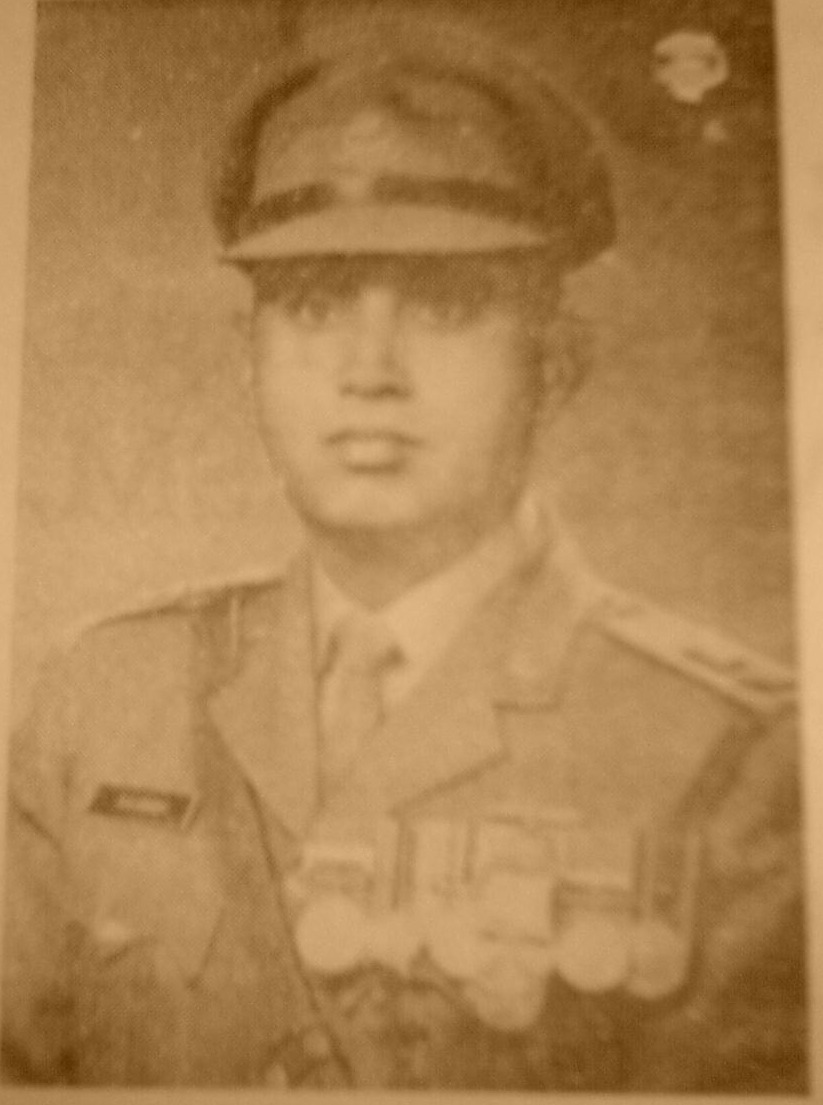

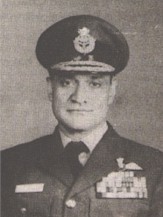

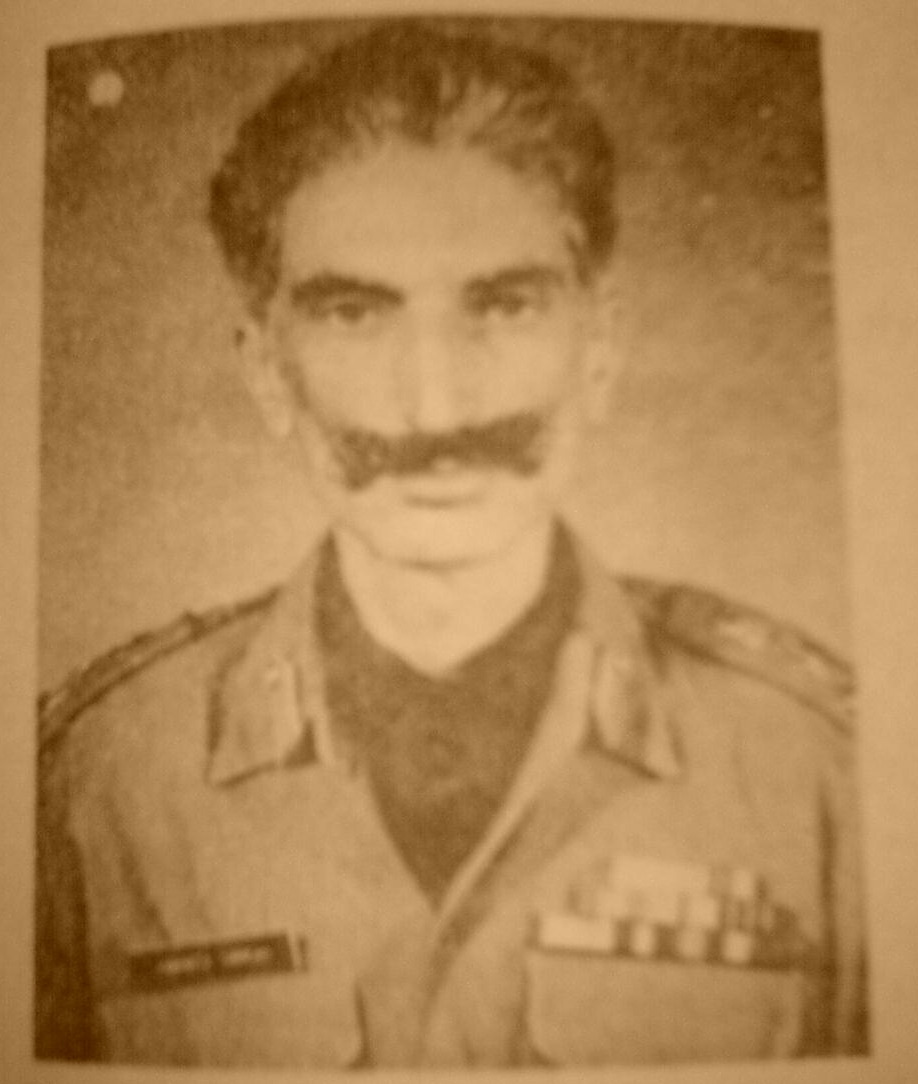
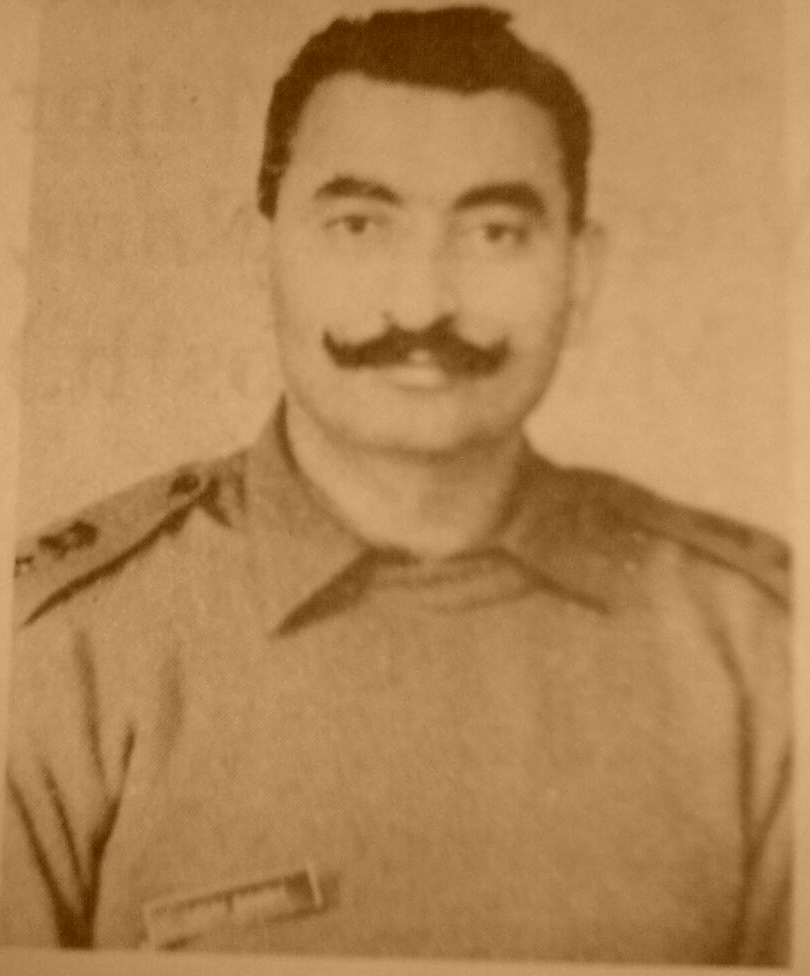
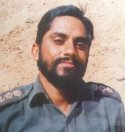






111 Comments:
What made you this detailed article man? This seems to be a thesis! I am really amazed. Very good write-up. Thanks a lot.
Banwari,
Lot of misinformation regarding the role played by Hindus in saving there religion prompted me to research what really happened.
-Digvijay
will go through the text later. but the post is awesome...loved the pics..
great research. keep it up.
Good text and pictures.
Since you belong to Rajasthan I hope to see more info on the lesser known Thikanas.
Why don't you start by posting about your own family?
Indra and Amit Thanks for your kind words.
Regards,
-Digvijay
Manipadma,
You are absolutely right. This is still work in progress. I am about to update the site with Banda Bhadur's fight against the mughal empire and how he avenged the murder of Guru Gobind Singh. Can you tell me some more about the Sodhi rajputs and there role against the Mughals?
Ranas of Nepal I have not researched much. Do you know if they fought any wars against the mughals?
Regarding the social life, today I will post a tragic love story from rajputana, though not very well known, but showing both the character and tragedy of being a rajput.
Regards,
-Digvijay
Airavat,
I will post something on Surtan Deora who is quite unknown but never bowed to Akbar and was a contemporary of Maharana Pratap.
Deora's are know for there stubbornness.
Regards,
-Digvijay
Great Work ..
As a bhartiyan, i am proud of our Rajputs.
I hope that The Tejo Mahalay (so call Taj Mahal) would be handed over to the current King of the respective Rajput dynesty.
Excellent Work !
I am sure this Blog will very well serve the purpose of providing correct information about the role of Rajputs in protecting Hinduism and fighting the barbarism.
In the time when the pseudo-secularists, communist, jihadis and christian missionaries and the jackels holding powerful positions and are out to disintegrate India by destroying the cultural values manipulating the history to appease a particular group, a true Hindu need to find the truth on his own.
I hope this blog will enlighten a few sacred hearts which beats for mother India.
Vande Mataram...
Nitinsinh Raulji
Excellent! The very word Rajput or Singh makes one feel safe. The ideal Kshatriyas.
But in my humble opinion, Arjun Singh and VP Singh do not deserve to be on that list - they only serve to tarnish the name of the Rajputs.
Also, you seem to have links on their names - but it gives an error when you click.
Thanks.
Firstly prostrations to those great Rajput Mothers who gave birth to these valiant soldiers. Secondly to the great Rajputs who established Hindu Dharma. And lastly to those great Bhakthas like Sri Meerabai whose bhajans are sung all over India even to this day.
I pray to Lord Hari to grant us Hindus Supreme Protection from all these Islamic and Christian and other influences and also to protect our pristine heritage and history so that the glory of our valiant fighers are preserved for posterity!
Jai Hind! Jaya Bharatham! Vande Mataram!
We three will be touring Rajasthan from Oct 25th onwards upto Nov 2,2006.
This information was a Godsend and I really liked the presentation and good research done.
It is high time our India will march against the Terrorists who bring so much loss to innocent life and properties like the recent 7/11 Train blasts at Mumbai.We hope Indians and especially Hindus will repel any outside forces which are trying to shake our Fundamentals of Democracy of Mahabharath.
Prof P C Rao,Pune.
2nd Oct 06
Dear Digvijay:
You might be surprised to know that I am the grandson of Pt. Bishweshwar Nath Reu, the writer of Marwar ka Itihas. But I would not comment on the subject of your blog at the moment but on the design. Just one page! Put it on a few pages, that way it would load quicker. More later. Best regards,
Amarnath Reu
Hi
Dear Blogger Found a very detailed account of history and eye opener for younger generation to know how difficult it has been there to preserve identity and Hinduism by our ancestors. Great Compilation! Congrats
SK
Great historical facts of the Rajputs of India.
Do you have this information in a book form?
There is no room for complaints.
Mewa.
hey boss great work indeed.
Arjun singh and V P singh are kshatriyas .I never knew this. Kshatriya janam se hi nahin karm se bhi hota hai. what about other 24 clans of Rajputs
regards
sanjiv
this is amazingly detailed. and yet so very interesting.
wonderful to see your passion here. may be this will make my son interested in history ..he flunked it in his last exam ....
:((
its a very well written article bro...good research..know what impress me most about the rajputs are their..strong hold to the invasion..u seen khalisthan and all the stuff..but these rajputs had some class and brain..particularly their architechture is amazing..way to go buddy..to be true cud not read it all..but definately shall its worth it..take care
prithvijit
Nicely done! lot of impressive images. Great work, really.
Hi
Really a great article. Thanks in bringing up so much information at one place.
Navdeep
This is indeed a great work ! While all of us Hindus are aware of the important role played by the Rajputs and subsequently, also by the Sikhs, in stemming the islamization of Bharath that is India, it is really sad that we are witnessing an out-of-the-way importance being given to muslims in India today.
I personally hold the present system responsible for this state of affairs today.
We, the Hindus, have lost the courage to safeguard our group and have become eunuchs. Even Bhagavadgeetha is now interpreted in pacifist terms!
Dear Digvijay,
Greetings on the detailed and meticulous article/blog. We are proud of the Rajputs and our rich heritage. Good work, keep it up.
LUCID AND EXHAUSTIVE EXPOSITION. DESERVES MY OUTRIGHT CONGRATES. WE ARE ORIGINALLY SURYAVANSHI --SISODIA CLAN FROM MEWAR CONVERTED TO JAINISM. ONE OF OUR FOREFATHERS WAS DEWAN OF MEWAR. HIS NAME WAS RAMLALL NAWALKHA. CAN I HAVE MORE DETAILS ABOUT HIM. PL. ACKNOWLEDGE AND ENLIGTHEN.
DR. P.L. NAWLAKHA
plnawalkha@hotmail.com
I enjoyed reading this and Lovely work and pictures. Only that the story of the descent as in surya , chandra, agni doesnt make sense. It is a metaphor for something?
addendum: LIKE IN HISTORY OF MUGHAL PERIOD ,SOME OF THE RAJPUTS IN THE LAST TWO DECADES OF TWENTIETH CENTURY,HAVE PLAYED A SHAMEFUL ROLE.THEY ARE 1. MR. V.P.SINGH EX-PRIMEMINISTER :THE PERSON MOST RESPONSIBLE FOR ONGOING VERTICAL DIVISIONS IN THE HINDU SOCIETY OF THIS COUNTRY.A HYPOCRATE,PAR EXCELLENCE,MAY BE REMEMBERED AS 'DISASTERSINGH'IF THERE IS DESTINED ANIHILIATION OF HINDUS FROM THIS LAND. 2. ARJUNSINGH: HE CAN DAMAGE RAJPUTS AND SO HINDUS TO ANY EXTENT FOR HIS POWER THIRST. THE NAME OF ARUNSINGH,A UPRIGHT MAN SHOULD HAVE BEEN INCLUDED. ANOTHER CREATIVE AND COMPETENT POLITICIAN WAS MADHORAO SCINDIA. DR.C.RANAWAT OF U.S.A DESRVES INCLUSION,FOR HIS EMINENCE AS ORTHOPEDIC SURGEON
:) good efforts. While i salute their efforts, looking at those marvellous palaces, my heart sunk!!
WHOSE MONEY THAT WAS? DID THEY WENT AND TRIED TO EARN THOSE MONEY BEFORE BUILDING THIS GIGANTIC ROYAL PALACE?
while a rajput or king gives present to the people, it is public's money only.
Great blog showing our true history. I was debating various western and muslim revisionists about muslim Rajputs included on various sites like Wiki etc but to no avail.
Here our forefathers fought muslims to preserve our religion and culture from the muslim jahils, these western and islamic funded revisionists are trying to usurp our pride and glory.
Dhanyavaad for the fantastic job, Digvijay.
As previously suggested, put the material on different pages or use thumbnails for images as it would load the page faster and make surfing easy for people on low bandwidth. More power to you. Any help required, please let me know.
Pavan
India
Dear Digvijay,
Your passion is amazing, befitting a Rajput!! Thanks for posting such a comprehenive time-lined Rajput history on one page. And I loved that it was one page I could simply scroll and read.
You know I've noticed over the last few years, that any bad blood between muslims and hindus in medieval India has been almost completely washed over. And there's absolutely no mention of the mughal trechery in winning confrontations at all. I am familiar with a lot of the unvarnished info from reading old rajasthan history books from M.A. level courses of 35 yrs ago!! I wish Hindus today would understand the enormity of Rajput and Sikh sacrifice made in interest of their preservation, and also that Rajputs and Sikhs would wake up from their slumber and begin dominating debates in the rule of law and legislation (arjun singh and vp singh are blots on all, so are not counted here!)
At any rate, thank you for writing this, and keep adding content.
Jai Mata Ji Ki bana,
More than i was happy to read your words, it was that there are still true rajputs out there. I am working on a book on rajputs. If you are interested in co writing it, please mail me at princebana@gmail.com.
Khama
Thought you might be interested in a new site dedicated to presenting the life and spiritual teachings of Mirabai.
http://www.gitananda.org/mirabai/mirabai.html
or
wwww.gitananda.org
Great Job, Digvijay.
I am a Hindu living in US. I love to go back often and read more. Please keep updating. You make me proud everytime I read. Rajputs, thanks for your services to Hindu religion and Hindustan.
Amit
If you really want to make relevant information about the Suryavansh Rajputs (particularly linking them to Wikipedia) than you should put the link as Kachwahas, not ]Amber' which is ambiguous in Wikipedia, if you haven't noticed so yourself.
Jai mata ji ki banna,aapka paryash kaabile taarif hai.Jaise sab ne taarif ke main bhi karna chahta hon.main bhi kaphi time se RAJPUT origin par resarch kar raha hon aap ke reserch se bht kuch naya mila jiske liye aapka dhanyawad. Digvijay ji agar aapke paas SOUD RATHORE (SHOBHA JI KE VANSAJ) ke baare main koi jaankari ho to mujhe jaror mail kare main aapka aabhari rahonaga.SOUD RATHORE wise to bht kam hain population main phir bhi yah abhi RAJASTHAN>NAGAUR>KHIMSAR>MADPURA,UTTER PRADESH,MADHYA PRADESH OR PAKISTAN main hain.agar aap mujhe kuch jaankari de sake to main aapka sukrgujar rahonga.mera e-mail Id hai sumer_astra@yahoo.co.in
aapke mail ka wait karonga.
jai bhawani
Hi,
Very Nice Information... appreciated !!
From Delhi.
Amazing research work and articles. I am a Jasrotia rajput. Keep up the work.
all things those are represented here are marvelous and create a self respect inside the soul for that these people devoted his life..
I solute all of them
jai hind
ur effort cannot evaluate first i will give u thanks for u . i am native of pratapgarh (uttar pradesh) iam somvanshi rajpoot i want to know my origin and migration from hasthinapur to prathisthanpur(allahabad) presently pratapgarh,if u have some information then provide me,
thanking u
regards,
saurabh pratap singh somvanshi
Good stuff.
It's always good to read from a different point of view. Being an Indian American, I've heard the history on the sub-continet is very lopsided.
great stuff sir,really enjoyed ur blo and pics are also awesome
Dear Digvijay,
Historical truth needs to come up the same way the Sun overcomes the clouds; no matter how dense the fog may be, the Sunlight will always chase it away!
I'm not Indian and I'm not Hindu but let me please say that I do have a deep respect and sympathy for everything that is linked to India and the Hinduism. For sure in a former life I have been part of the Rajputana family!
Please accept my thanks for allowing me to read such interesting information and please accept my best regards for you and for all your loved ones!
Hello to all the Light loving people arround the world!
Gabriel
Amazing work! I found this after researching for the same reasons you did created this blog.
Hoping to see some updates!
- The tragic romance
- Surtan Deora (a contemporary of Maharana Pratap)
Also, a quick favor
Is it possible to transliterate the third line from the opening sloka of the post (the one from the Mahabharata)?
Thanks in advance!
Very good article. Keep-up the good work.
Dear Digvijay,
It was incidental that that I happened to visit you site, but neverthless your work makes every Rajput proud.
Certainly there was a dire need for someone to come forward and properly compile our glorified history.
Your great work will not only bring awareness among rajputs, but will further elevate their status and esteem in the eyes of the world.
Praveer Singh
singhpraveer@hotmail.com
Hindus must know the Truth About their Own History or Hinduism ( & Hindus ) will be wiped out .Already Hindu Women are prostituting Bollywood , thanks to islamic underworld .
Truth About Akbar
------------------
( Copy & Paste to Browser )
www.hindubooks.org/dynamic/modules.php?name=Content&pa=showpage&pid=1897&page=3&
Akbar's Cruelties
-----------------
In cruelty, Akbar ranks among the worst sadists of history. Vincent Smith says (Pg. 20) "that in privately executing Kamran's son (Akbar's own cousin) at Gwalior in 1565 A.D. Akbar set an evil example, imitated on a large scale by his descendants Shahjahan and Aurangzeb." The atrocities perpetrated by Shahjahan and Aurangzeb were, therefore, not of their innovations but well- worn traditions handed down by their illustrious ancestor Akbar. It could not have been otherwise because if we believe that humanity shed its medieval cruelty and uncouth ways over a number of generations, then Akbar who was two or three generations removed from Shahjahan and Aurangzeb, must be many time more cruel than his worthy (?) descendants.
On November 6, 1556 A.D., the day after the battle of Panipat, when Hemu was brought before Akbar, wounded and semi-conscious, "Akbar smote Hemu on the neck with his scimitar," says Smith. Akbar was then just 14 years of age. Even from that young age he glorified in the cowardly killing of helpless and prostrate enemies; such was the upbringing of Akbar the Great!
After the battle of Panipat, Akbar's victorious army entered Delhi and then Agra, in state. In accordance with the ghastly Islamic custom, towers were built at both places with the heads of the slaughtered Hindu enemies. Immense treasures were taken from the family of Hemu. Hemu's aged father was summarily executed. (Pg. 30 of Vincent Smith's book on Akbar)
In suppressing Khan Zaman's revolt his confidant Muhammad Mirak "was tortured for five successive days on the execution ground. Each day he was trussed up in a wooden frame and placed before one of the elephants. The elephant caught him in his trunk and squeezed him and flung him from one side to the other...Abul Fazl relates this horrid barbarity without a word of censure." (Pg. 58)
After the capture of Chittor, says Smith (Pg. 64): "Akbar exasperated by the obstinate resistance offered to his army, treated the garrison and town with merciless severity...The emperor ordered a general massacre which resulted in the death of 30,000. Many were made prisoners."
The greatest indictment of Akbar is perhaps presented by the great historian Tod's remark that in Chittor "The emperor's proceedings were marked by the most illiterate atrocities..."
In November 1572 A.D. when Akbar defeated and captured the Ahemdabad ruler Muzaffar Shah, he ordered his opponents to be trampled to death by elephants. Hamzaban, commander of Akbar's forces laying siege to Surat in 1573 A.D. was barbarously punished by Akbar by the excision of his tongue.
Masud Hussain Mirza, a near relation of Akbar, who had risen in revolt, had his eyes sewn up after capture. His other 300 supporters were drawn up before Akbar "with the skins of asses, hogs and dogs drawn over their faces. Some of them were executed with various ingenious tortures. It is disgusting to find a man like Akbar sanctioning such barbarities which he inherited from his Tartar ancestors," says Smith.
These instance (and there are many, many more) should suffice to convince the reader that Akbar's whole reign is a continuous tale of horrid cruelties
Akbar's Perfidy
------------------
Smith's account of Akbar's reign contains numerous instances of Akbar's perfidy. On page 57 he says: "An extraordinary incident that occurred in April while the royal camp was at Thaneshwar, the famous Hindu place of pilgrimage to the north of Delhi, throws a rather unpleasant light upon Akbar's character."
"The Sannyasins assembled at the holy tank were divided into two parties, called the Kurs and the Puris. The leader of the latter complained to the king that the Kurs had unjustly occupied the accustomed sitting place of the Puris, who were thus debarred from collecting the pilgrims' alms." Akbar asked them decide the issue by mortal combat. They were drawn up on either side with their arms drawn. In the fight that ensued, the combatants used swords, bows and arrows and stones..." Akbar seeing that the Puris were out-numbered, gave the signal to some of his savage followers to help the weaker party." In the fight between the two Hindu sanyasin sects, Akbar saw to it that both were ultimately annihilated by his own fierce soldiers.
At the battle of Haldighat, when Akbar's forces were ranged against Rana Pratap's, it was mainly a fight between Rajput and Rajput because Akbar, by his demoralizing atrocities had terrified a number of Rajput chiefs to submission and through them sought to subdue the proudest of the clan, Rana Pratap. At a time, when the two sides were locked in battle and it was difficult to distinguish between Rajputs allied to Akbar and those opposing him, Badauni fighting on Akbar's side, asked Akbar's commander where to shoot so that he may hit only the enemy. The commander replied it did not matter; he could merrily shoot in the midst of the Rajput armies and whoever was killed, it was a gain to Islam. With that assurance, says Badauni, he had no difficulty and he started with gay abandon, secure in the belief that no precautions were necessary. (During the first World War, when the Indian army was deployed in the Crimea, the Muslims soldiers of the same Indian army, stationed behind the Hindu soldiers, shot them at the back, killing many. The Muslims' grouse was that they did not want to fight against the Turks, who were on the side of the Germans and who held the Crimea. After that incident, the British never deployed the Hindu and the Muslim soldiers of the Indian army on the same front, ever. And now India has Muslim Foreign Secretaries helping Pakistan under the table.- The Publisher.)
great work .
Though TODD is a bonafide sourceof rajput history from which most material may be derived yet for authentic rajput history following book is recommended.
"veer vinod" by kaviraja shyamaldas
publisher : motilal banarasidas,delhi
(official history of mewar"
this book also has history of other important rajput branches like bhonsle(shivaji),ranas of nepal etc.
any query is welcomed
Gr8 work dear ...............
digvijay,may i know your full name?the job u have done is great..!an extraordinary work u have done 4 our comunity....
want to know some thing more from u....why jhala femily from jhalavad r known as rana?the story behind this is somewere related with the rana pratap...!pl do some resarch work on it..and add in this if possible.and also there is some relation between this rana femily and ranas in nepal(my grandfather was told me that in past they were comming to dwarca for darsan before rajyabhishek)and there r some rana femily ruled in manali also.rana virbhadrasinh at present if i dont make mistake.is there any reletion between this all?
and one more important thing i want to ask u is, is zala(jhala) belong to chandravans?i think no its belong to suryavans and markandey gotrya...as it is in my knowledge...
dear sir/madam,
am really impressed by the hard work you have put in through. hats off!... but i feel one thing missing. how about rajputs who were in service sector like grea doctors and engineers etc. especially from sounth will make this blog more creible and true.
wish you all luck.cheers
Hi,
Great information about Rajputs and I proud to be a Rajput, History is fine but where we are today.
Every community in the country has representation Every community/cast has a representation in the govt of India but where Rajputs are? Every Leader in the country think and talk about the welfare about the people who are Dominated by upper casts. But our condition is going to worse in future if this process continue.
I am not in favor of reservation for Rajputs, because I think Any Rajput believe in open fight we don't want mercy from anyone. before listening poor(bechara) Rajput prefer to fight and die. but there should be a platform where we could show our strength.
I think Rajput community should come together to oppose the wrong decisions taken by the governments and to save our dignity.
May be I am unable to express my views but the message is clear. that this is the time where we should come together to save future of our coming generation.
SUNIL RANA
You have done a Good Job on the website; Please also have a way to track for all the Rajputs who have become muslims. Pakistan have a very large muslim Rajput population. thanks
Rajaputra as a class = Rajput class in HarSa-carita
Translation from: The Harsa-Carita of Bana. Translated by E. B. Cowell and F. W. Thomas. London: Royal Asiatic Society, 1897, 230-260.
aparedyuśca prātarevotthāya vājinamadhiruhya samucchritaśvetātapatraH samuddhūyamānadhavalacāmarayugalaH katipayaireva rājaputraiH parivRto bhairavācāryaM savitāramiva śaśī draSTuM pratasthe |HC 3.152|
The next day he rose early, mounted his horse, and with his white umbrella held above him, and a pair of white chowries waving, proceeded accompanied by only a few nobles to see Bhairavacarya, like the moon visiting the sun.
The word rājaputraiH is translated with nobles and not with kings or princes.
upalabdhanarendramāndyavārtāviSaNNa iva naSTatejasyadhomukhībhavati bhagavati bhānumati bhaNDipramukhena praNayinā rājaputralokena bahuśo vijJāpyamāno'pi nāhāramakarot |HC 5.36|
When the adorable sun, despondent as it seemed at the news of the king's sickness, bent downwards with waning splendour, he refused, despite the frequent admonitions of Bhandi and the other affectionate nobles, to take food.
The word rājaputralokena clearly speaks of a Loka or class of Rajaputras. Cologne Dictionary gives Loka: N. (also pl.) the inhabitants of the world, mankind, folk, people (sometimes opp. to "king") Manu. MBh. Etc.
… svāmibhaktiparityaktāhārahīyamānabalavikalavallabhabhūbhRti, kSititalapatitasakalarajanījāgarūkarājaputrakumārake, … |HC 5.48|
... beloved princes, having out of loyal affection abandoned sustenance, fainted with loss of strength; young nobles were prostrate on the ground from night-long watching, ...
The word rājaputra = nobles, kumārake = son, youngsters.
"शहीदों के मजार पर लगेंगे हर बरस मेले, बतन पर मरने वालो का बाकि यही निशा होगा..."
धन्वाद हमारे पूर्वजो के बारे में बताने के लिए .....
Good Work. Thank you very much.
N Singh
US
1ST OF ALL HATS OFF TO YOU SIR FOR ALL THIS HARDWORK...
WELL AS U ALSO NOW,THERE ARE HUNDREDS OF PTHER PEOPLE WHO CLAIMS TO BE A RAJPOOT & I BELIVE THAT THEY ARE RAJPOOT........
BUT LACK OF HISTORY(I GUESS)...
WELL I AM PUNDIR,& KNOW A LOT MORE THAN AN AVERAGE GUY ABOUT HIS CAST...
IS THERE ANY WAY OR BOOK BY WHICH WE CAN FIND OUT THAT HOW MUCH TYPES OF RAJPUTS ARE THERE IN WORLD...
It is the beauty of research.Simply preface and wondering end ,it is bright way to serve the human.
Muhammad Ashiq Soomro
Rahim Yar Khan Pakistan
Digvijay,
What could be said in glory of your work which resembles feelings of every heart of this martial clan.
तुम पर मेरो तनिक ही, सुन्दरी नहीं संदेह |
अपनी आत्मा एक है, दिखन की द्वे देह ||
Yogendra Singh Rathore
Proud to be a Rajput.
Gud work !
You have mentioned the hill Rajput caste which belongs to Himanchal and Jammu,but you didn't picked any name of uttrakhand,where a sizable population of rajputs lives.However,you have mentioned Dhoni's name but not as a Uttrakhand >kumaoni hill rajput.
Could you please share more anythings about Pahari Rajputs mainly Uttrakhand>Kumaonis.
Please conatct me on muk.greatest@gmail.com
Thanks :)
Mukesh
We are starting a Rajput Community Project group to unite the community and help the community members in Education etc through the projects. Please join Rajputworld yahoo group and participate in the process.
~Surendra Singh
chauhansu@yahoo.com
you have a great job .i never get too much information about Rajputs and their background .i am in Pakistan and trying my best to run and walk elders way .thanks a lot .Rajput zinda baaad.
lot of info thanks dear..but 1 thing i would like to mention u forget PRAKASH SINGH CHIB from Jammu who was awarded VICTORIA CROSS by Queen ELIZABETH AND please do mention about CHIB rajputs as they have majority in JAMMU equal to JAMWALS.hope u will listen 2 my request
JAIDEV
Really a great collection..you must add Rajputs who fought against british..like Raja Balbhadra Singh Chahlari who lost his life at the age of 16 years fighting against british govt.in 1958..
kunwar Niraj singh
bhai ji jai mata di aapne bahut hi kimati waqt jayar karke ye bahumulya kam kiya hoga............so whatever compliments from entire rajput communities as well as i personanlly r indebted to your painstaking efforts..........thanking yu as a lone worker for this gr8 information is like showing candles to sun....................
in acknowledgement of yours valiant efforts i would further like to remind yu one trivial thing ..........
bhai ji aapne hum bisen rajputs pe thoda gor ni kiya .....bhai ji hm bhi sooryavanshi clan me aate hn or gangetic plains ke mallas-saithwar naam ke jagah se originate hue hn m chahta hn ki ispar bhi thoda gor karein or thoda details aap ek english historian sir A.H.BINGLEY ki book(a hand book of rajputs) se bhi extract kr sakte hn...............................
banna baisa ! jai mata di
digvivijay bhai ji
i alongwith all the staunch rajput samjis r indebted towards your valiant efforts ....................
you have also maintained the sobereity of going through feedbacks from our rajputana kins & filials .................
bhai ji in due couse of this i would like to inform you that there is something in the rajputana clans context ............
bhai ji i belong to sooryavanshi bisen roots ..............
you could also gather elaborate information from english author sir A.H.Bingley's book(a handbook of rajputs ) ................
i belong to that community which was most primitive ..................
in short our dominion was basically in Majhauli ,Pratapgarh,Unnao etc distt of Uttar Pradesh you would have also heard about mull samrajya in ancient organisation of the dominions of mahajanpadas ..............
so plz kindly look into the matter bhai ji ......................
because we feel dejected despite being most closely related to shree Ramchandra ji as well as lichchavi vansh of buddha ji we r not given place in the description
jai rajputana
jai mata di
Thank you for all the wonderful information, Digvijay. has helped me get a new perspective of myself.
Regards,
Vikramsingh Rajput
Bombay/Dubai.
hisbeautifulmind@yahoo.com
simply great work...
Digvijay this is a phenomenal job done by you to let people be aware about the glory and valor of THE RAJPUTS.
Kudos Digvijay !!!
Dear Shri.Digvijay,
I read your blog today.Amazing work!
I appreciate you for your hardwork in making this blog very nice.
I wish and pray you for more achievements in future.
Warm regards,
Udhay Bhan
realy nice information for rajput
Thanks
Pravin
http://nadoda-rajput.blogspot.com/
Good articles !! we are recently start our new blog www.rajputyuva.blogspot.com we are it developer freelancer team can you support hindi articles about our rajput history. this way support all the indian rajput's
Regards
Ajay Singh Rajput
Hey bana!!
Awesome work ya..Rilli informative..
Thnxx..
Aakanksha
Hi,
Greatest and most elaborate text on Rajput history that i have come across with.Hats off to you man,
awesome you really rock!!!
krishna Kant Jalore
Hi..Digvijaysingh Ji,
Excellent work done by you,keep it up & want to request you to write & make aware about rajput of gujarat that is about zala's (Which are known as Rana Due to sacrifced of live for rana pratap by Our forefather's Mansinh ji so award has given as Rana pratap that all the zala's are known as RANA ),jadeja's,Gohil's Vaghela's,Parmar & many more...
cool and sufficient means to increase the knowledge I would be this!
Fantastic Job... Kudos.. My regards...
Jai mata ki Hukam ,
Excellent job done .
I wanta to discuss something about the social work related to uplifment of Rajput .
Request you to please send me the contact information to my mail id
vishwarajputsangh@gmail.com or
vishwarajputsangh@in.com
Being Rajput I am proud to have this relevant information .
Thanks
Anu
great i am really thankful to u....for this work...
"माई एडा पुत जन जेडा राणा प्रताप,
अकबर सोतो उज के जान सिराने साप"
BOLO VEER SHIROMANI SHRI MAHARANA PRATAP SINGH JI KI JAIIIIIII
JAI MATA JI
JAI RAJPUTANA
thats a great job.....
compiling all that data is really an enormous task..... thats really very good that at least someone is keeping track of "Vanshavali" of Rajputs....
I appreciate your work but I think that your facts about Bargujjars are not correct.... the wikipedia link which you have given for Bargujjar says that they are derived from gujjars.. well gujjars are "Jaat".... and Bargujjars are Suryavanshis who defeated gujjars and thats why they are called Bargujjars... they belong to the same Vanshavali as of Shri Ram ji.... they are basically Raghuvanshis... their gotra is "Attri"..... even Satyavaadi Raja Harishchand also belonged to this Vanshavali.... http://en.wikipedia.org/wiki/Suryavansha
jai mata ji ki bana
u did a great job by describing our real rajput heros
if u had any more matter pls mail me at digii.bna@gmail.com
digvijay singh rajawat
Excellent site, but Tanwar/ Tomar/ Tuar, link is not available, so please update right link..
Gaurav singh tomar
Tomardynasty.co.cc
@Pooran ..
You are right. Actually India atthat time was a extremely loose federation of occasionally warring kingdoms with socio-religous being the only way of some similarity. Rajputs fought alone with the all the fiercest and treacherous invasions for a 1000 years. When Aurangzeb ordered Shivaji be killed, it was Jaipur's estate's Kunwar Ram singh who risked his life in managing the escape of Shivaji and his son Sambhaji from Aurangzeb's Agra camp - that after Ram singh signed an agreement with Aurangzeb of ensuring Shivaji's nod for negotiations.
Khamaghani,
Virendra S Rathore
Turk aye aur gaye,
Mughal aye aur gaye,
na jane kitne aise aur ...
Ye kaun to yu hee ladti rahi
Girti rahi aur fir se Uth ti rahi
Ab is desh mein Turk naam ki koi cheez nahi .. aur na hee Mughal pehchaan bachi .. par Rajput aaj bhi khade hain aur agey bhi khade rahenge. Pehle apne kunbe aur dharm ki raksha k liye the .. ab apne desh k liye bhi !!
hii,
u r doing the great job..
i like it...
Lovely!!!!Very good research you did ,worth millions of acknowledgement !!!
Sir,Do you have any ideas about our small community of Mahiya Rajput or Maiya Darbar in and around Sourashtra region in Gujarat??
Please help us if you have further information.I am looking for our History but missing so many links,i.e., how we came from Rajasthan to be settled in Gujarat and who were our ancestors from Rajput community?
I will really appreciate,if you provide me any kind of information or source of the information for this,our whole Mahiya Rajput community will be thankful to you if you help us in this regards.
Many thanks again for making us proud to be Rajput!
I accidently came on this site when i was searching about prithviraj chauhan. I am anand from maharashtra but basically a rajasthani having roots from jodhpur (marwadi). It took me two days to read this. Wow....if it was not for the rajputs, sikhs and marathas....we all would have been offering namaz in the nearby mosque, completely in a denial mode that thousands and thousands of brave men laid their lives for us. IN todays world I see two digvijays. One is the congressi digvijay who is hell bent on destroying the hindu samaaj and other is the beautiful writer of this blog. Very well written and thanks a ton for letting us know about our brave, gallant and magnanimous forefathers. I truely salute our heroes and to you Mr. Digvijayji. Vande mataram....
thanks ,digvijay for giving us this info.
we hv realy proud of u.
U R good in writing...keep it up...Amit Singh Chandel
Excellent blog.. i am from south india, and researching on the varnashrama dharma.. I found that most of kshatriyas were head of agriculturalists in the south.. i would like to know how the society was in north..
Also in my research, the head of rajputs has to do sivapuja daily.. (eg: we have instances in ramayana where sriram did sivapuja )
Is that practice still followed there?
Could you please mail me your email id so that i could get more details?
it's very nice man.....here i can got everything about RAJPUTs.
me RANA Farrukh from pakistan
i like your detialed information about RAJPUTS.
lovely pictures and much more.
awesome....
Thanks dear Rajput
I am Hada Rajput, thanks for let us know our history, please update it Regularly, help to save this Blog FOR our Rajputs Family and child will see how their ancestors fought and the bravery in their blood, we only lives once, but Rajputs are immortals because of our History.
Thanks DIGVIJAY, You Both are the massengers, and it is definetly the connection with your past,thanks for the information you have given about Rajputs, please Dont let this blog Die.
Good History and photo.
wowwww excellent blog great job :)
jai Thakur ji maharaj ki main bhi kai saalo se rajputana ke baare main research kar raha tha aaj ye sab jaan kar mujhe apne Rajput hone par aur bhi garv ho raha ha mere Dada bhi ek sacche Desh bhakt Rajput the unka naam tha Thakur Roop Singh Raghav
aur mere nana bhi pehalwaan the 150 kg weight ko ek haath se utha lete the unka naam tha Thakur Kamal Singh Chauhan and my Father unke baare main kya kaho he is a realy great men my Father name is Th. Vijay Singh Raghav (Bishamber Singh Raghav) Raghav Vansh ke baare main agar kuch information ho to jarur net par daalna my name is Thakur Amit Singh Raghav Sam Raghav
i feel proud to be a "RAJPUT"
"Thakur" Ankit Singh Chauhan
Nice info.Also is it kumarpal charita of jayasimha or hemachandra
The blog is ultimate. this will give me detailed information about rajput.
"Proud to be Rajput"
Thanks
Jaiprakash Singh Rajpoot
Mech Engineer
Jabalpur (MP)
Hi Digvijaya
Great site. Is there any information on current descendants of people like
1. Harshavardhana
2. Prithviraj Chauhan
3. Maharana Pratap
4. Other great Rajput kings
Thanks
dear digvijay ji,I congratulate you on your hard work and research.My joy would be increased if you can include Lt. Gen. Sagat Singh and Z C Bakshi in this article.Sagat singhji was first commander to enter goa in 61,blasted chinese on nathulain 67 and achieved biggest water crossing on meghna in 71 war.Bakshi saab was most decorated indian officer till date.He got hajipir in 65.
If you need info on them,please revert.
regards,
sandeep
With the only occurrence of three Dogra brothers as Generals in the Indian Army, this trio has made world record that entered into the record books, Lt. Gen. Anup Singh Jamwal,(Retd.) Adjutant General of the Indian Army, Lt. Gen. Kuldip Singh Jamwal,(Retd.) GOC-in-C Eastern Command and Maj. Gen. Rajinder Singh Jamwal (Retd.) MGEME found themselves posted in record books. Entering the Limca Book of Records for being the first trio of brothers to be serving as generals at the same time, the three brothers served as Generals in 2006 together from February 20 to August 31. Appearing in the 2007 Limca Book of Records and is a matter of pride for our army and peoples of India.
Thanks for this article .
I read entire article straight from 3am to 6 am ,
very interesting article on Rajput samaj..
Thanks bro...
Jay Mataji..
Dhirndrasingh Chauhan
Dear Sir,
I would like to acknowledge you about the derogatory remarks about the Rajputs in wikipedia site.Earlier the content of this site was authentic and there was nothing offensive,But if you surf this link then you can yourself find that some anti-rajput elements are there which are trying to give wrong information about Rajputs to the world. The wikipedia link was considered to be authentic source of information but from the moment it has got edit functionality it is creating anger amongst us.I noticed that for few caste editing facility is there but for Rajput link.. that has been locked by some one.It means that till a particular period the malicious information present there has to be bear by the entire community. This is definitely an ill intention of a particular community who is trying to prove us down.Let's take a decision as what to be done in this regard so that such practices can be stopped.
Link:-- http://en.wikipedia.org/wiki/Rajput
(Note:offensive comment about origin of Rajputs)
Regards
Ajit Kumar Singh
Proud to be a Rajput
Jay Mataji
I am Rajendrasinh Ajitsinh Gohil, currently live in Toronto, Canada.I am the owner and developer of the www.RajputVivaaha.com. Website provides matrimonial matching services to genuine members of the Rajput community. We have been providing our matching services for over 11 years, the first 7 year of which were free of charge. With our paid memberships we are now able to provide one of the best matrimonial matching services for the Rajput community.
Our main goal is to help parents who are looking for suitable matches for their children. As we all know, our Rajput Community is spread around the globe. With www.RajputVivaaha.com we are now able to bring all Rajputs under one umbrella.
You can help us grow and achieve our goals by recommending our website to all of your Rajput friends and family.
Thank you, we appreciate your support...
RajputVivaaha.com
was the Rajput warrior code ever laid out in a text or texts detailing how one of this caste should conduct himself and live his life? Much like the house codes and later texts on 'Bushido' in Japan.
Or was it passed down orally from farther to son because I can't seem to find any texts on the subject other than historical accounts or legends demonstrating it.
PLease help!
Kind regards,
Harry
Jai Mata Ji,
I am fascinated with all the research u guys have done.... It's wonderful to know such heroic personification of Rajputs and felt more proud .......Rajput warriors spreaded over India but signified differently...like northern sides r called Rajput....southern they are kshatriyas .... Marathas in Maharashtra so on so forth....please I wud b looking forward to read more of these in near future." keep writing ....
Best regards
Udayraj Singh Parmar
जय श्री कृष्णा बहुत बहुत धन्यवाद क्षत्रियों की हिस्ट्री के लिए में भी क्षत्रियों की हिस्ट्री लिख रहा हूँ सम्पूर्ण क्षत्रियो की जिसमे भाटियों की पूरी लिख चूका हूँ और अब दूसरों की लिखा रहा हूँ कोई देखना चाहे तो देखें मेरा ब्लॉग
http://rajputanaitihas.blogspot.in/
http://surendarbhatihistory.blogspot.in/
This seems like a good article. This is better than the shoddy articles on Rajputs that are written on Wikipedia. The articles there are constantly being changed and even falsehoods are being added. Great effort for enlightening the world of true Hindu Rajputs of India!
Amazing Work done by you Digvijay..Stunned by my clan (CHOUHAN) even though whole Rajputana clan's Bravery, Stubborness, Power and Glory.. I'm a PROUD CHOUHAN..
Post a Comment
Subscribe to Post Comments [Atom]
<< Home